The ultimate 3 week Scandinavia itinerary
Some links in this post are affiliate links, which means I earn a small commission if you book through them, at no extra cost to you. This support helps keep this site running, the suitcase wheels spinning, and lets me keep writing ultra-detailed travel guides that are free for you to use to plan your next adventure.
Want to spend three weeks in Scandinavia? With charming city breaks, epic outdoor adventures and magical train rides, this 3 week Scandinavia itinerary is the perfect route to see the region’s highlights.
Planning your dream Scandinavia trip and want to cram in as much as possible without breaking the bank? I know the feeling.
During my last three month Europe trip, I spent six weeks travelling solo in Sweden, Norway and Denmark trying to navigate Scandinavia by train, tick off the must-sees and avoid bankruptcy, and I’m proud to say that I succeeded in all three… just!
But it took some serious planning, so I’ve taken everything I learnt about logistics, my can’t-miss trip highlights and some actually useful travel tips to pull together this ultimate three week Scandinavia itinerary for you to use as a starting point for your own Scandi adventure.
From cosmopolitan city breaks to charming seaside towns to rugged outdoor adventures, this detailed itinerary really has it all, and I’ve included loads of personal recommendations of what to see, where to stay and what to do, as well as the top-rated hotels and activities for different budgets.
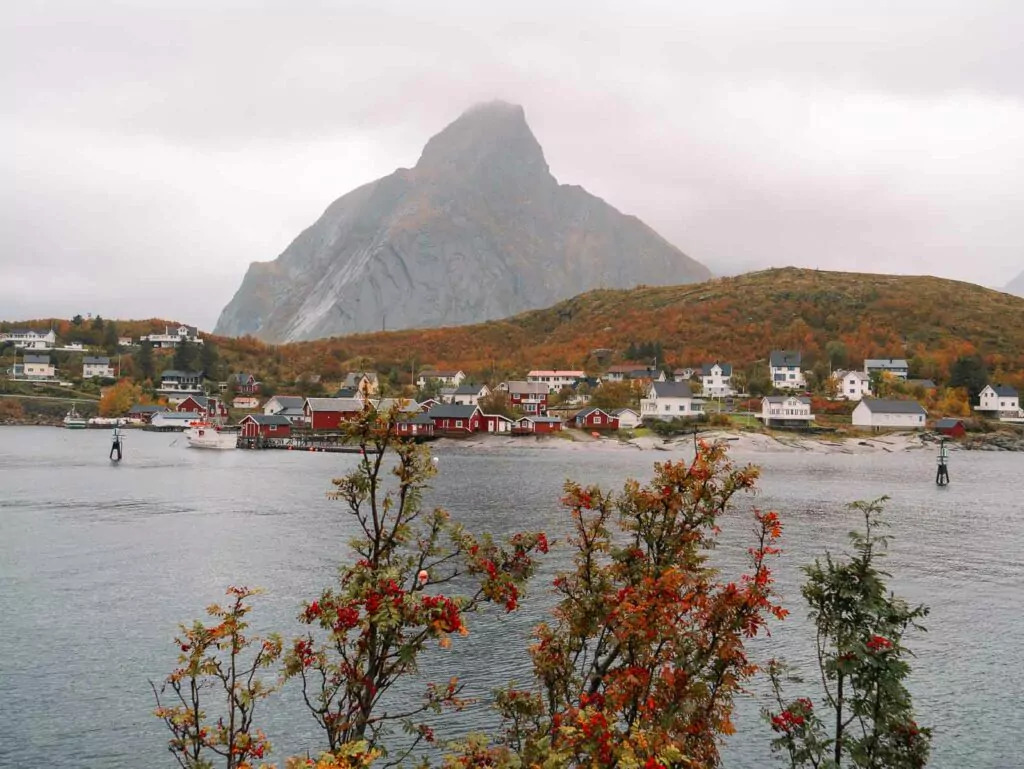
And the best thing is, you can do this entire Scandinavia itinerary by train and bus, no need to fly! That’s great for your wallet, great for your stress levels and great for the environment. I have mentioned some potential flight options for some journeys if you just want to get from A to B quickly, but there’s info on public transport for every single move to a new destination.
So let’s get started, here’s the ultimate 3 week Scandinavia itinerary to see the highlights of Denmark, Norway and Sweden.

Overview: The perfect 3 week Scandinavia itinerary
3 week Scandinavia itinerary map
(I’ve coloured the map pins in rainbow order to show the order of the destinations)
A summary of the three week Scandinavia itinerary
- Copenhagen (3 days)
- Oslo (1-2 days)
- Flåm (1-2 days)
- Bergen (3 days)
- Make your way to Trondheim (1-3 days)
- Trondheim (1 day)
- Make your way to the Lofoten Islands (1-2 days)
- Lofoten Islands (3-4 days)
- Make your way to Stockholm (1-2 days)
- Stockholm (3 days)
- Optional extensions: Helsinki & Rovaniemi in Finland, and/or the Baltics
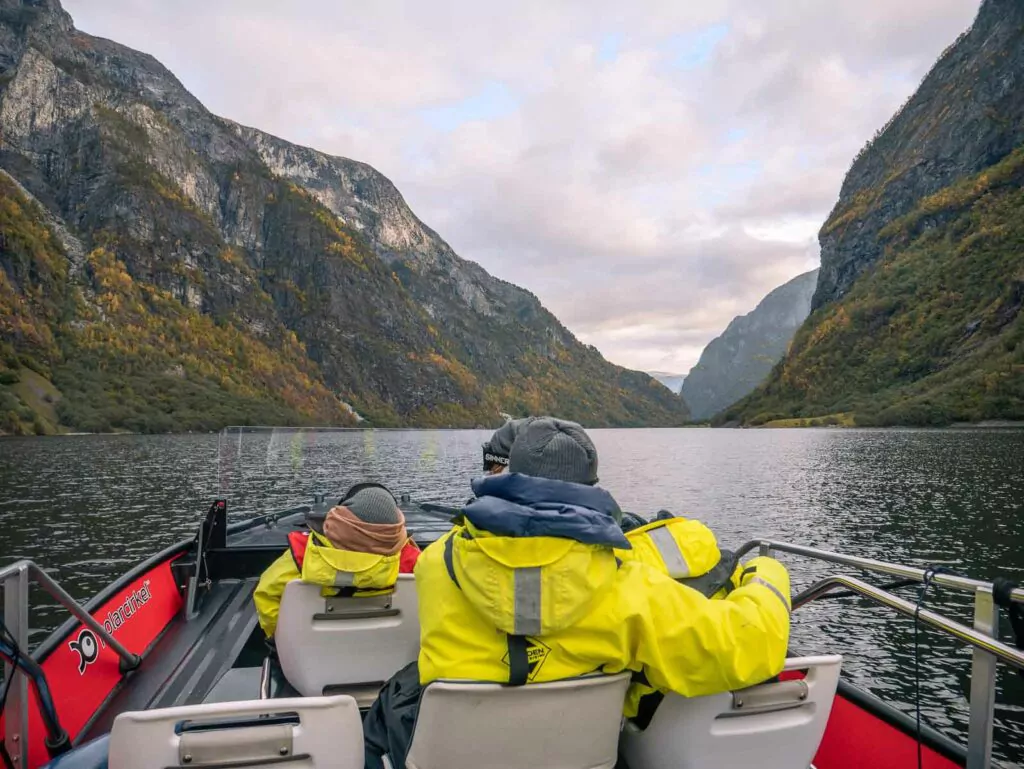
Planning your three weeks in Scandinavia
What countries are in Scandinavia?
Scandinavia refers to just three countries: Denmark, Norway and Sweden.
A common misconception is that Finland is part of Scandinavia, but that’s not the case. The term ‘Nordic countries’ however refers to Denmark, Norway, Sweden, Finland and Iceland. The more you know!
This itinerary is for three weeks in Denmark, Norway and Sweden, but I’ve included an easy Finland add-on at the end since you’ll be so close.
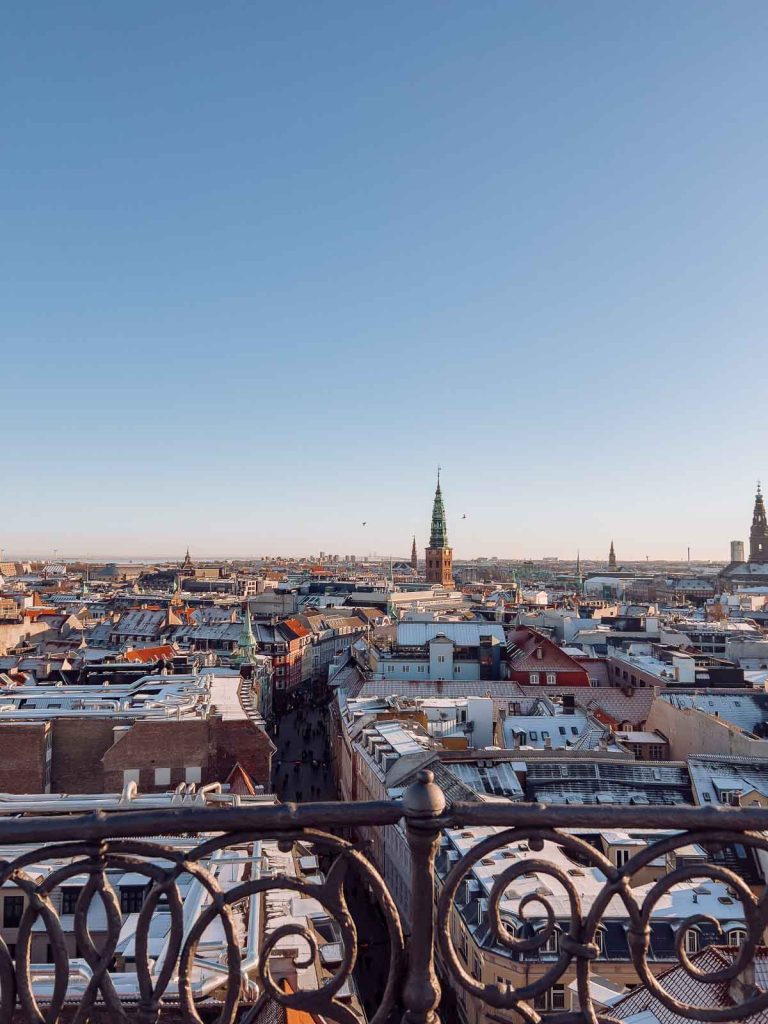
When is the best time to visit Scandinavia?
It really depends on the vibe you’re going for and the budget you have to stick to.
☀️ Summer (June to August): Midnight sun, long days, festivals and hiking, but the warmth and sunlight mean peak tourist season and very high prices. Consider shoulder season for a more affordable trip without the insane crowds (particularly in places like Bergen and the Lofoten Islands).
🍂 Autumn (September/October): My faaavourite time for a Scandinavia trip! The weather is fairly mild, school holidays are over, the colours start to turn vibrant red and orange from early to mid-October, and prices are considerably lower than peak season. Copenhagen’s Tivoli is a must-visit if you’re visiting during Halloween festivities!
❄️ Winter (November to March): If you’re looking for a winter wonderland, this is your season. You’ll find Christmas markets in the cities from mid-November through December, Northern Lights all winter long up north, and dreamy snowy landscapes throughout Scandinavia. Keep in mind that daylight hours are significantly reduced though, so you’ll need to plan activities accordingly.
💐 Spring (April/May): Another great time to visit for fewer crowds and lower prices, just be sure to pack decent warm weather gear as it can still be pretty chilly.
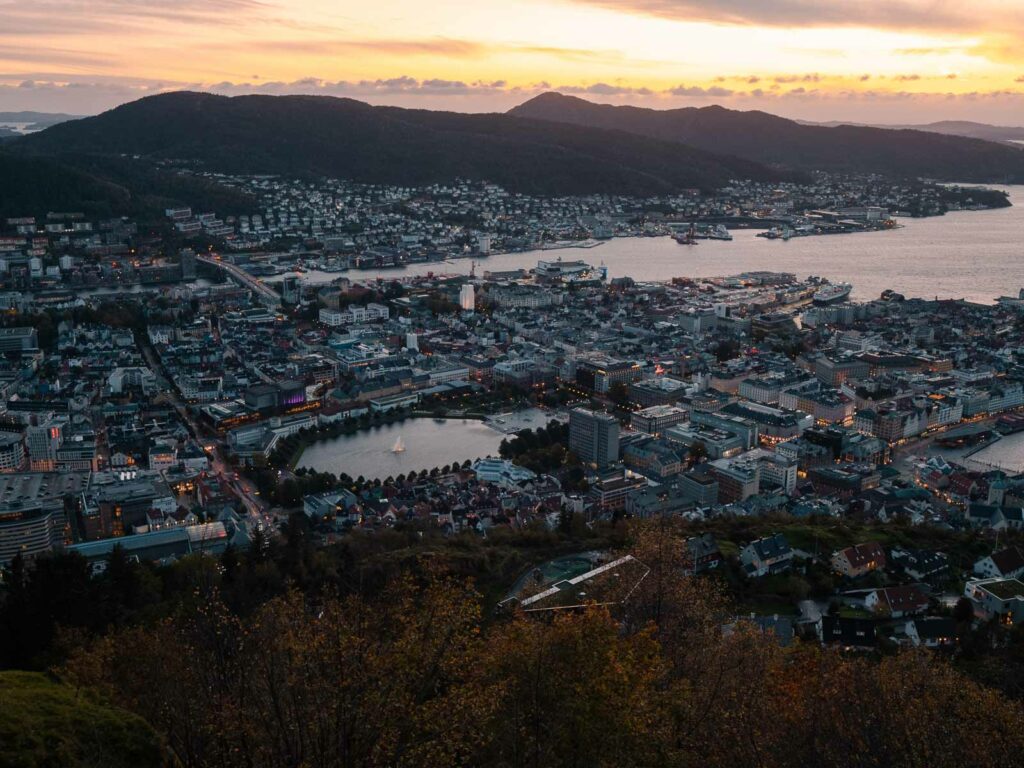
How to get around Scandinavia
Like many European countries, Scandinavia’s transportation networks and infrastructure are pretty well connected.
🚂 Trains, buses & ferries: There are fantastic train connections between all major cities and some more remote tourist spots, like Bodø and Narvik, and anywhere on this itinerary that isn’t accessible by train can be accessed by bus or ferry instead. Travelling overland/over-water takes more time, but I find it far more comfortable and less stressful than flying, and the views are magic! You can get a Scandinavia rail pass to keep your travel costs down (keep reading for more info on that).
🚗 Rental car: You could rent a car in Scandinavia to drive this itinerary if you aren’t fussed about cost. It will save you time in terms of not having to align your travels with set train departures, but there are some long drives in there! This would be best if you’re travelling with friends or family, but if you’re travelling Europe solo or there’s just two of you then I think public transport ends up being more convenient, cost-effective and enjoyable.
✈️ Flights: You can fly to most places on this itinerary, but keep in mind that flying means lots of wasted time at airports, expensive tickets + luggage, and unnecessary stress. At least with trains or buses or road trips you can enjoy the view! You could fly the long distances on this itinerary though, like getting to and from the Lofoten Islands, to cut the itinerary length down if you need.
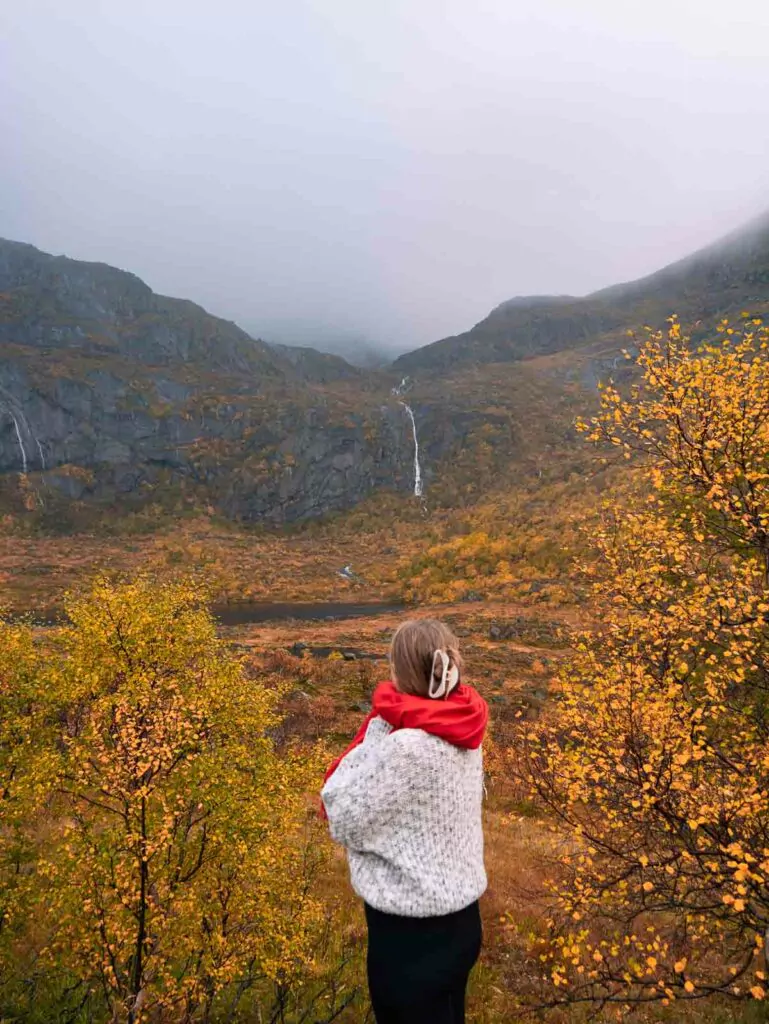
Should you get a Scandinavia rail pass?
A rail pass in Europe is a pass that essentially acts as your train ticket, giving you access to the train network within a particular country, region or the whole continent. There is a Scandinavia rail pass that covers trains in Denmark, Norway, Sweden and Finland too, perfect for this itinerary!
To find out whether a Scandinavia rail pass is worth it, you really need to compare the cost of buying individual tickets vs. the cost of the pass and any additional seat reservations (which aren’t covered by the pass). You can do this yourself in a spreadsheet, but I have an example below looking at this exact three week Scandinavian itinerary to give you an idea of what you could save.
Some quick notes for those of you new to train travel and rail passes:
- Eurail and Interrail Passes cover train travel in a certain country or region, if you’re using trains often and for long journeys they can end up saving you hundreds of €€€
- Seat reservations aren’t included in a rail pass, some trains don’t require reservations but some (most in Norway) do have a seat reservation fee, generally around €3-7
- To see if a rail pass is worth it you really have to price up your actual itinerary and compare the pass + seat reservations with the individual tickets
- Train prices change based on demand so if you book last minute they’ll be more expensive than if you booked two months in advance. The point-to-point prices below are based on a ticket search for travel in two weeks.
- All prices below are valid as of April 2024 but are obviously subject to change, I’d recommend you do your own little comparison spreadsheet to check prices for your travel dates
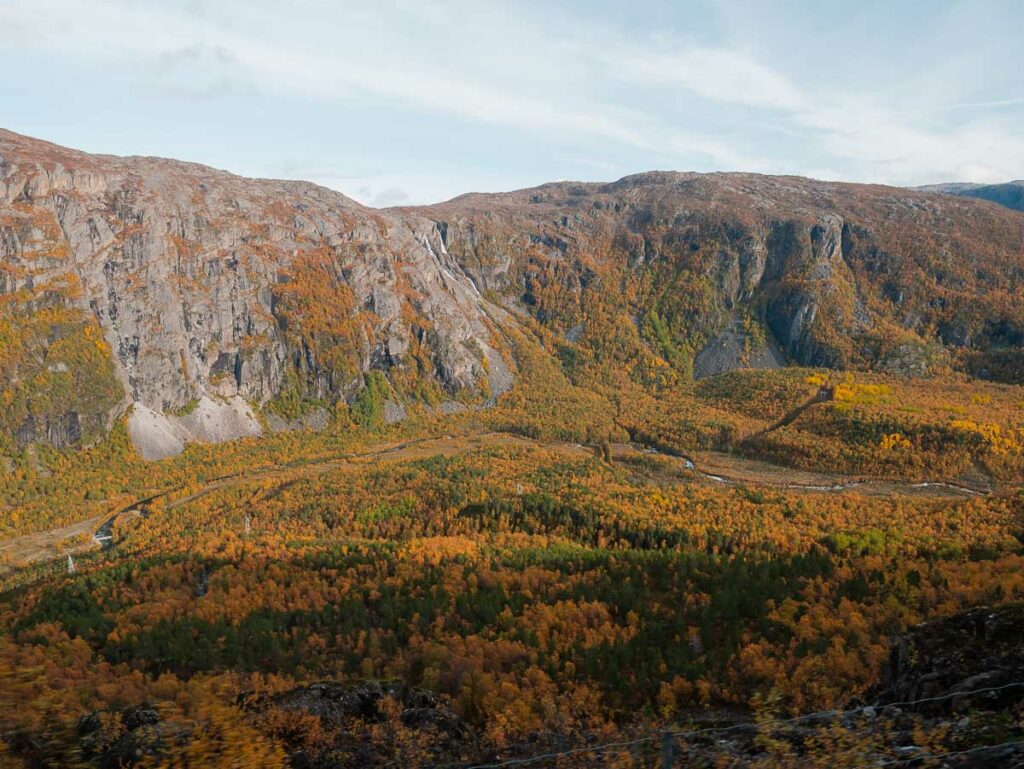
Rail pass calculation for this Scandinavia by train itinerary
| Point-to-point ticket | Scandinavia Eurail/Interrail Pass | |
| Copenhagen to Oslo | €89 | €0 |
| Oslo to Flåm | €70 | €22.40 |
| Flåm to Bergen | €60 | €15 |
| Bergen to Oslo | €45 | €7.40 |
| Oslo to Trondheim | €49 | €7.40 |
| Trondheim to Bodø | €37 | €37* |
| Narvik to Stockholm | €96 | €5 |
| Pass | €0 | €297 |
| Total | €446 | €391.20 |
🥇 As you can see, the Scandinavia Eurail Pass (which covers all three countries) comes out on top, saving you 12.3% vs. buying individual tickets. That’s €54.80 that you can put towards food and drink!
These prices are based on the day train from Trondheim to Bodø and getting a normal train seat for the Narvik to Stockholm night train, but you’d save even more vs. individual tickets if you took both night trains.
If you had a private sleeper from Trondheim to Bodø (they don’t have shared sleepers) and a shared sleeper with two others from Narvik to Stockholm, you’d pay €496.80 in total with a Scandinavia Eurail Pass vs. €595 with individual tickets. That’s 16.5% cheaper with a rail pass, saving you €98.20.
And if you wanted a private sleeper for the Narvik to Stockholm night train too, with a Scandinavia Eurail Pass you’d pay a total of €563.80 compared to €772 with individual point-to-point tickets. That’s a 27% saving, coming to €208.20!
If you’re super confused don’t stress, I’ve got a couple of really detailed rail pass blog posts that explain this in more detail with loads of example itineraries:
- The ultimate guide on how to use a Eurail Pass
- Is a Eurail Pass worth it? A detailed breakdown with examples
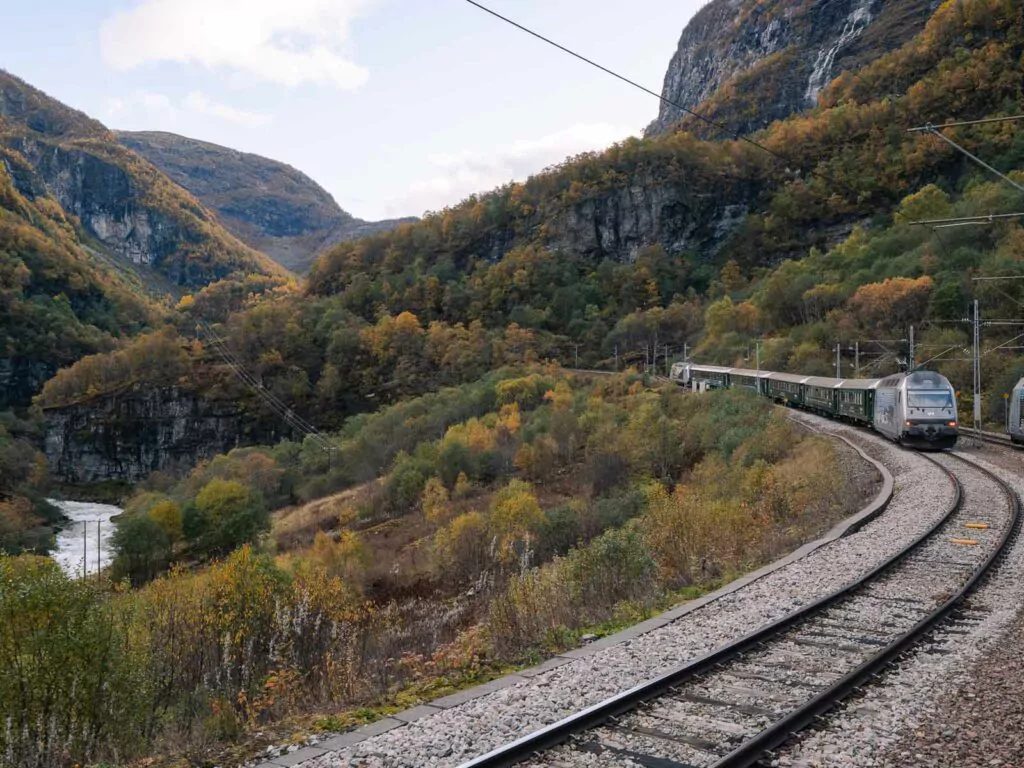
How much to budget for three weeks in Scandinavia
Scandinavia has a reputation for being expensive, aaaand that’s because it is expensive 🙃
What you spend will totally depend on the level of comfort you’re wanting, but here’s a rough guide:
- Accommodation: €30-70 per night for a dorm bed at a decent hostel in a touristy area (some cheaper options if you have a low budget and equally low standards 😂), €70-120 for a basic private room at a hostel or cheap hotel, €120+ for anything above basic
- Food: €12-25 for a sit down meal in a typical restaurant, cheaper for market halls and more expensive for fancy places or tourist hubs. If you’re on a budget I’d highly recommend living off supermarket food and bakery treats, I spent about €15 per day on a backpacker diet of bread rolls, two minute noodles, yoghurt drinks and cinnamon buns.
- Transport: You could do this entire three week itinerary by train/bus and spend less than €400 on your transport costs by getting a Scandinavia rail pass, or €560 if you want private compartments on two night trains. If you’re renting a car you can get compact cars in the low season from as cheap as €15-20 per day, but during busy periods or for last minute bookings this could shoot up to €100 per day, and Norway, Denmark and Sweden are three of the most expensive countries in the world in terms of gas prices. If you opt for the coastal cruise in Norway then transport costs go up, but your accomm and food is obviously included in that so it kind of balances out.
- Activities: Nature is freeeee, walking tours and museums are very cheap, but big-ticket adventures like fjord cruises, Northern Lights tours and cultural experiences will add up.
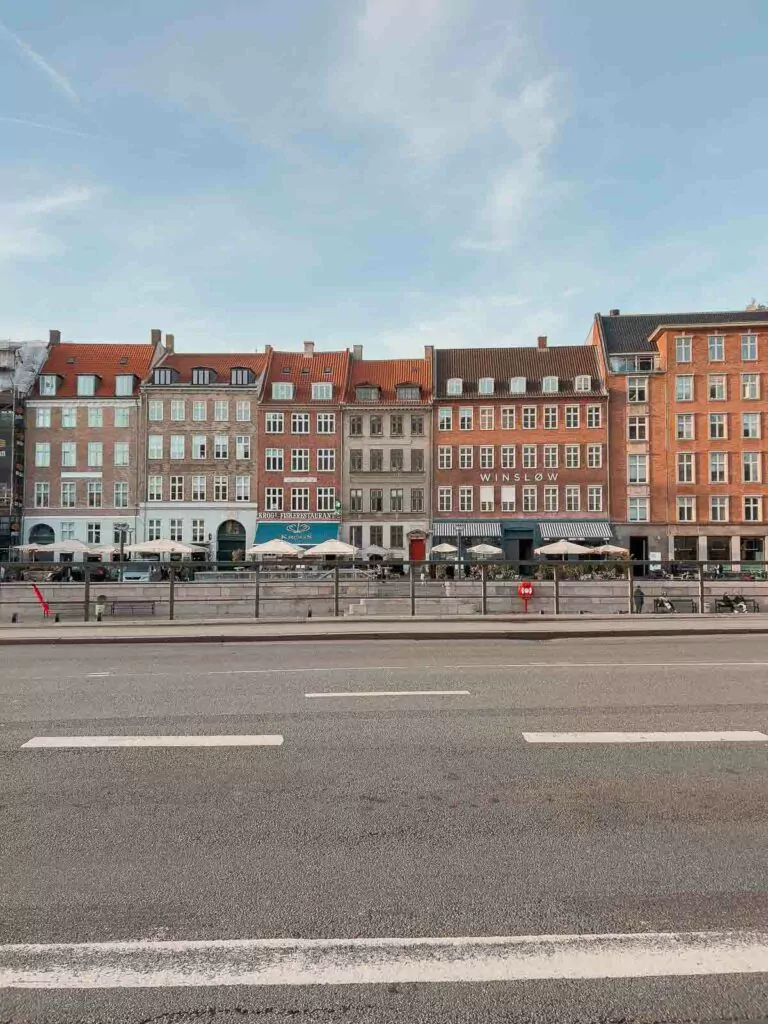
The ultimate three week Scandinavia itinerary
Who is this three week Scandinavia itinerary for?
This three week Scandinavia itinerary is pretty fast-paced and covers a lot of ground, so it’s really for travellers who are visiting Scandinavia for maybe the only time in their life and want to see as many highlights as possible.
It includes a lot of time on trains which might be daunting if you haven’t travelled by train much before, but trains in Europe are honestly fantastic. They’re comfortable, you can eat at the restaurant onboard or bring your own food, the views are incredible and you can get work done or catch up on TV shows. It’s my favourite way to travel!
If you’re looking to travel at a slower pace then I have some suggestions at the bottom of the itinerary for ways you could make the trip a bit more relaxed, or if you really want to avoid public transport then you could also do this trip with a rental car or avoid some of the long train days with regional flights instead.
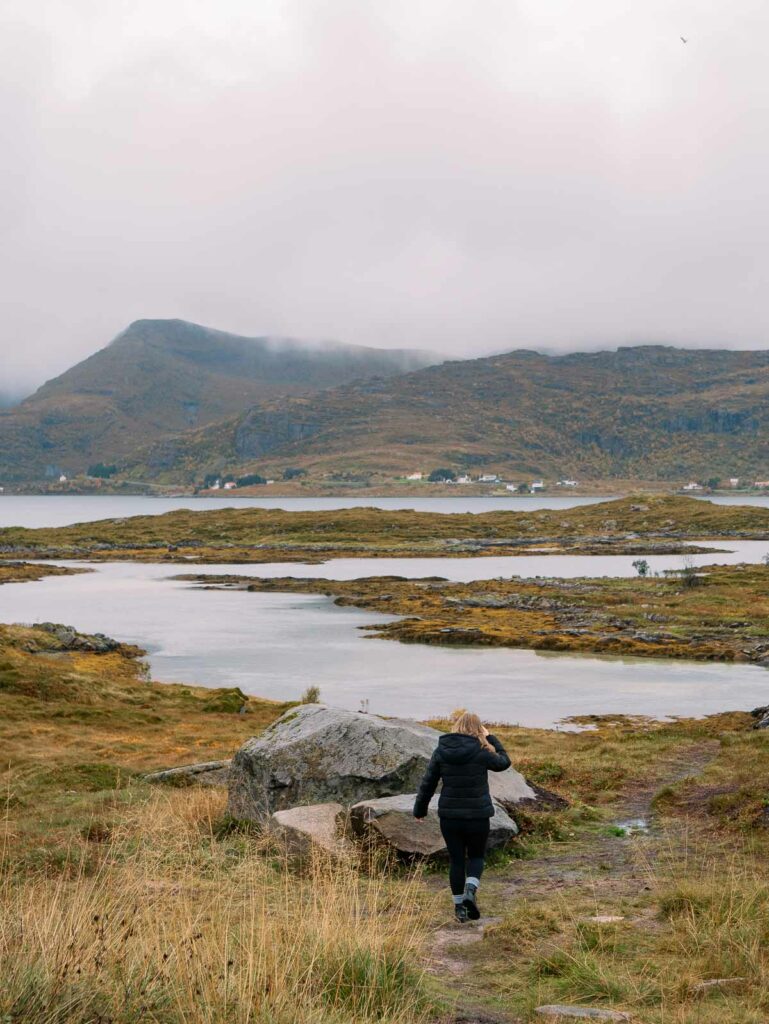
3 days in Copenhagen
You could do this Denmark, Sweden and Norway itinerary in either direction, but let’s pretend we’re starting in Copenhagen.
Arrive in Copenhagen via your chosen form of transport, there are cheap flights here from loads of European hubs or you can catch a train from Hamburg (about 4h 45m-5h direct) or anywhere else that connects with Hamburg.
About Copenhagen
Copenhagen is effortlessly cool, proudly eco-conscious and brimming with hygge (an untranslatable Danish word for cosy contentment).
There are kind of two sides of the city, one with seaside charm and fairytale landmarks, and one with cutting-edge urban design, a thriving culinary scene and independent shops that are guaranteed to test your financial discipline.
With three days to explore, you can experience both!
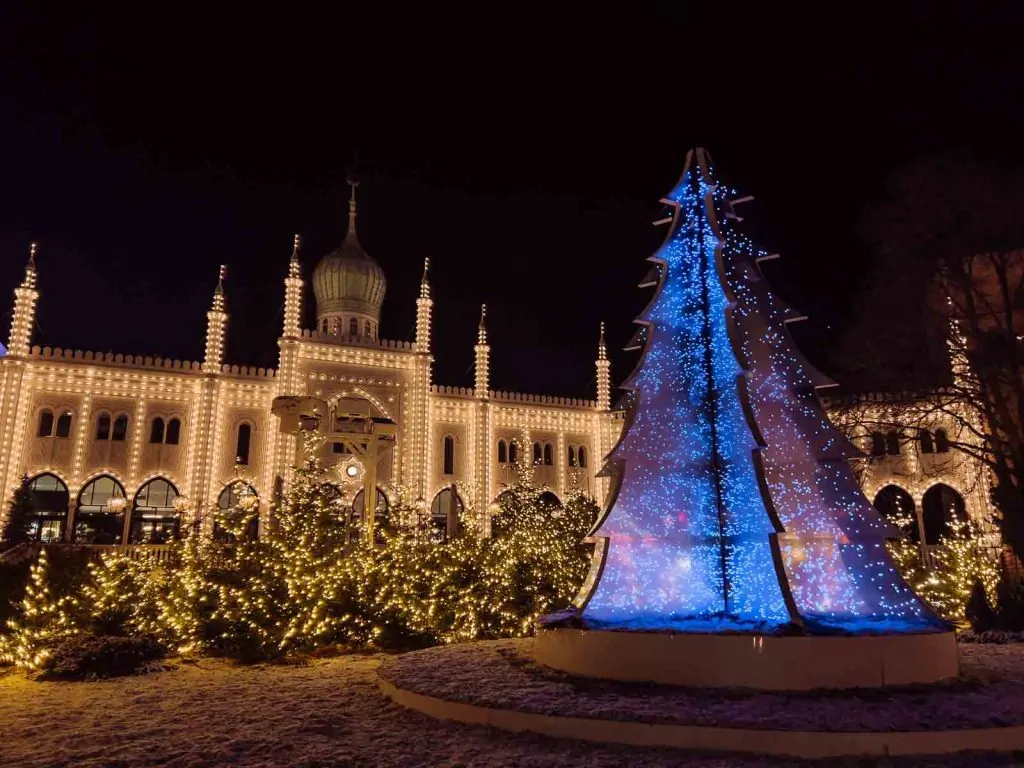
Things to do in Copenhagen
- Embrace the tourist in you and stroll through the part of Copenhagen you’ve seen on postcards, the canals and brightly-painted houses of Nyhavn
- Take a canal cruise to see the city from the water
- Channel your inner kid and head to Tivoli, one of the world’s oldest amusement parks and an inspiration for Walt Disney himself. There are thrill rides (I love the Monsoon, the Demon and Tik Tak), seriously impressive gardens and classic theme park food with a Scandi twist. You can get an unlimited ride ticket or just get an entrance ticket and pay for rides individually.
- Hire a bike and explore like a local, most hotels/hostels have them for rent
- Or take a guided walking tour or Segway tour to get your bearings
- Catch the Changing of the Guard ceremony at Amalienborg Palace, the home of the Danish royal family
- Indulge in the city’s gastronomic scene, it’s one of my all-time favourite culinary destinations. There’s fine dining galore (the Alchemist is at the top of my food bucket list), TorvehallerneKBH is great for cheap eats and Mad & Kaffe is the best brunch spot in town.
- Hunt for a bargain at a flea market
- Get amongst alternative Copenhagen with a visit to Freetown Christiania, a colourful autonomous community that have their own laws, flag and currency. It’s a hippie neighbourhood home to almost 1000 people, and it’s packed with street art, healthy food and all-round good vibes. I felt totally safe here as a solo female traveller, but to avoid any hostile behaviour you need to follow the local rules (no photos in some places, no running, no buying drugs).
- Take a day trip to Kronborg Castle, the home of Shakespeare’s Hamlet
- Walk up the spiral ramp of the Round Tower to see one of the best views of the city
- Take a food tour, the best way to experience a new city!
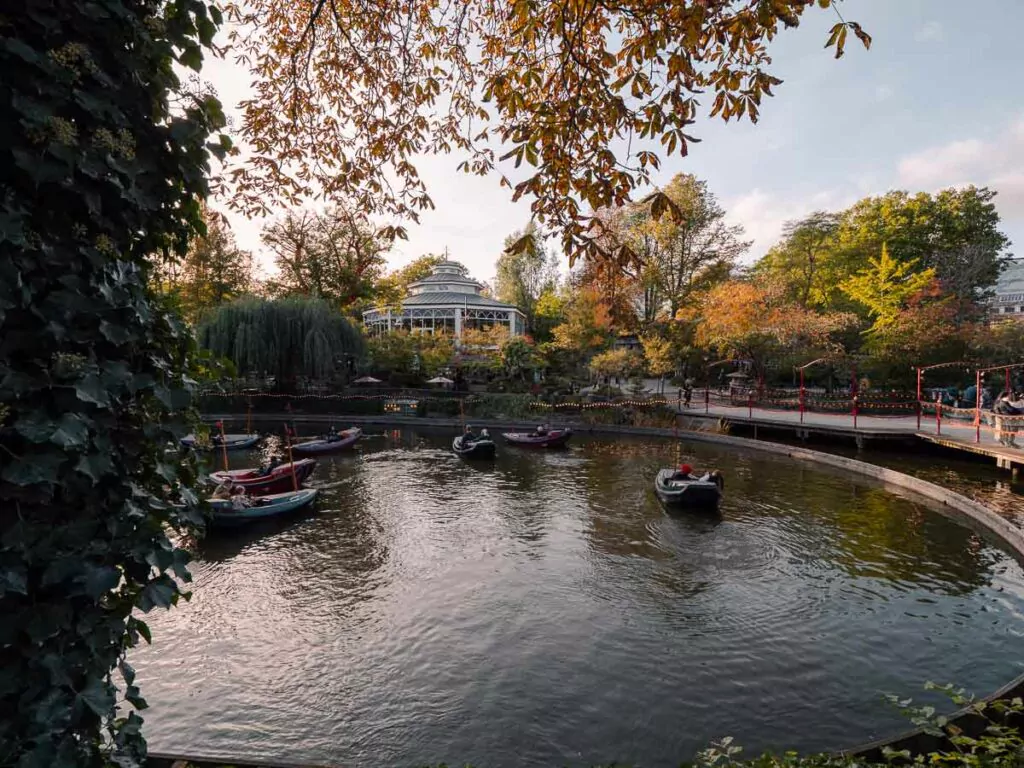
Where to stay in Copenhagen
Budget
- Next House Hostel for social travellers (mega hostel complex with pod-style dorms, a fully equipped gym, indoor football/dodgeball arena, the best games selection I’ve ever seen in a hostel, and a rooftop terrace for summer drinks and dancing)
- CityHub Copenhagen for comfort on a budget (private pod rooms with a plush double bed and space to stand up, guest kitchen, beer on tap, nice bathrooms and really friendly staff, my go-to for my solo Copenhagen trips now that I’m past my social hostel years!)
Mid-range:
- Bryggen Guldsmeden (a surprisingly affordable 4* boutique eco-hotel with funky design, a Bali-inspired pool and an easy bus to the train station)
- Hotel Ottilia (simple but stylish urban hotel in the former Carlsberg brewery)
- Zoku (loft-style apartments built for business travellers and digital nomads, both long and short stays available)
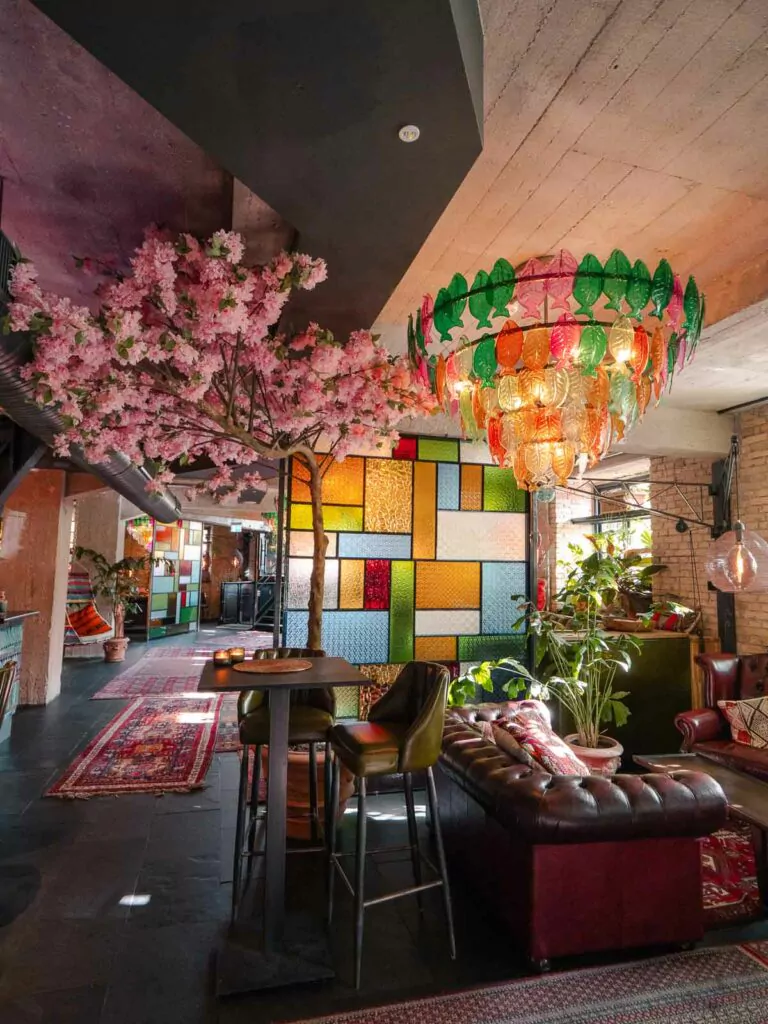
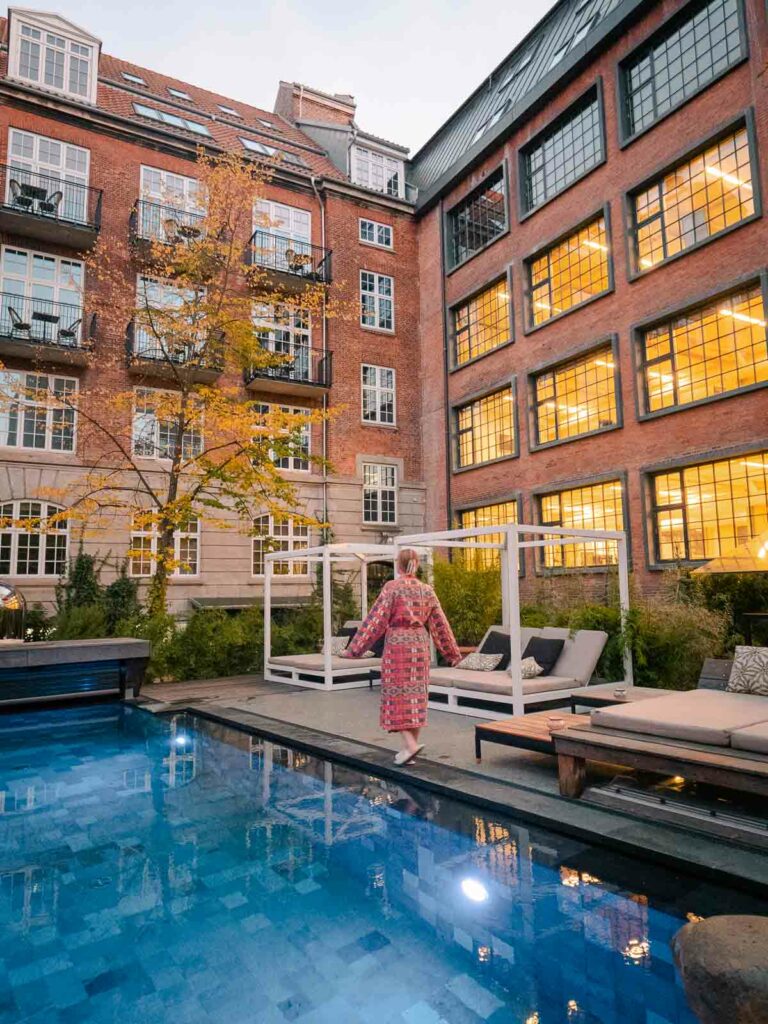
Luxury:
- Manon Les Suites (the most photogenic hotel in Copenhagen with that famous jungle pool!)
- Charlottehaven (elegant aparthotel in Østerbro, get the panoramic view room for an absolute treat)
- Nimb Hotel (luxe 5* hotel inside Tivoli, with theme park views, a glorious rooftop pool and world-class service)
1-2 days in Oslo
How to get from Copenhagen to Oslo
Catch a train to Gothenburg (3h 30m) and then switch to a train to Oslo (3h 50m). You could store your bags and explore Gothenburg for the day if you feel like adding on an extra city.
There’s a direct Flixbus that runs a couple of times a day and takes 8 hours if you prefer a single journey, but I find trains much more comfortable than a long bus trip.
About Oslo
Norway’s capital offers the perfect combo of a vibrant cultural scene along with accessibility to nature and out-of-the-city adventures.
It feels noticeably more ‘big-city’ than Copenhagen, you can still find pockets of charm dotted around the place but it’s much more metropolitan and has less of a vibe than its Danish counterpart (in my opinion anyway). Both cities are expensive but I felt like value for money was better in Copenhagen, and the standard of the cheaper food and accommodation options were higher than the cheap food and accommodation in Oslo.
I’ve suggested 1-2 days here to give you enough time to see a couple of museums, enjoy a floating sauna and check out the fortress, but don’t stress to much about the nature side of things because the upcoming fjords are much more spectacular than what you’d get from the short Oslo cruise.
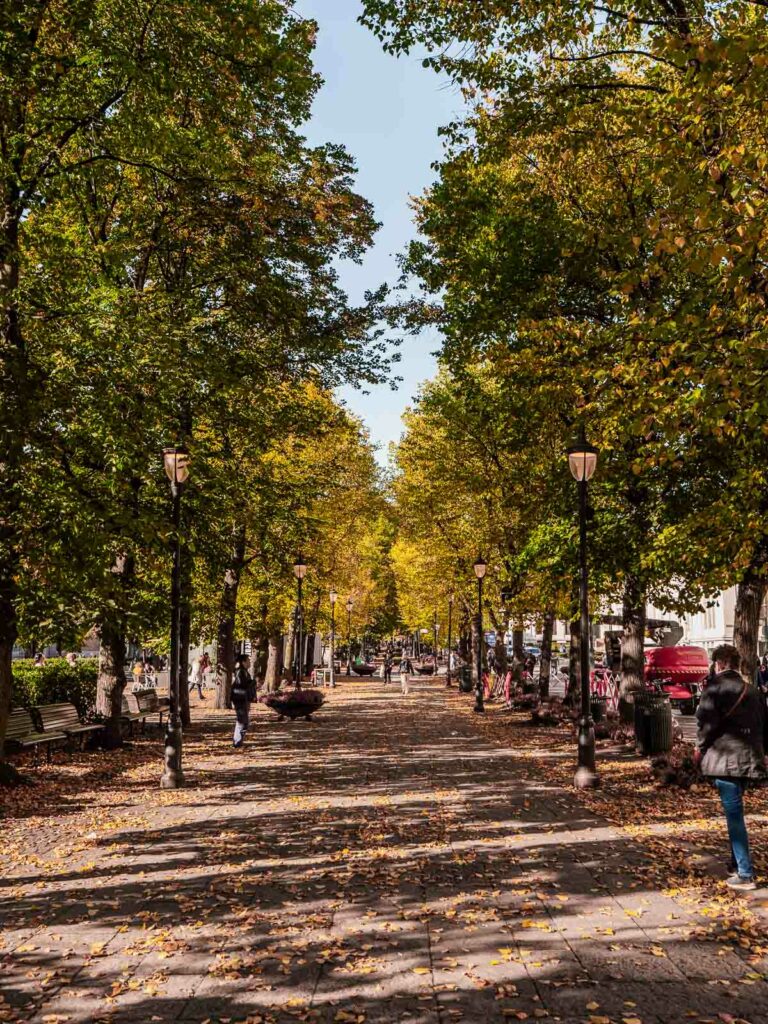

Things to do in Oslo
- Have a feel-good museum experience with a visit to the Nobel Peace Centre, where you can learn about the past winners of the acclaimed award and their impact on humanity
- See another museum (or five!), there are more than 50 to choose from, including the Vigeland Museum of sculptures, the National Museum for Norwegian art through the ages, the Fram Museum all about Polar Exploration, and Norse Folkemuseum, an open-air cultural history museum
- Join a guided tour around the city to get an insight into local culture and history, there are free walking tours (tip-based!), e-scooter tours and bike tours
- Eat at Mathallen Food Hall or Oslo Street Food, both top-rated for affordable dining
- Soak in the view from the roof of the harbour-side Oslo Opera House for a unique perspective of the city
- Wander around Akershus Fortress, a well-preserved medieval castle
- Go for a fjord cruise (but skip it if you’re short on time – Flåm and Bergen’s fjords are better)
- Get your caffeine fix at Tim Wendelboe, a world-class and award-winning coffee roastery and espresso bar
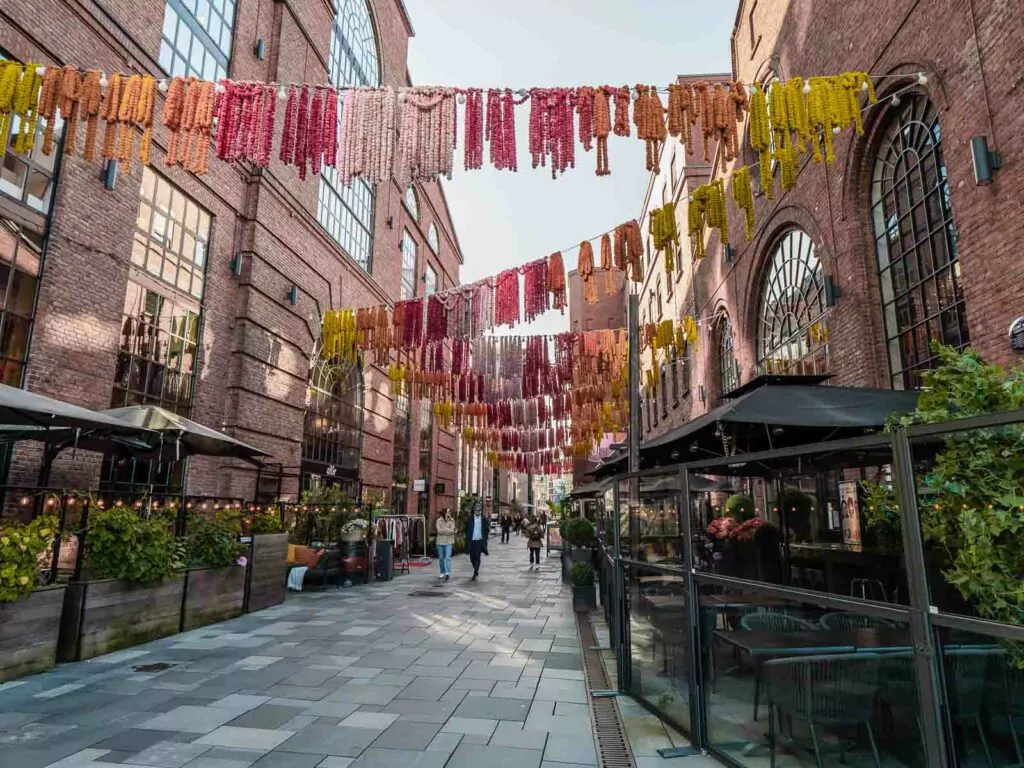
Where to stay in Oslo
Budget
- K7 Hotel (the best value place I could find in Oslo, back to basics but they’ve got dorm rooms and private rooms with access to a guest kitchen and lounge area, and they’re about to reopen after a renovation so it’ll be even better value!)
- Citybox Oslo (250m from the train station with affordable private rooms)
Mid-range:
- Att Kvadraturen (my go-to for any Oslo city break, comfortable studio apartments with a full kitchen, access to laundry facilities and delicious breakfast at the restaurant next door, just a 12 min walk from the train station)
- Bob W Sentralen (perfectly located smart-hotel with little touches like a polaroid camera to take on your adventures, a yoga mat in each room and breakfast vouchers for handpicked local cafes)
- Thon Hotel Opera (top-rated business hotel right next to the main train station)
- Radisson RED (great value chain hotel with excellent reviews)
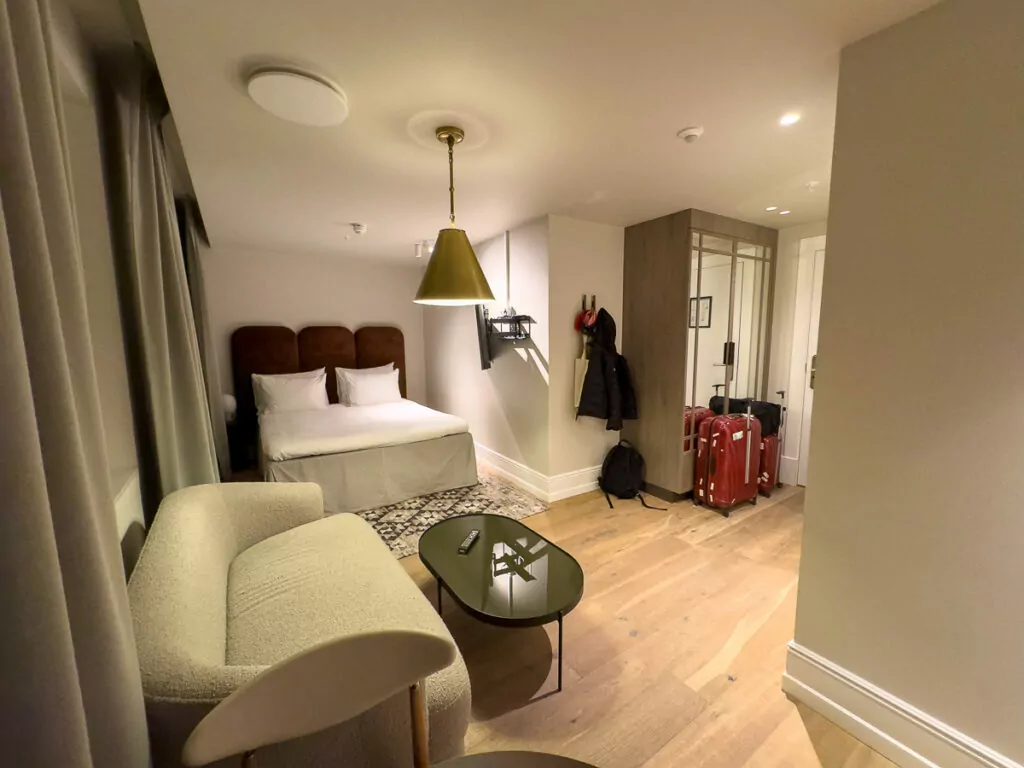
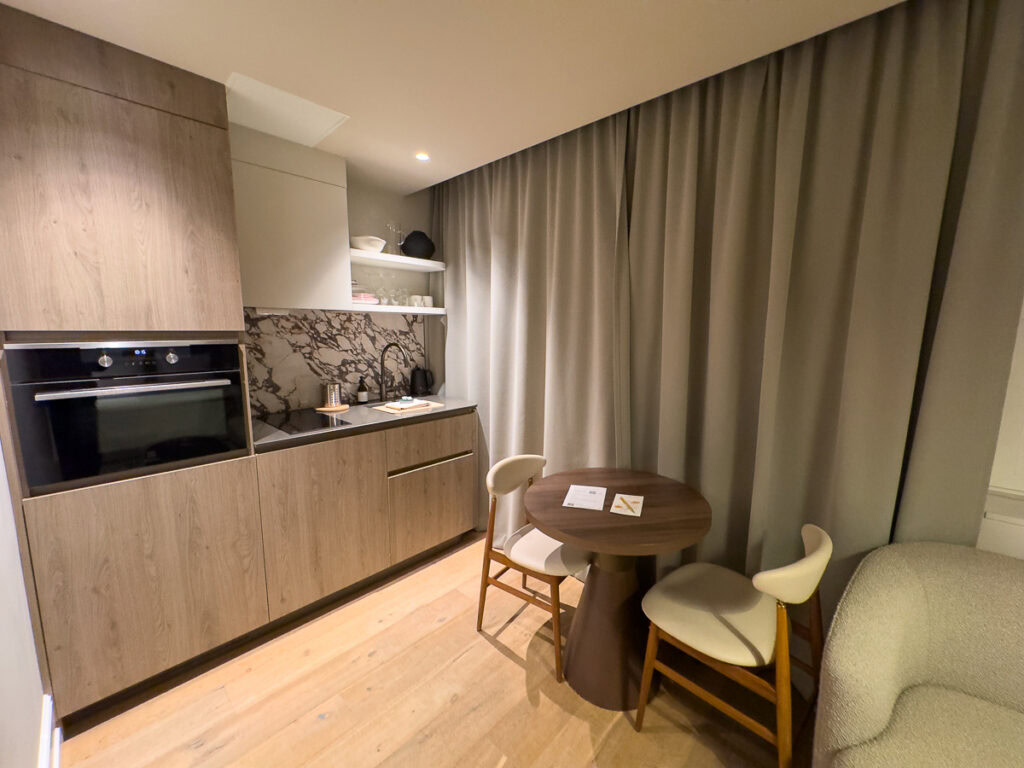
Luxury:
- The Thief (boutique design hotel famous for their impressive breakfast buffet)
- Hotel Bristol (sophisticated luxury hotel with rich history and antique charm)
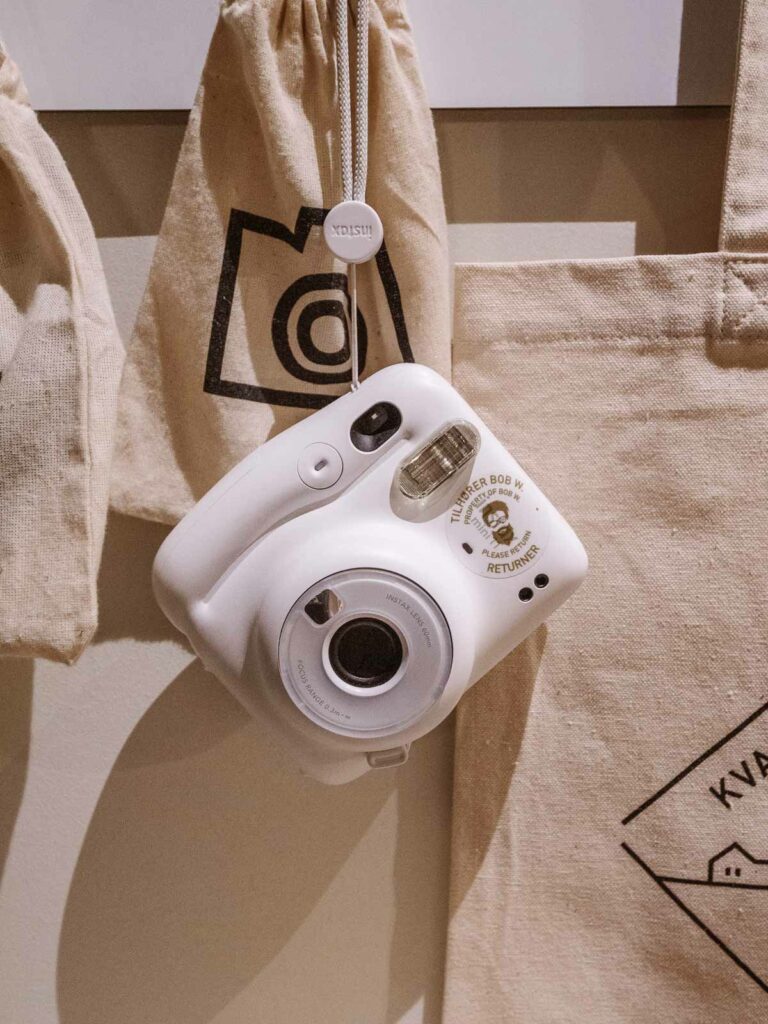
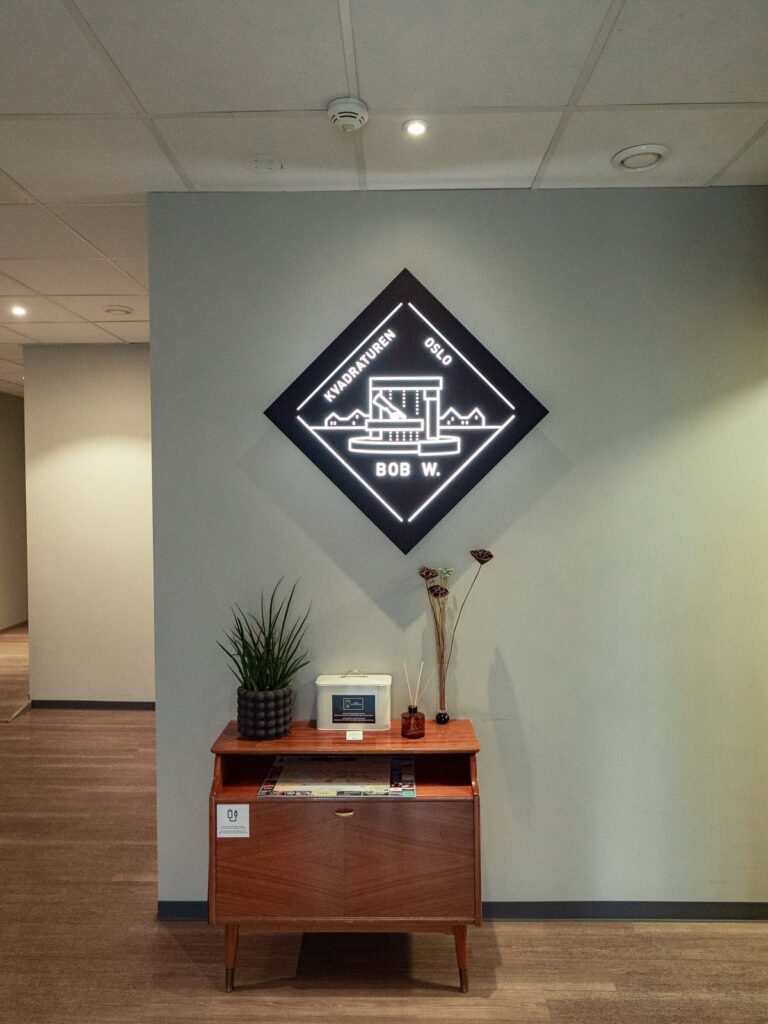
1-2 days in Flåm
How to get from Oslo to Flåm
Catch the F4 train towards Bergen but get off at Myrdal (around 5h), then you catch the iconic Flåm Railway to the village of Flåm (just under an hour).
About Flåm
With Norway’s most beautiful train ride and a magical cruise as the two main ways to reach Flåm, I guarantee this tiny village is going to be a key highlight of your three weeks in Scandinavia.
As the gateway to some of southern Norway’s most iconic landscapes, Flåm is often a whirlwind stop on the super popular Norway in a Nutshell self-guided tour, but I think it’s worth staying a night or two to tick off some additional bucket list activities.
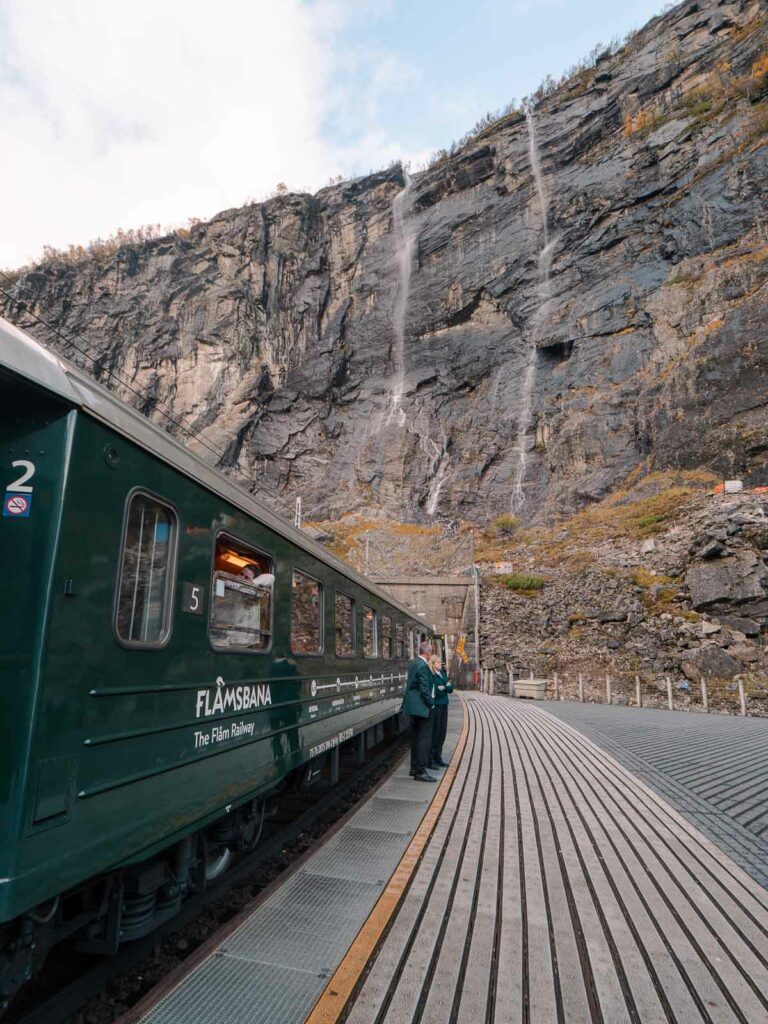
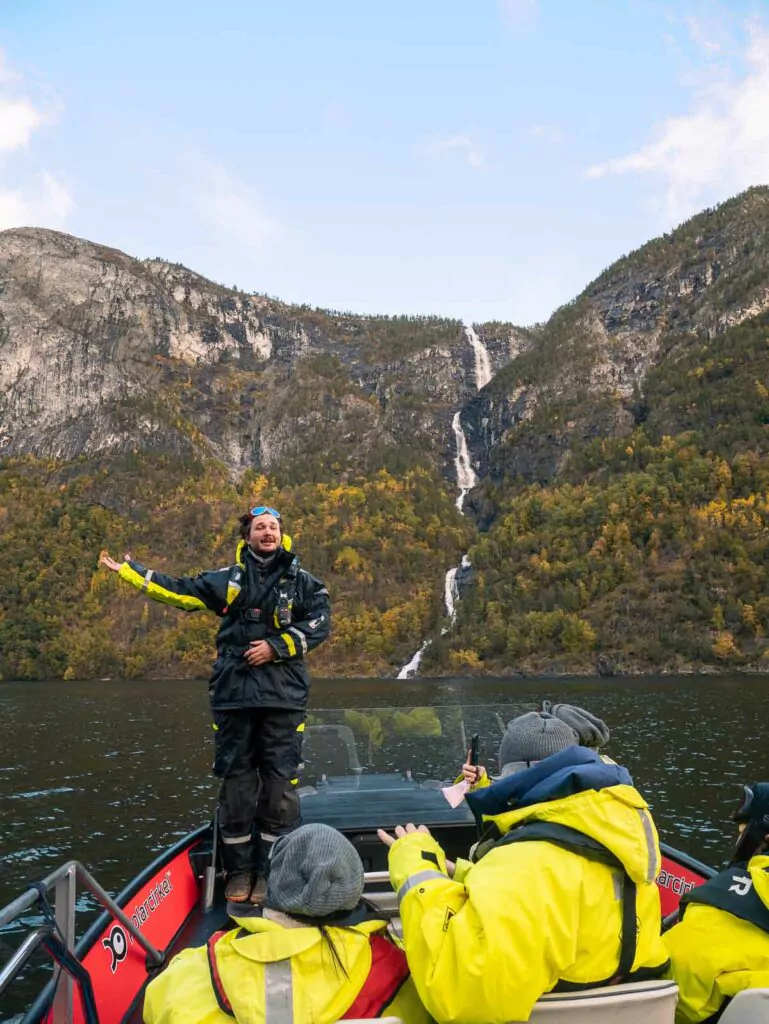
Things to do in Flåm
- Take the train, obviously! The Flåmsbana railway is one of Europe’s most beautiful train rides, taking you past lush valleys, monster waterfalls and charming villages over the short but steep journey. Sit on the left side of the train going down for the best views, and read more Flåm Railway tips in my Flåm train guide.
- Learn about the train’s impressive engineering feats at the Flåm Railway Museum
- Witness the magic of the fjord from the water. You can take a fjord cruise (I’d recommend doing this on your way from Flåm to Bergen) or get a more thrilling fjord experience with an epic Fjordsafari RIB tour.
- Hike to the Stegastein viewpoint for killer views
- Experience Scandinavia’s longest zipline, a cool 1380m over the dramatic valley
- Rent a bike and explore Flåm Valley, you can rent them in town or at the bottom of the zipline to make your way back to Flåm (and kill two birds with one stone)
- Enjoy a fjord-side sauna, which wouldn’t be complete without an icy dip into the water
- Indulge in the sweet treats at Flåm Bakery
- Taste test local brews at Ægir Brewpub
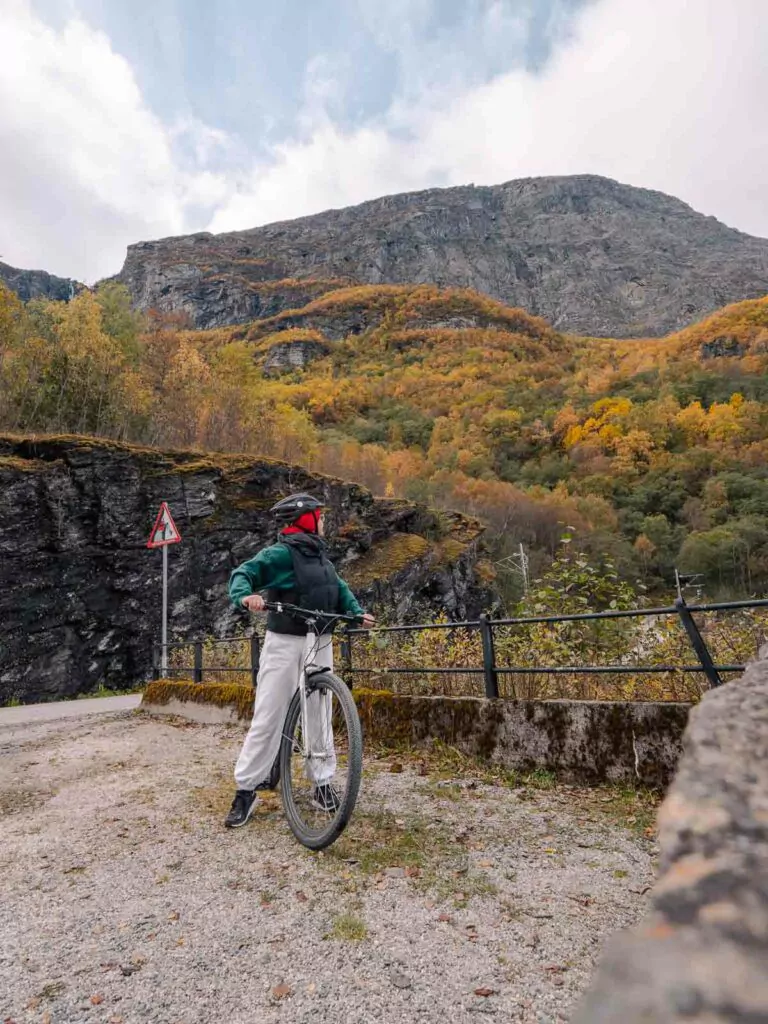
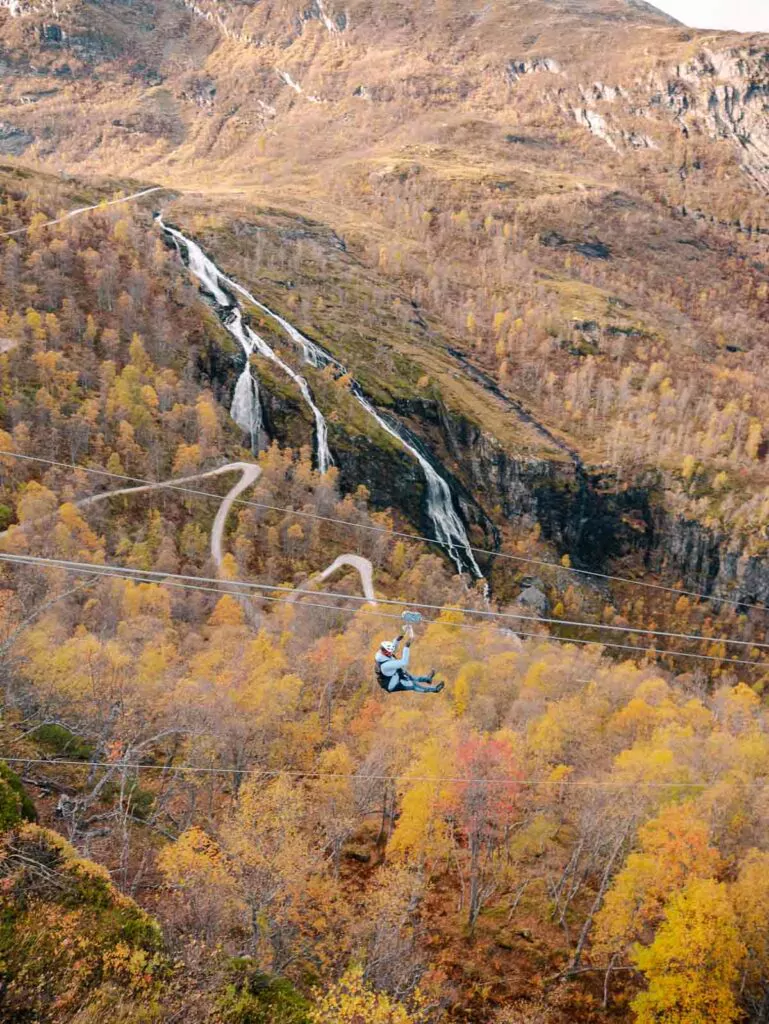
Where to stay in Flåm
Budget
- I stayed at Flåm Hostel in a private room, it was cosy, clean and had much better reviews than other budget options in town. They also have Flåm Camping & Cabins on the same site but with different room options, check both!
- Svingen Guesthouse looks beautiful but has very limited capacity so it’s often fully booked
Mid-range:
- Flåmsbrygga (warm and welcoming hotel with Viking vibes, home to the aforementioned Ægir Brewpub)
- Flåm Ferdaminne (full apartment in the middle of the village centre)
Luxury:
- Wangen Apartments AS in Aurland, accessible by bus from Flåm (Scandi design fjordside apartments with unobstructed views)
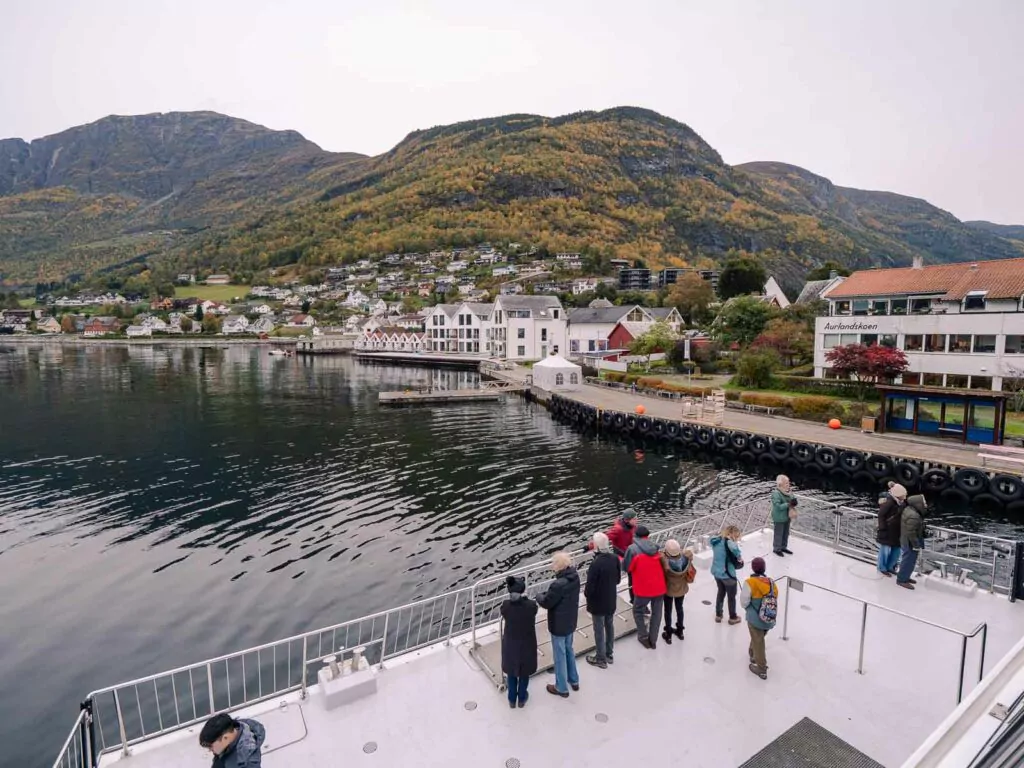
3 days in Bergen
How to get from Flåm to Bergen
You’ve got a couple of options to get from Flåm to Bergen:
- You could go back the way you came, catch the Flåm Railway to Myrdal and jump back on the train towards Bergen (2h-2h 20m)
- Or you could go for another scenic route and do a cruise-bus-train combo. You jump on the Nærøyfjord cruise that I just mentioned, from Flåm to Gudvangen, then catch a bus transfer to Voss station (on the Bergen line) where you can catch the train to Bergen. This sounds confusing but there is space for luggage and lots of other travellers will be doing it like this so you won’t get lost!
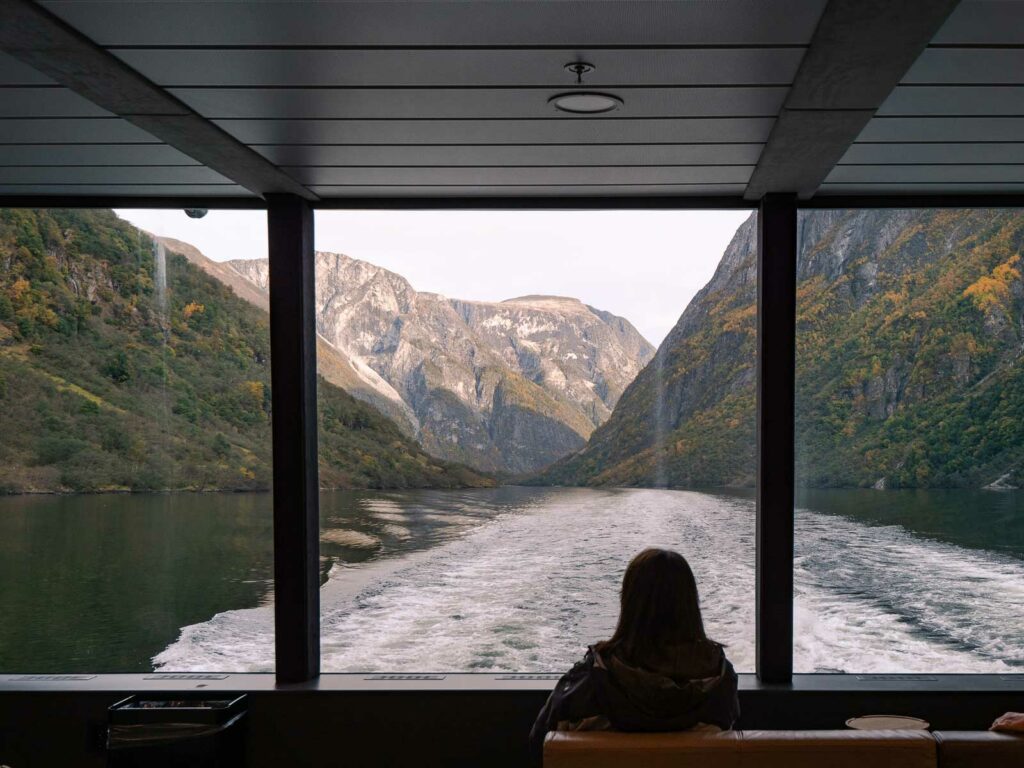
About Bergen
Bergen is my favourite city in Norway (the Lofoten Islands are my favourite region but technically there’s no city there so 🤷🏼♀️), and I know it’s a cliche but it really does have something for every kind of traveller.
Foodies are spoilt for choice with world-class restaurants and cheap eats galore, party animals can indulge in the buzzing nightlife scene, nature lovers have access to ocean and land adventures, and if you prefer culture and history you’ve got the Bryggen and a number of museums to explore.
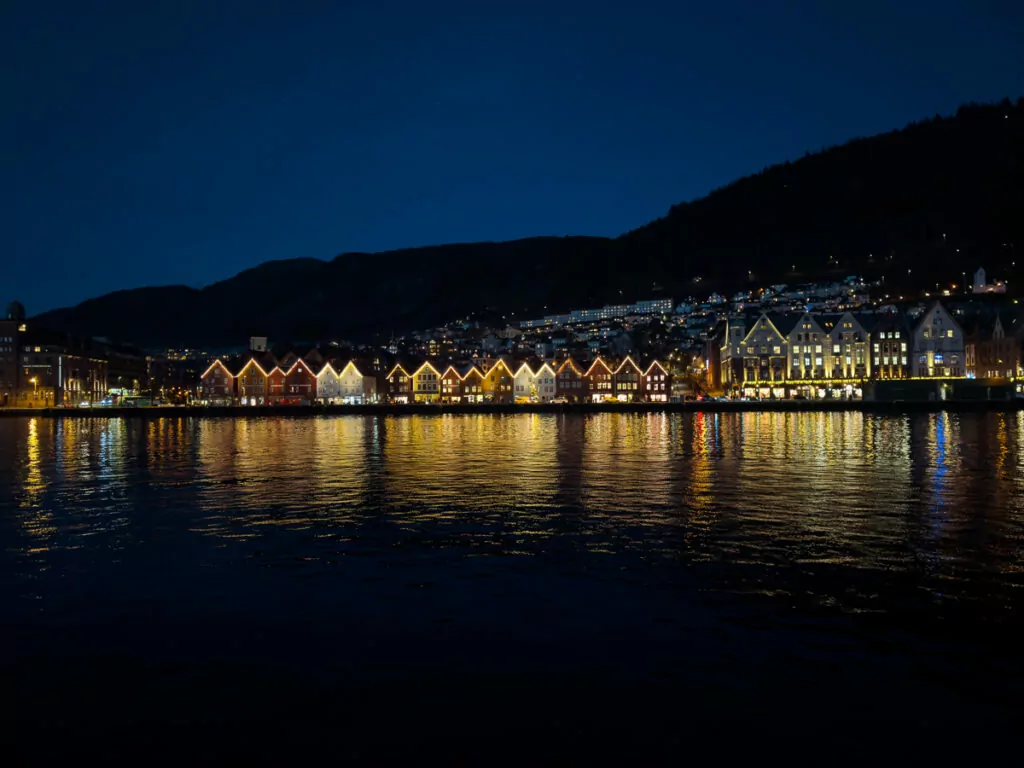
Things to do in Bergen
- Catch the funicular to the top of Mount Fløyen for panoramic views that’ll take your breath away
- Join a walking tour around the UNESCO-listed Bryggen, a historic harbourfront famous for its red, orange and yellow buildings, and other highlights of the city
- Take a fjord cruise to Mostraumen
- Try some of the best seafood in the world, there’s Bryddeloftet & Stuene Restaurant for hearty traditional cuisine, Cornelius for fine dining only accessible by boat, or Søstrene Hagelin for unpretentious and affordable ocean-to-table seafood platters
- Or give it a go yourself with a guided fishing tour, where you cook and eat what you catch
- Go for a cruise on a Viking ship (yes, seriously!)
- See one of Norway’s oldest castles, the Bergenhus Fortress
- Hike Mount Ulriken, it’s about 2 hours round trip
- Let your hair down with a night out, Bergen is a popular party destination and every weekend you’re guaranteed to run into at least one British bachelor or bachelorette celebrating their impending nuptials 👰🏼
- Get amongst the local arts and crafts scene, there are plenty of independent designers and artists that call Bergen home and you can find unique clothing, artwork and gifts in their workshops
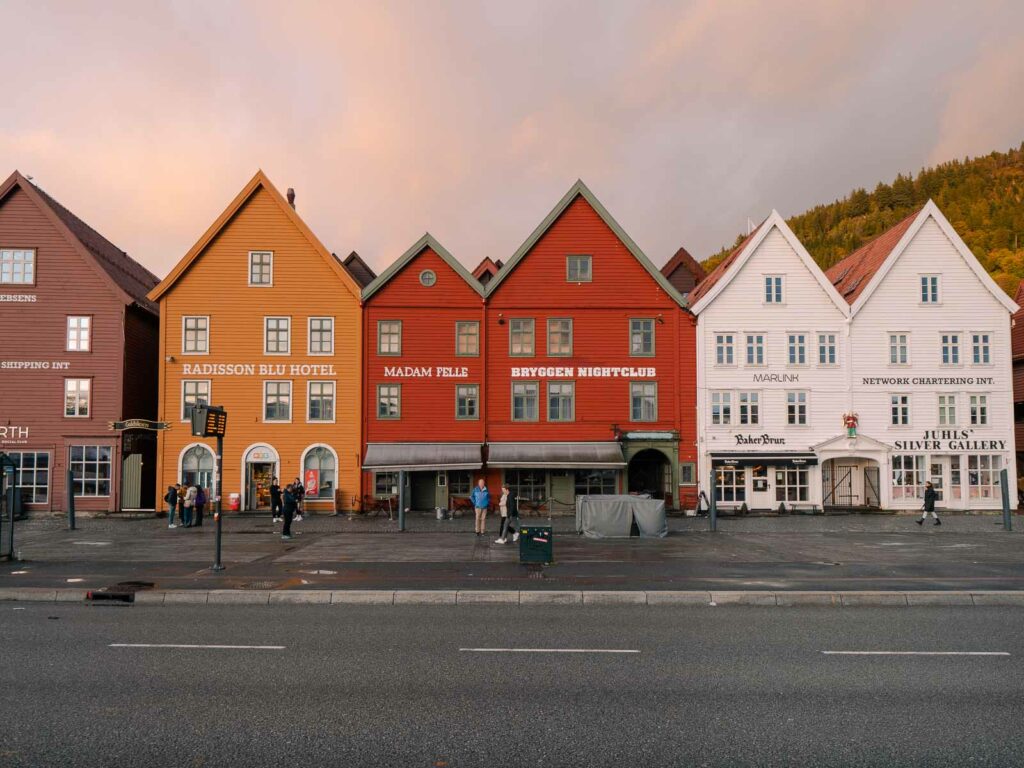
Where to stay in Bergen
Budget
- I stayed at City Hotel Bergen, very basic with backpacker vibes (and a very messy kitchen) but great location
- Bergen Hostel Montana (out of the city but amazing views and easy access to hiking trails, very social)
Mid-range:
- Klosterhagen Hotel (top-rated value option with cosy rooms)
- Citybox (very affordable design hotel in Danmarksplass, slightly out of the city but easy access by public transport)
Luxury:
- Opus 16 (luxury hotel in a grand heritage building)
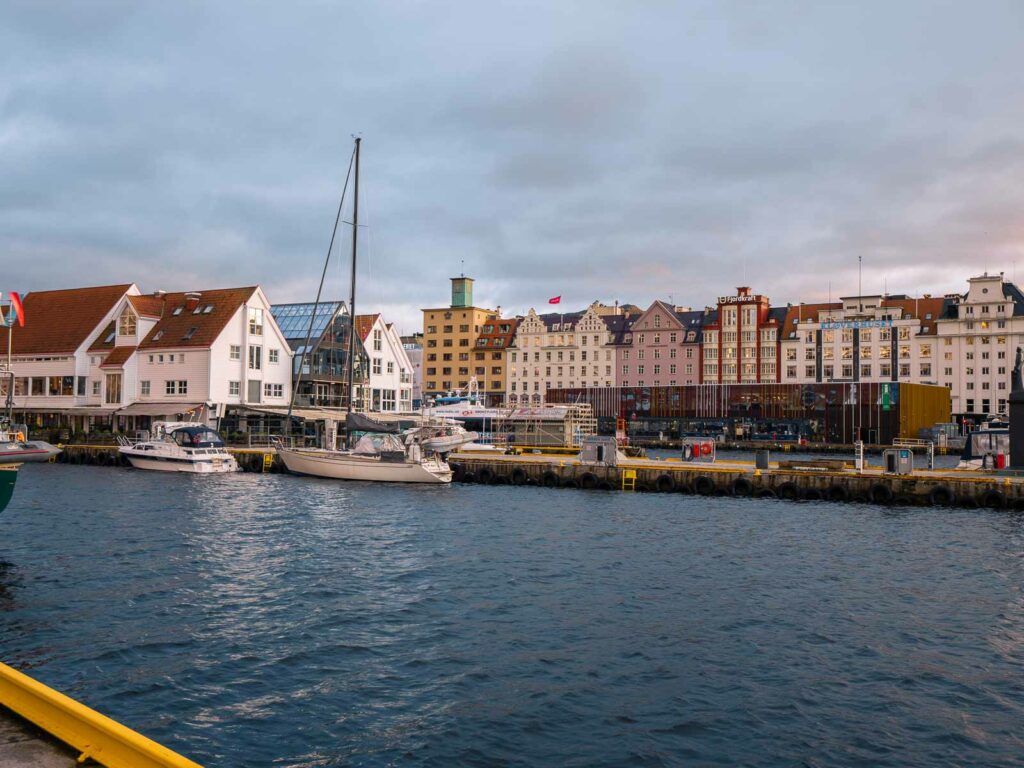
Make your way from Bergen to Trondheim (1-3 days)
You’ve got two slow travel scenic options orrrrr you could get a cheap flight if you’d prefer the quick and easy option.
🚢 Bergen to Trondheim by boat
The most scenic way to get from Bergen to Trondheim is by cruise, you’ll leave Bergen in the evening and arrive in Trondheim in the morning two days later, after two nights on the boat. Two local companies run the exact same route right up the Norwegian coast with the exact same ports, they just run on alternative days:
- Havila Voyages is the newcomer with brand new, sustainable ships (see my full Havila Voyages review for more info)
- Hurtigruten is the OG of Norway coastal cruises
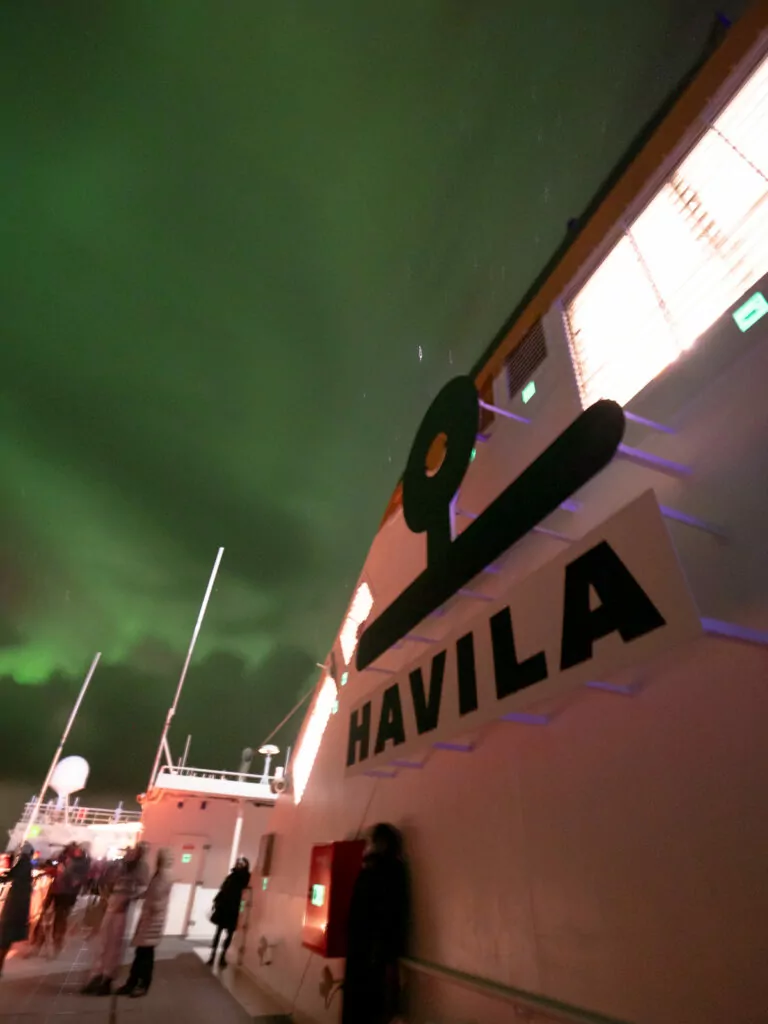
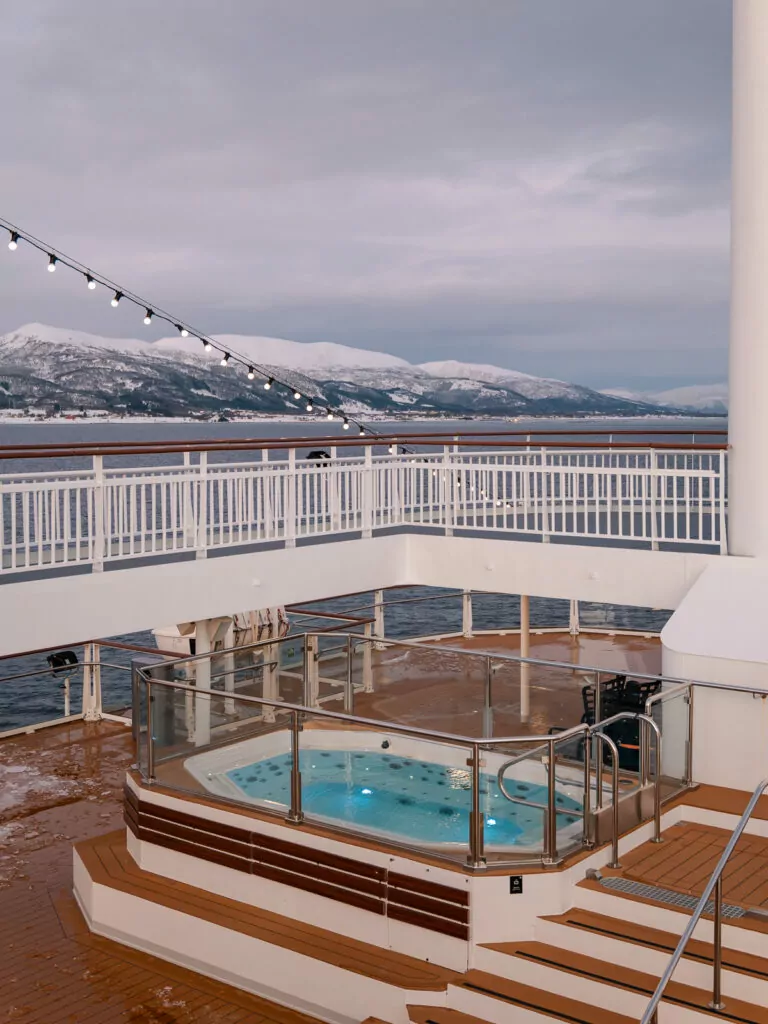
For the two night trip from Bergen to Trondheim, prices for the cheapest room range anywhere from €240 per person to €1000 per person depending on the time of year you’re going. It might seem expensive, but when you add up what you’d spend on accommodation for two nights plus alternative transport to get to Trondheim, it’s actually not bad if you can get a cheap room.
⏰ Time-saving tip: You could stay on the cruise all the way to Svolvær in the Lofoten Islands if you’re okay with having just a few hours in Trondheim when the boat stops, this would be more cost-effective than booking two separate voyages and saves a night too.
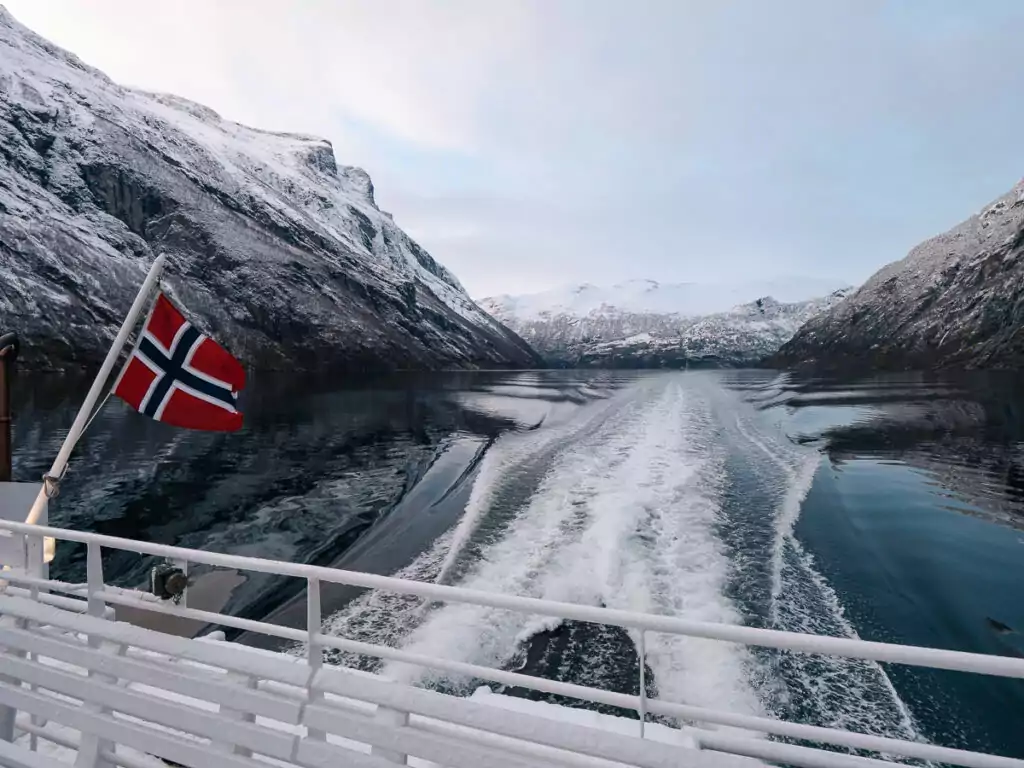
🚂 Bergen to Oslo to Trondheim by train
This is an example of ‘it’s about the journey, not the destination’. Or at least that’s what I tell myself as I sit on a train for hours and hours 🙃
First you’ll need to catch the train from Bergen to Oslo, this one’s 6h 45m-7h 30m and you’ll want to spend a night in Oslo before the next journey. Super super scenic, both sides are magical but I think the right side (travelling towards Oslo) takes the cake.
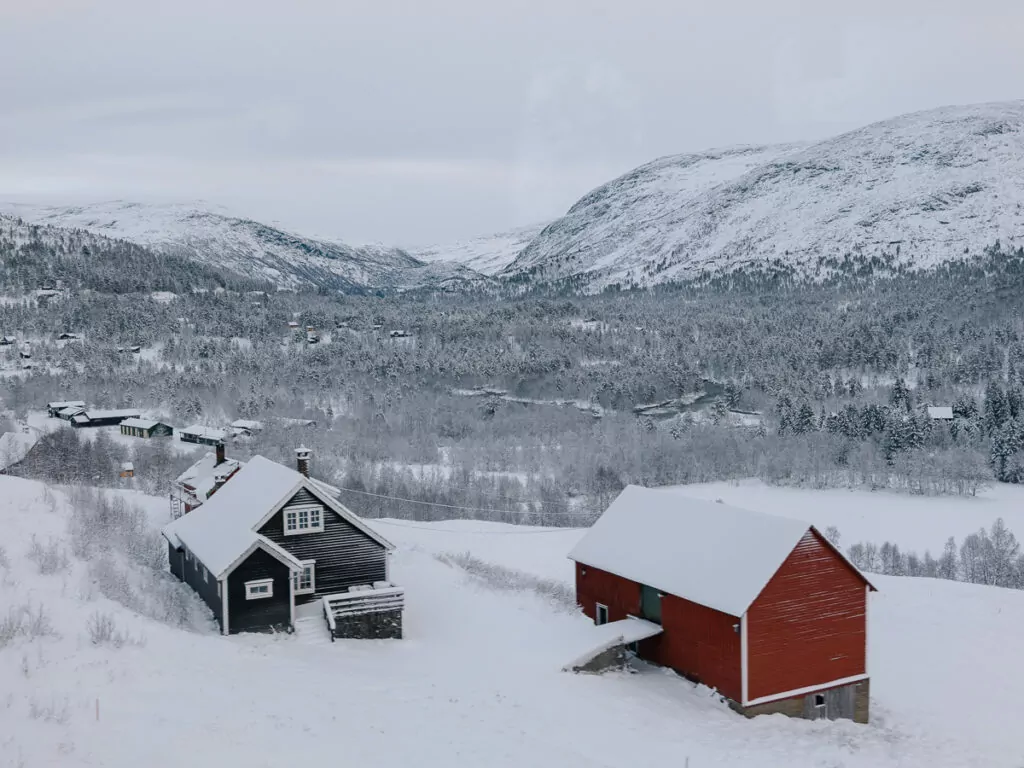
From Oslo to Trondheim there’s a night train (this was out of service for quite a while in 2023/2024 due to a collapsed bridge, but it’s back up and running now). Trains depart Oslo just after 11pm and arrive in Trondheim 7h 30m later at 6.40am.
There are normal train seats as well as private sleeper cabins available.
✈️ Bergen to Trondheim by plane
If you’re short on time and want to minimise travel days, you can catch an easy 1h direct flight from Bergen to Trondheim with Norwegian, SAS or Wideroe.
They’re pretty cheap, they start from around €25 if you book well in advance but you should expect to spend up to €140ish for super last minute bookings. Just keep in mind that short flights within Europe typically don’t include any check in luggage, so you’ll need to pay extra for that.
I use Skyscanner to check all flight prices and compare different options, then I’ll always book direct with the airline to avoid having to deal with third party travel agencies if there are any delays or cancellations.
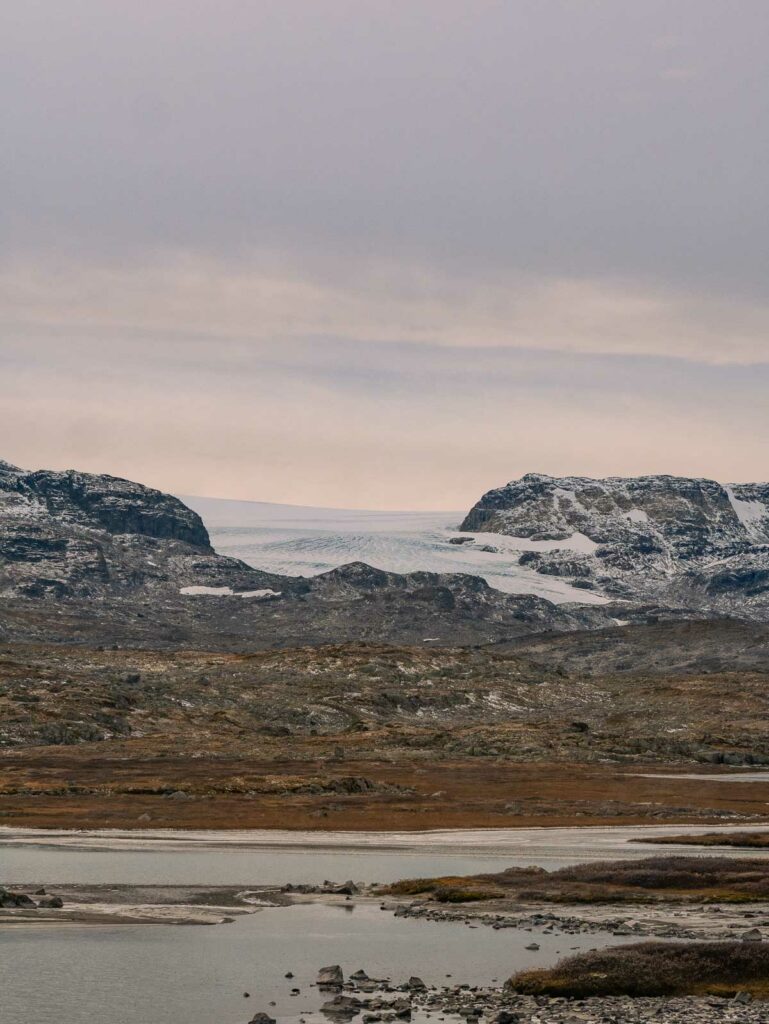
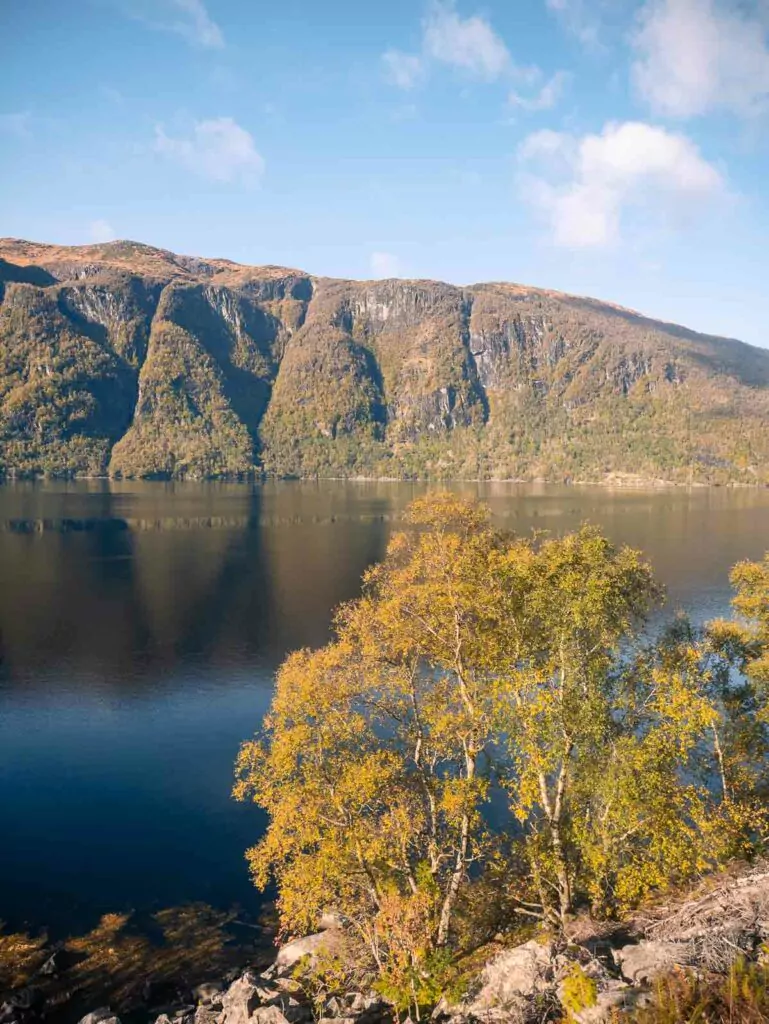
1 day in Trondheim
About Trondheim
Trondheim is an easygoing student city that acts as a travel hub and connects northern and southern Norway.
It’s known as both the tech capital and the gastronomic capital, the former due to the giant University of Science and Technology that keeps the city youthful and lively, and the latter thanks to its innovative and unique culinary scene that boasts two Michelin-starred restaurants and many other top-rated eateries.
It might not be at the top of your Scandinavia bucket list, but it’s worth a stop if you’re a keen photographer, if you want to learn about Viking history or if food is your top priority. The plus side is that it’s super compact and easy to get around by foot/bike, so one day is probably enough before you continue your Norway adventure.

Things to do in Trondheim
- Visit Nidaros Cathedral, the city’s most iconic landmark and the endpoint of the St Olav Ways pilgrim paths, the most important pilgrimage route in northern Europe
- Kayak or paddleboard down the Nidelven River (it’s downstream so it’s fairly easy!)
- Learn about the region’s history at the Sverresborg Trondelag Folk Museum
- Try your hand at science experiments at the interactive Trondheim Science Center
- Visit the unique Rockheim museum of popular music
- Eat your way around the city’s impressive dining scene
- If you have a rental car and love cheese, make a pilgrimage of your own to Gangstad Gårdsysteri, a award-winning dairy farm and cheese factory! Their blue cheese Nidelven Blå took the top prize at the 2023 World Cheese Awards. The drive is just under two hours, but you should also be able to find the cheese in some local supermarkets or delis.
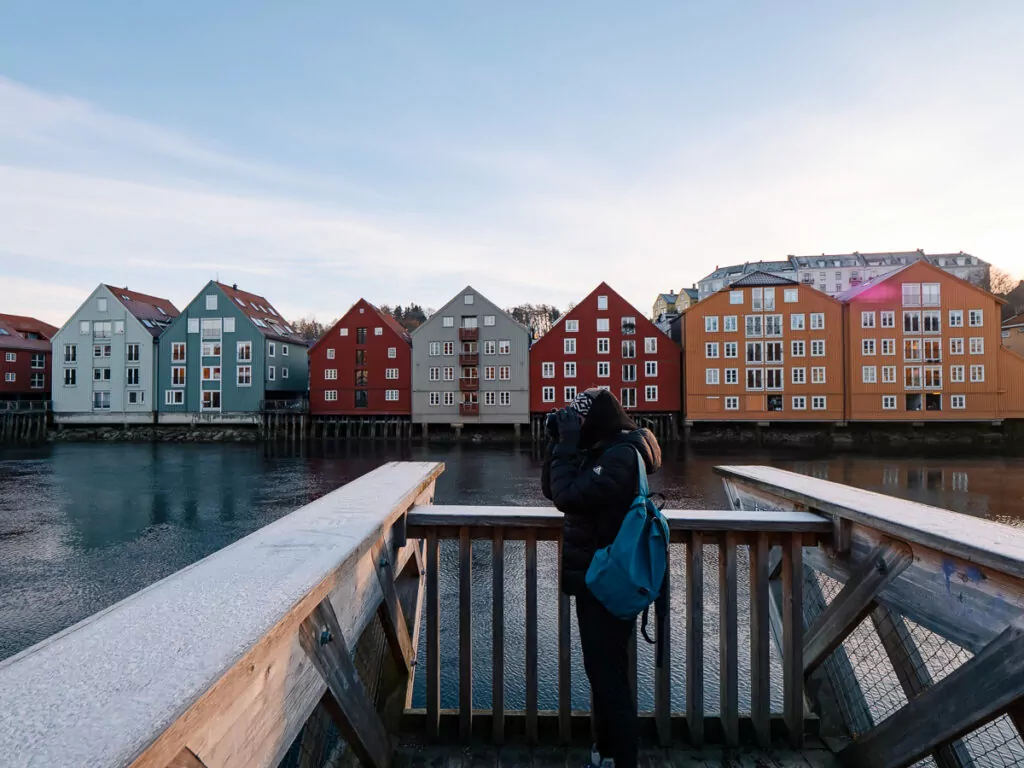
Where to stay in Trondheim
Budget
- Trondheim Vandrerhjem (the only hostel in Trondheim, great reviews and 10 min bus from the train station)
- P-Hotels Brattøra (I stayed here, it’s actually decidedly average BUT it’s right next to the train station so perfect if you’re just needing an easy one night stay between trains)
Mid-range:
- There are lots of private apartments available for rent in Trondheim that offer better value than most hotels, see them all here
- Clarion Hotel (simple but well-rated affordable hotel on the water right by the Hurtigruten port and train station)
- Quality Hotel Prinsen (also simple with excellent reviews but in the middle of town)
Luxury:
- Britannia Hotel (5* heritage hotel with beautifully decorated rooms)
Make your way from Trondheim to the Lofoten Islands (1-2 days)
🚢 Trondheim to Lofoten by boat
Just like the Bergen to Trondheim cruise, you can get from Trondheim to Svolvær in the Lofoten Islands with Havila Voyages or Hurtigruten on a one night trip, arriving late on the second day.
It’s super scenic, convenient and more comfortable than the train and express ferry combo, and often is comparable to flights in terms of price, so it’s my top recommendation for making this journey!
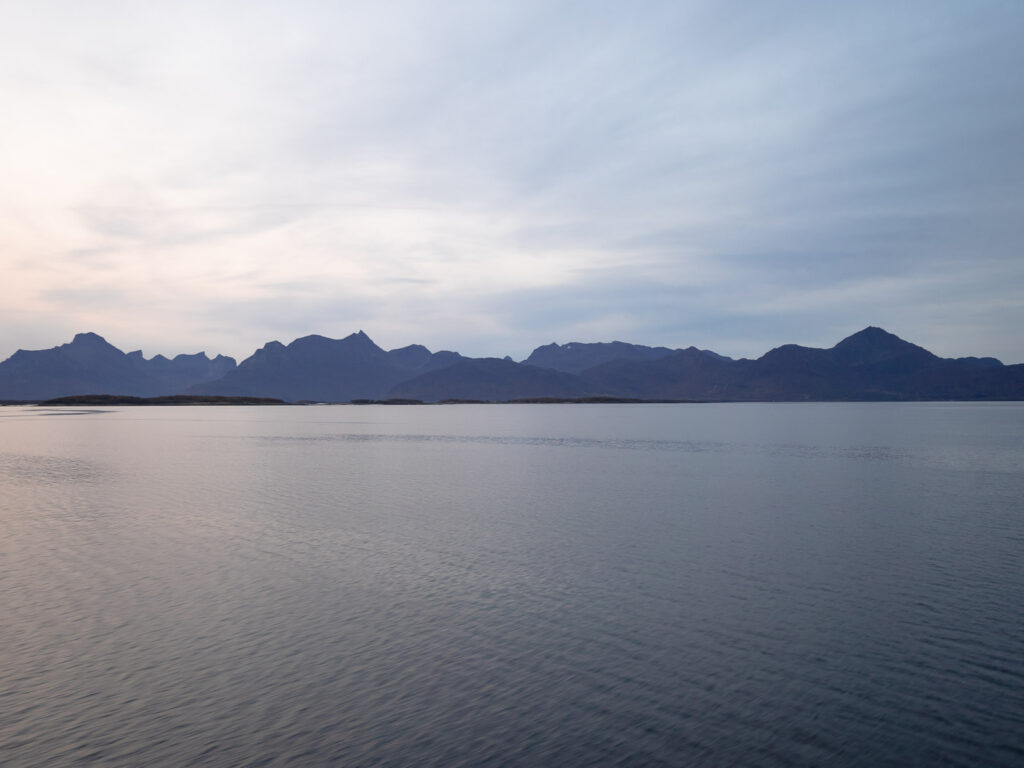
🚂🛥️ Trondheim to Lofoten by train and ferry
The cheapest option is to take the train from Trondheim to Bodø, and then catch the express ferry to Svolvær.
If you’re travelling between Monday and Saturday, the timing is too tight to do the whole trip in one day. The day train leaves Trondheim at 7.49am and arrives in Bodø at 5.44pm, but the express ferry leaves at 6pm on M/T/W/Th/F/Sat so you wouldn’t get there in time.
In this case, you’ll need to take the night train from Trondheim to Bodø (10 hours from 11.05pm to 9.05am) and spend the day exploring the city before you catch the express ferry at 6pm. There are luggage lockers at Bodø train station for you to store your bags, and you can choose from a normal seat or a private sleeper cabin.
If you’re travelling on a Sunday though you’re in luck, the express ferry leaves an hour later at 7pm which means you have time to get from the train station to the ferry terminal as long as there are no train delays.
⚠️ Important: As of 14 April 2025, there is no night train service running on the Trondheim to Bodø route due to a shortage of trains, more info here. At this stage your best bet is to time your trip to Bodø and onwards to Lofoten for a Sunday to be able to catch the later express ferry, or take the Havila or Hurtigruten one night boat trip from Trondheim as I mentioned above.
(P.S. Train/ferry times are correct as of April 2025 but you need to check your actual dates in case of any timetable changes)
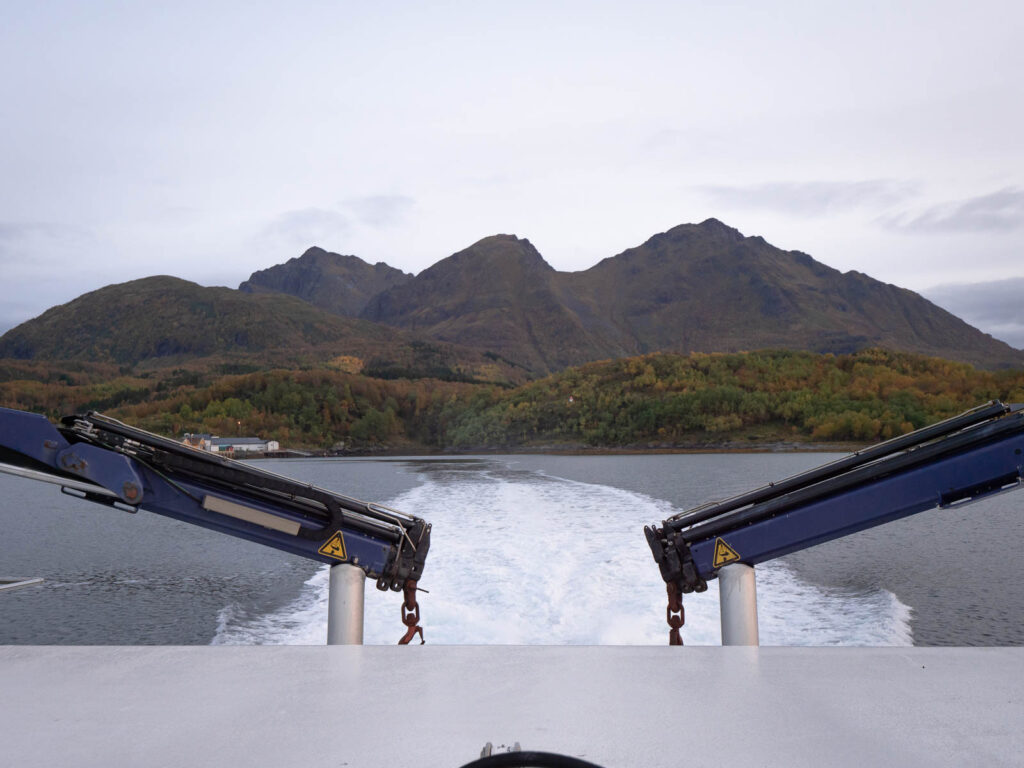
✈️ Trondheim to Lofoten by plane
You can fly from Trondheim to Svolvær in the Lofoten Islands with a regional airline called Wideroe, you’ll stop in Bodø and generally the two flights and short stopover are anywhere from 2h 20m to 5h 30m. A typical trip on this route costs around €150-200 not including luggage, but you might pay more for busy periods or last minute bookings.
These planes are small and they do sell out in advance, especially in summer, so lock in in ASAP if this is how you want to reach the Lofoten Islands.
Lofoten Islands (3-4 days)
About Lofoten Islands
Serving up some of the most dramatic scenery in the entire world, this Arctic archipelago is an absolute haven for photographers and outdoor enthusiasts. This place actually sat at the very top of my bucket list for years before I finally managed to tick it off during my most recent Europe trip!
The landscapes need to be seen to be believed, with sheer cliffs of an epic scale rising from turquoise fjords, postcard-perfect red fishing houses perching precariously over the water and the chance to experience midnight sun in summer or the dancing Northern Lights in winter.
Give yourself 3-4 days to experience the region’s magic, or you could certainly stay longer if you’ve got time to spare.
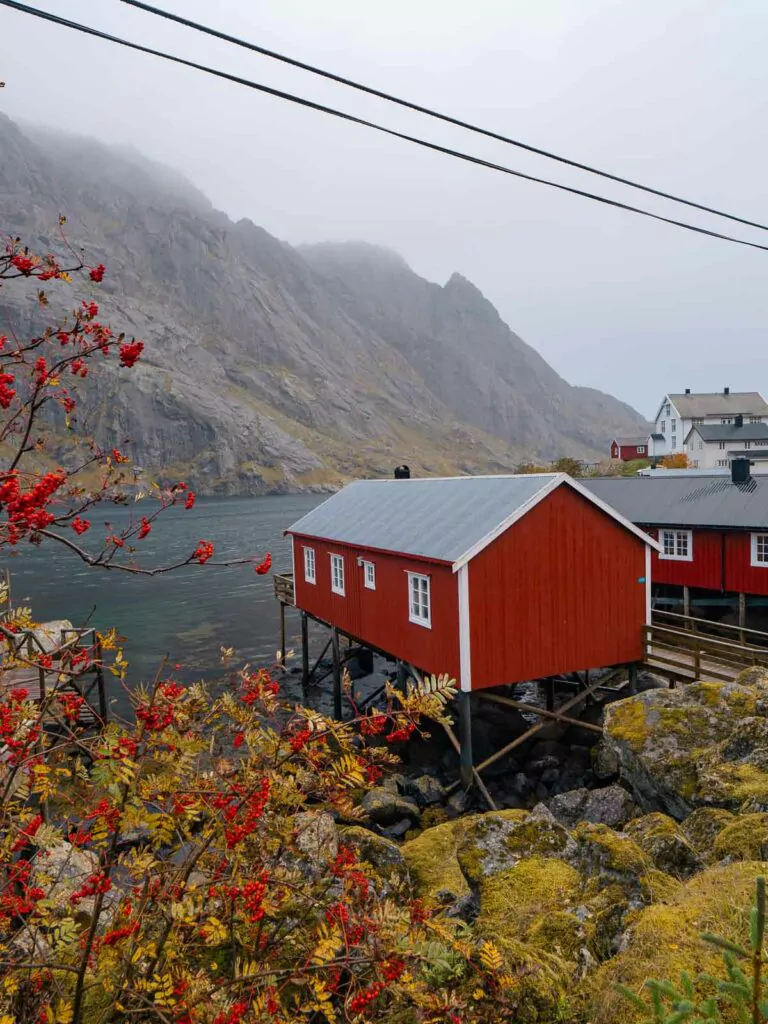
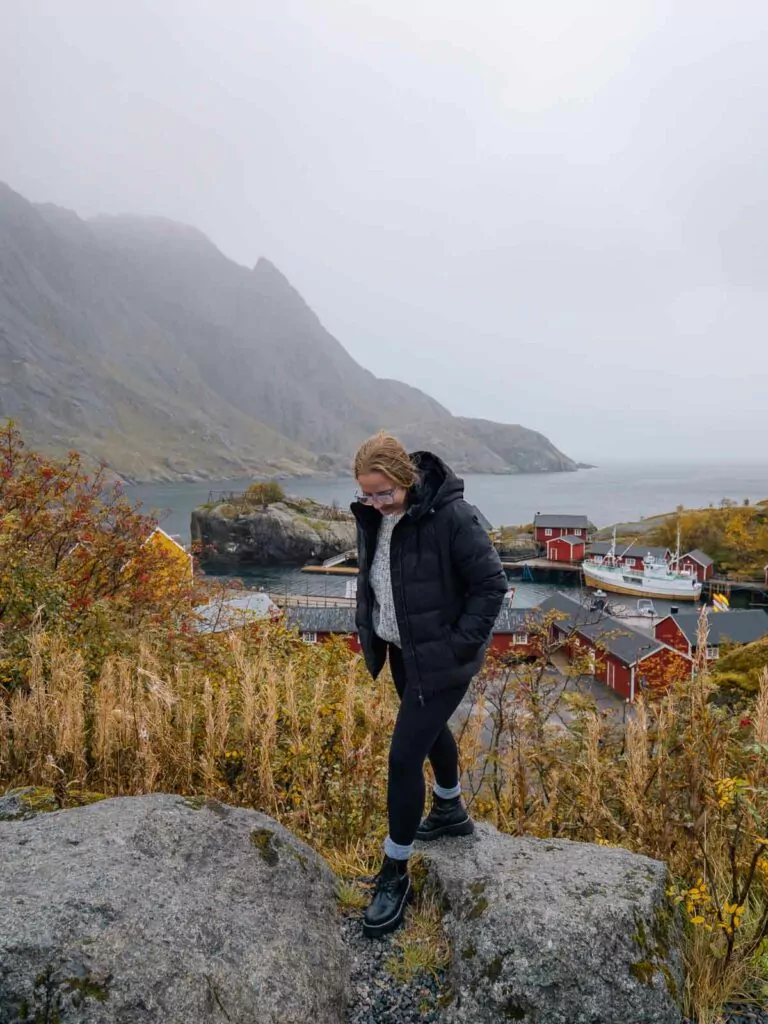
How to get around the Lofoten Islands
🚗 The easiest way to get around the Lofoten Islands is by car or campervan, this way you’ll have freedom and flexibility of where you go and won’t have to spend hours figuring out a bus-friendly itinerary. Prices shoot up for summer so book early, and winter conditions can be pretty gnarly so if you’re not used to driving on snow and ice it’s best to book sightseeing tours instead.
🎤 If you’d prefer a stress-free way to see the Lofoten highlights, I highly recommend the local legends at Lofoten Lights! They run guided small group tours all over the islands, including your usual sightseeing tour of the major spots, photography tours, hiking trips, Trollfjord cruises and Northern Lights tours.
I joined their two-day photography tour and it was brilliant, we saw sooo many stunning places, I filled a giant memory card, and our guide was a passionate advocate for sustainable tourism within the Lofoten region that protects the environment as well as local culture. I also jumped on their Northern Lights chase one evening, and we found the perfect spots to watch the aurora!
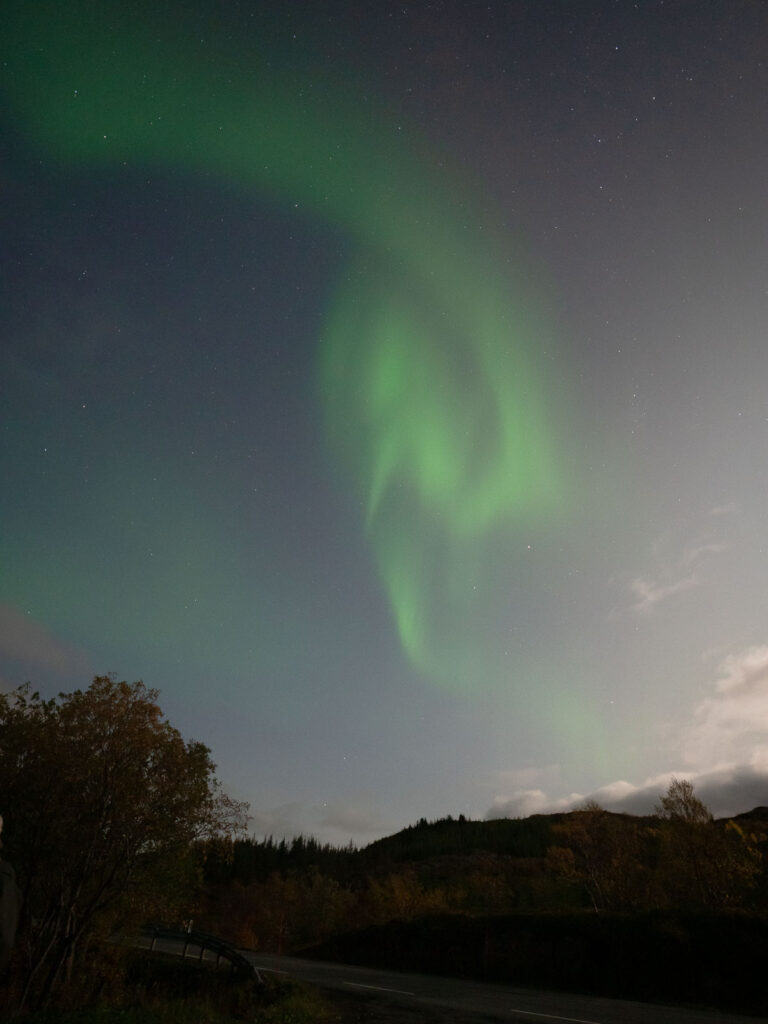
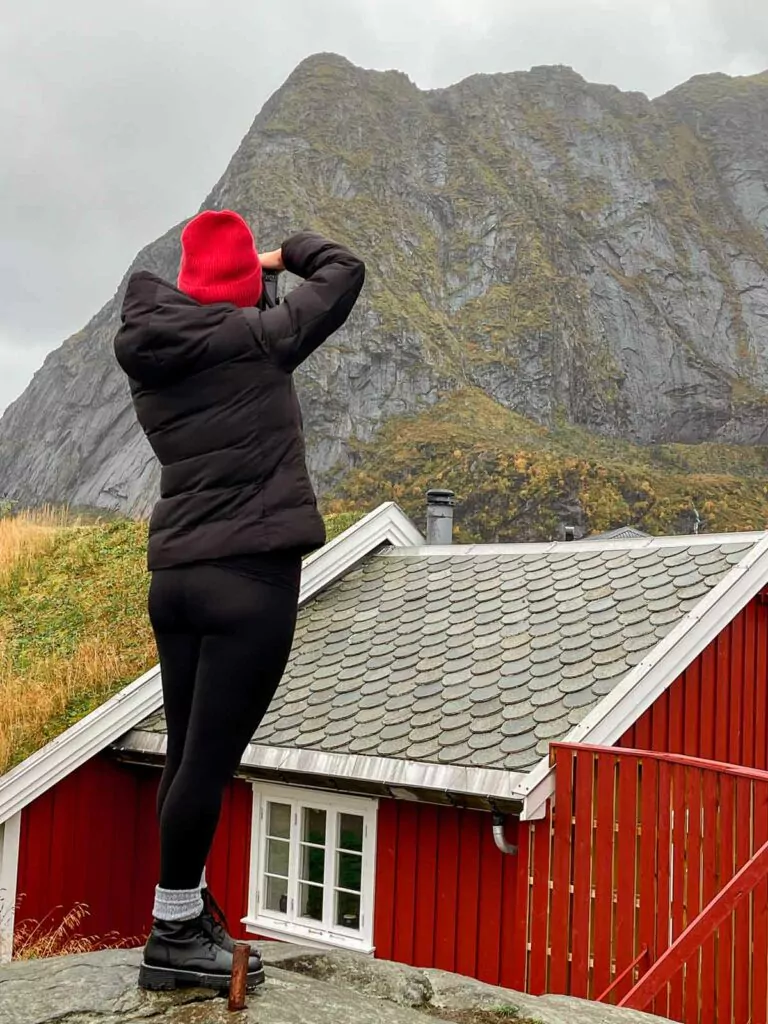
🚌 If you do want to use public transport, there is a bus network that stretches impressively far and wide given the archipelago’s gloriously messy geography, but it’s not particularly convenient or easy to navigate. There are buses throughout the day that run the length of the E10 (the main highway) but if you miss one, you might be waiting 2+ hours for the next one, at a bus stop in the middle of nowhere and probably in the rain 🙃
I arrived in the islands with a grand plan to explore via bus, bought the €110 (ouch) unlimited travel pass to cover my express ferry and the buses I had planned to use, then realised my plan sucked so I booked a couple of tours and paid for a last minute rental car for my final day to tick off some lesser-visited spots. Learn from my mistake!
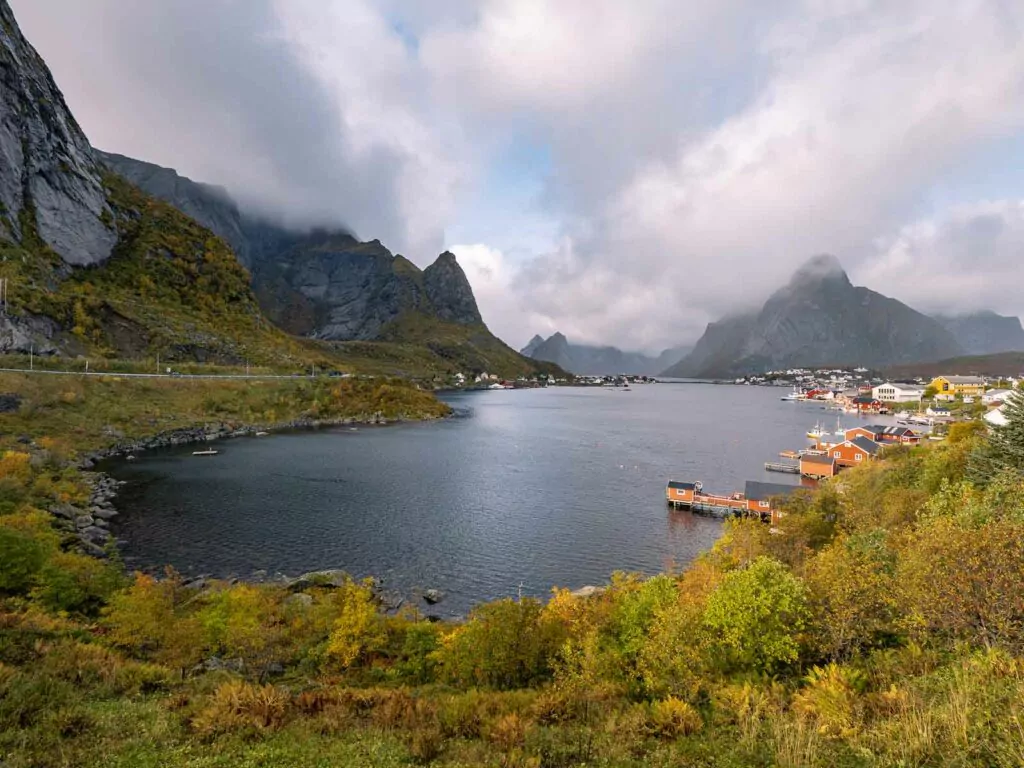
Things to do in the Lofoten Islands
- Lace up your boots and hit the hiking trails! There are a range of options with varying levels of difficulty but some popular ones are Reinebringen (probably the best view in Norway), Nonstinden, Kvlavika Beach and Djevelporten (a rock precariously wedged between two cliffs). Always check hiking conditions before you go, be prepared for a change in weather, and don’t push your limit, the hikes in Lofoten are pretty rugged and people do get hurt (and worse).
- Take a silent cruise through Trollfjord on a hybrid catamaran
- See the Northern Lights if you’re there in the right season, your best bets for enough darkness combined with clear skies are October, February and March
- Wander the world’s cutest fishing villages. There are plenty to see but Hamnøy is the iconic one from postcards, Henningsvær has lots of cute cafes and shops, Å is the last village and has a famous bakery serving world-renowned cinnamon rolls (only open June-Sept), and Nusfjord is my personal favourite, it’s a bit of a detour off the E10 so it was much quieter than the others when I was there.
- Get up close and personal with nature on a RIB wildlife safari to spot sea eagles
- Try delicious smoked salmon burgers and stockfish at Anita’s Seafood in Sakrisøy
- If you’re brave, you could learn to surf at Unstad Arctic Surf 🥶
- Visit some of the other beautiful beaches in the islands, the best ones are Haukland, Uttakleiv and Ramberg
- Park up at Fredvangskrysset for an epic view of the bridge
- Experience the scenery from horseback with a horse trek on Icelandic horses
- Try your hand at catching a big one on a guided fishing trip on a traditional fishing boat
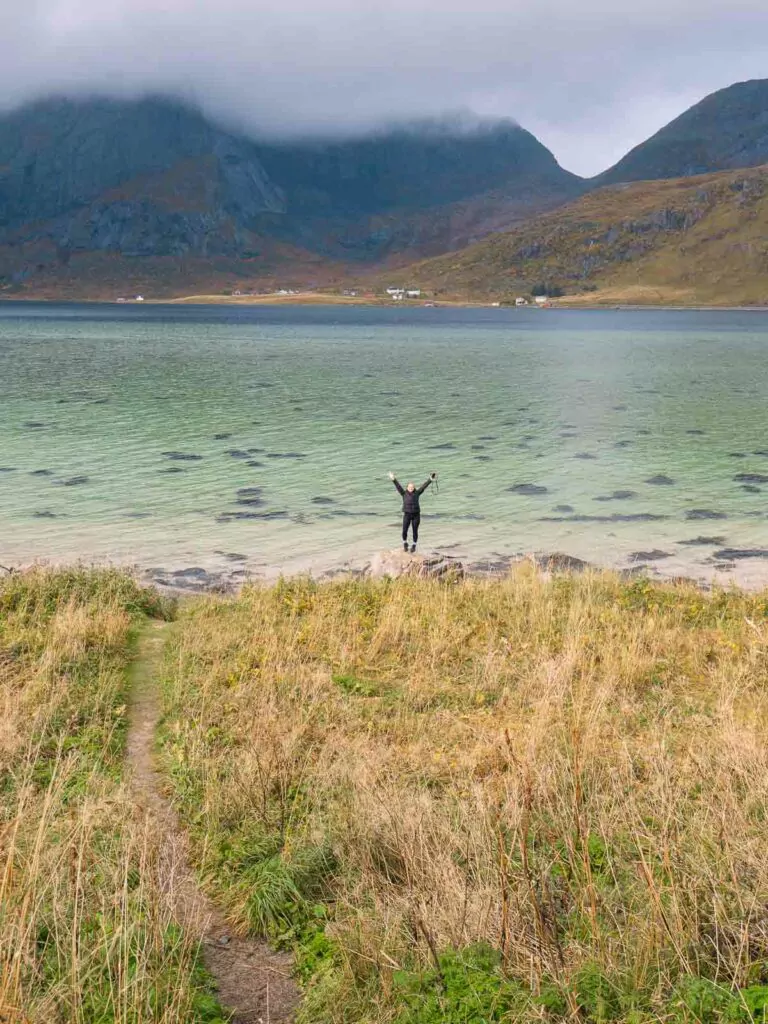
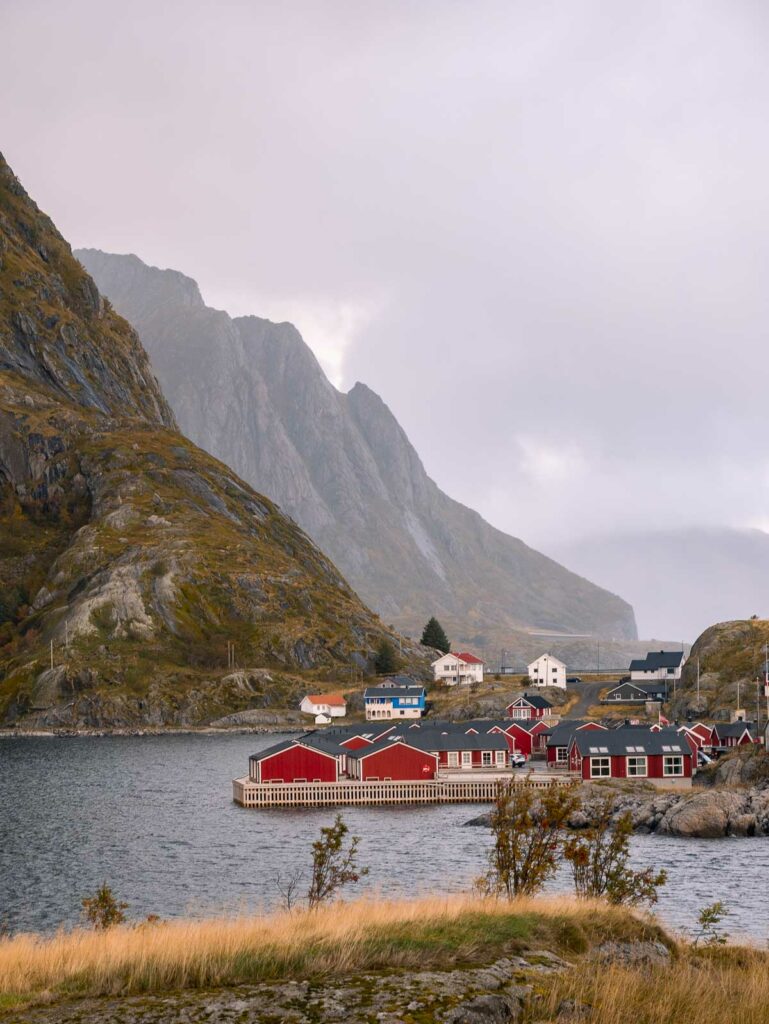
Where to stay in the Lofoten Islands
Budget
- FURU Hostel (best-rated hostel in Lofoten, cosy and stylish with social spaces to meet other travellers)
- Kræmmervika Rorbuer (rustic cabin dorms and apartments)
- Lofoten Å HI hostel (basic dorms and shared rooms right at the end of the E10)
Mid-range:
- Lofoten Rorbuer in Svolvær (my #1 recommendation, top-rated traditional ‘rorbu’ with rooms, studios and apartments, a guest kitchen, terrace with BBQ, amazing views and a Norwegian Forest cat called Bean)
- Thon Hotel Lofoten (popular hotel right by the Svolvær ferry terminal)
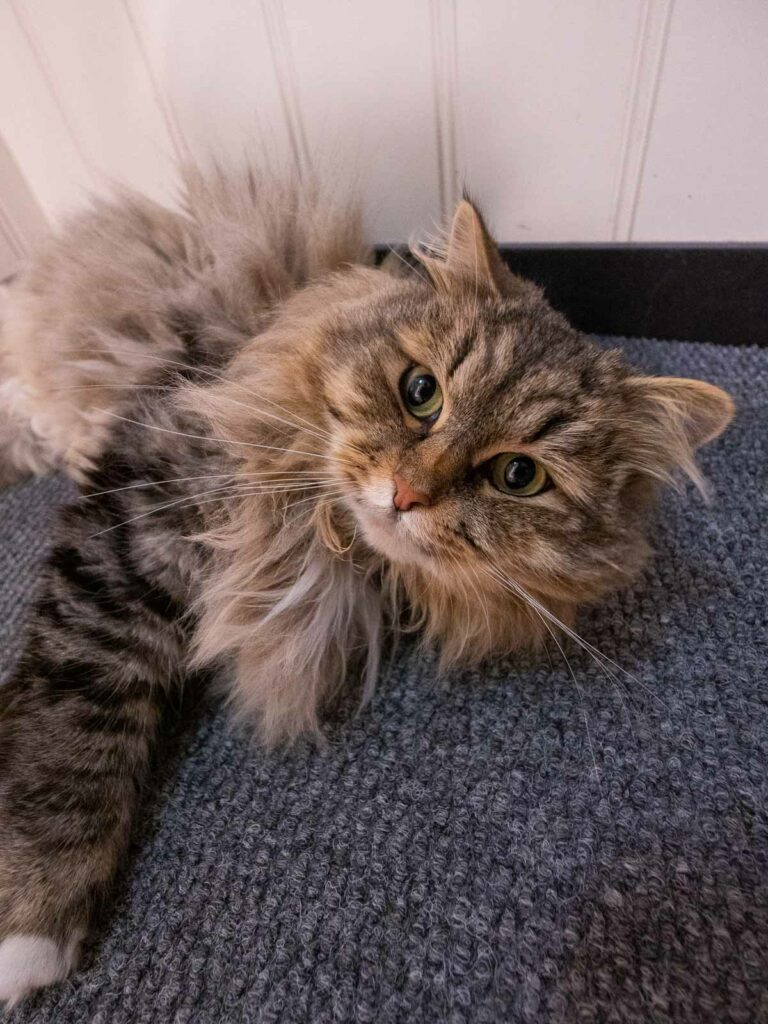
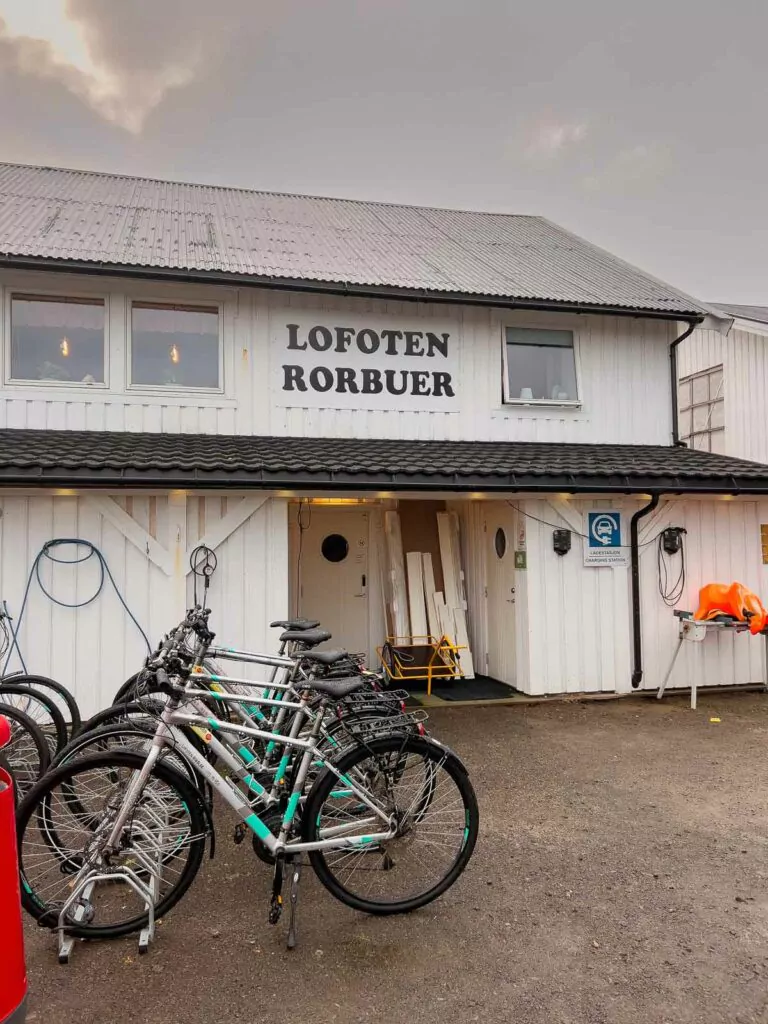
Luxury:
- Lofoten Glamping Dome (the ultimate glamping experience, with panoramic views from your bed, comfy furnishings, a mini kitchen and a fireplace)
- Lofoten Suiteapartments (well-equipped high end apartments on the waterfront)
- Unstad Arctic Resort (beautiful apartments at the Unstad surf school, with a shared hot tub and sauna to warm up after braving the water)
A quick note about responsible travel in the Lofoten Islands
After some very honest conversations with Lofoten locals (including some who work in travel), there are concerns about the sustainability of the growing tourism industry in the region.
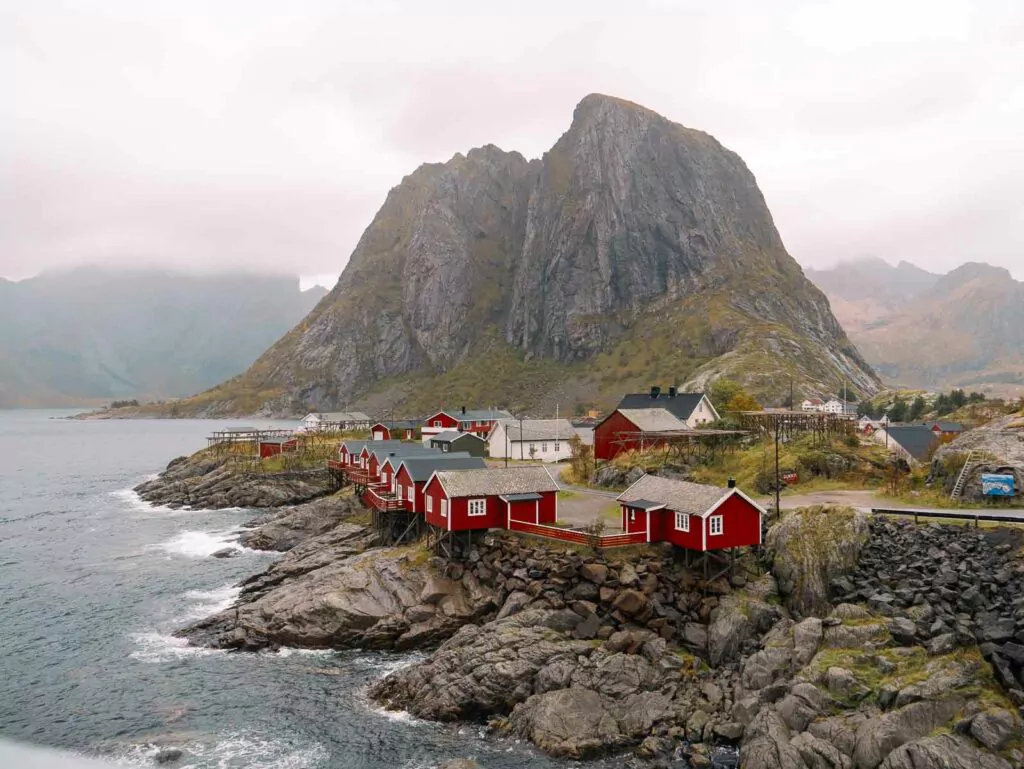
I’m a firm believer that as tourists we have a responsibility to listen to the locals of the places we visit, so I wanted to share some of their suggestions for minimising your trip’s impact on the region:
- Consider avoiding the summer months and visiting in the shoulder season instead. Lofoten has an extremely unbalanced tourism calendar, it’s rammed in July and August which puts major pressure on local infrastructure and tourism companies struggle to meet demand, and then the rest of the year is quieter. This means that people working in tourism sometimes lose their jobs after peak season, there’s not much incentive to improve infrastructure like roading and healthcare when it’s only necessary for two months of the year, and tourists arrive in summer expecting the Lofoten they’ve seen in photos only to realise the photos of empty beaches and quiet hikes are from May or October.
- If you’re renting a car, DRIVE SAFELY. In my four days there saw two near misses that could have been catastrophic, one where someone pulled over on a main road to take a photo of a rainbow and opened their door into the path of the car behind them (who had to take evasive action to avoid a crash), and another where a campervan looking for the Northern Lights did a U-turn after seeing me taking photos in a carpark, without them realising a truck was coming around a bend the other way. The sound of the brakes screeching makes me shiver, luckily they stopped in time. If you’re going to drive, you NEED to focus on the road rather than be distracted by the scenery. And if you want to enjoy the views, book a tour instead!
- If you’re hitchhiking, only hitchhike in areas where it’s safe for cars to stop. Multiple locals expressed their worry about hitchhikers looking for a ride on windy roads in places without safe stopping bays or enough roadside to allow cars to pass safely. Don’t be this person.
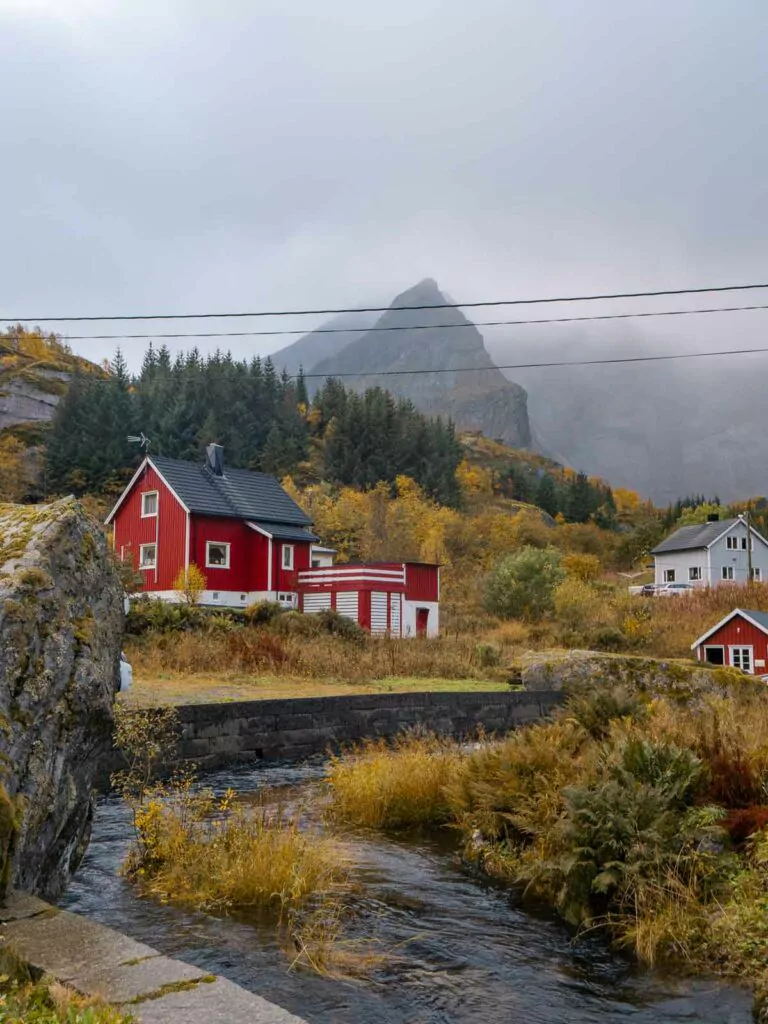
- Tread lightly. We are so lucky to be able to enjoy Norway’s pristine nature, leave it just as good as you found it for the next person! Take your rubbish with you, dispose of waste correctly, and respect the environment.
- Don’t hurt yourself. This is a tricky one because no one wants to get hurt while travelling, but it’s important to know that the Lofoten Islands have a shitty ratio of ‘likelihood of injury’ to ‘medical capacity’. As in there’s lots of ways to hurt yourself, and minimal healthcare or rescue services if you need them! With only 25,000 permanent locals, the Lofoten healthcare system is absolutely not built to cater to thousands of tourists each year who break ankles (or worse) from slipping down icy hiking trails. Know your abilities before taking risks, and have good travel insurance to cover medical transport if something bad happens, because they’ll probably medivac you to the mainland.
- Respect the locals. Many villages in the archipelago are still working fishing villages, and there have been issues with tourists walking into factories and onto working wharves to take photos of people doing their jobs. A good general rule for responsible travel photography is to not take photos of strangers without asking.
This slice of Arctic paradise is honestly one of the most beautiful places in the world, and I really hope that we can find balance and harmony between tourism that is safe, responsible and sustainable, and locals who receive economic benefit and get to share their magical home with the those of us lucky enough to get there.
Okay, thanks for coming to my TED Talk!

If you were planning to do this Scandinavia itinerary during the summer months (when Lofoten is packed), you could easily switch it out for the neighbouring region of Vesterålen, which has similarly dramatic landscapes, loads of wildlife spotting opportunities, 200+ hiking trails and far fewer visitors. You can find more info about Vesterålen in my two week Norway itinerary.
Make your way from the Lofoten Islands to Stockholm (1-2 days)
🚌🚂 Lofoten to Stockholm by bus and train
The journey from Lofoten to Stockholm by public transport is longgggg, but it’s all part of the adventure.
Catch the morning bus from Svolvær (or any other stops along the main E10 highway) to Narvik, it takes just under four hours and the views are mind-blowing. Check the timetable for your travel dates but typically it arrives in Narvik at 1.30pm.
Grab some food in Narvik and stock up for the next big trip, a 19 hour night train from Narvik to Stockholm. Phew! I know that sounds daunting but with a private sleeper it’s actually pretty comfy, I downloaded loads of Netflix shows, stocked up on snacks and enjoyed the scenery (while the sun was up). The first little bit of the trip, winding along Ototfjord, had views that are honestly up there with the best train views I’ve ever seen (and I’ve been on a lot of beautiful train trips in Europe).
The night train usually leaves Narvik at 3.11pm and arrives in Stockholm at 10.09am the following morning.
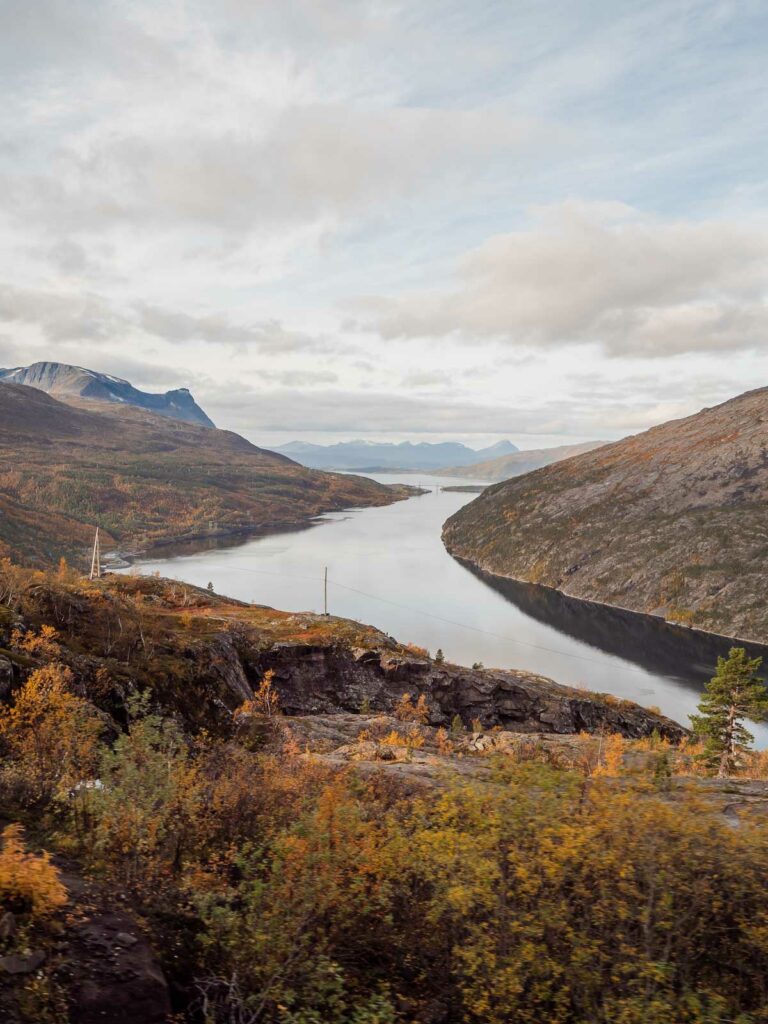
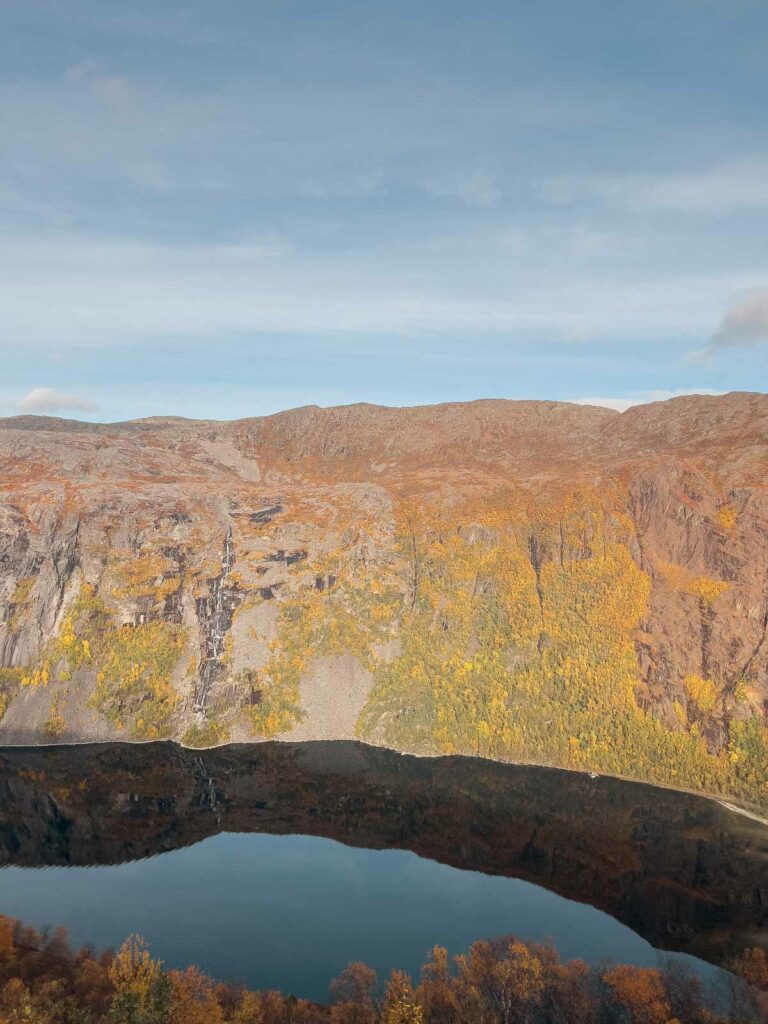
✈️ Lofoten to Stockholm by flight
For a much quicker (but less epic) journey you can fly from the Lofoten Islands to Stockholm with one or two stops, depending on the time of the year.
The one-stop option is much easier in the summer season, when a number of different airlines operate direct flights from one of the Lofoten airports (there are a few to choose from) to Oslo, where you can get an easy connection to Stockholm.
If you’re visiting outside of summer the one-stop options are few and far between (and get booked up quickly!), but year-round you can fly Svolvær to Bodø, Bodø to Oslo, and then Oslo to Stockholm.
Stockholm (3 days)
About Stockholm
Hands down the prettiest city in Scandinavia, Stockholm is made up of 14 islands connected by bridges, earning it the unofficial title of the ‘Venice of the North’. And it’s not just the water that makes it photo-worthy, the city also offers a medieval Old Town, countless public art installations, urban green spaces dotted around the metropolis as well as stunning nature hubs within easy reach by boat.
Sustainability is at the forefront of Stockholm’s development strategy, with the ambitious goal of being a fossil-free and climate-positive city by 2040. That makes it the perfect place to end your no-fly Scandinavia itinerary*.
*If you’re choosing to fly during this itinerary, that’s totally okay, no judgement here ❤️ As a full-time traveller from an island literally thousands of km from its closest country, flights are an unfortunate byproduct of the life and career I’ve chosen so I certainly can’t tell anyone that they shouldn’t fly. I am definitely aware of the impact of my travels and try to reduce *unnecessary* flights as much as I can, but I also appreciate that I have the time and flexibility to travel overland and that sometimes cost, time restrictions and accessibility needs mean that’s not an option for some travellers. If flying isn’t a necessity for you then I’d really encourage you to try follow this itinerary to see Scandinavia by train because it’s a great intro to rail travel, but you just gotta do whatever is right for you!

Things to do in Stockholm
- Take a walking tour through Gamla Stan, Stockholm’s maze-like old town
- Channel your inner Dancing Queen at the ABBA Museum, or visit the AVICII Experience if that’s more your vibe
- See the famous metro station artwork, the best ones are Solna Centrum, Stadion, T-Centralen and Kungsträdgården
- Jump on a cruise through Stockholm’s archipelago, made up of 30,000 islands (not a typo!)
- Or take a guided kayak tour through the archipelago instead, with a hot sauna included
- Search for something to take home at the thrift shops or design stores in Södermalm
- Explore Drottningholm Palace (the residence of the royal family) and its gardens
- Experience Swedish ‘fika’, a local custom that kind of refers to a fancy coffee break where you take time out of your day to savour a hot drink and cinnamon bun. Hard to explain but you gotta try it!
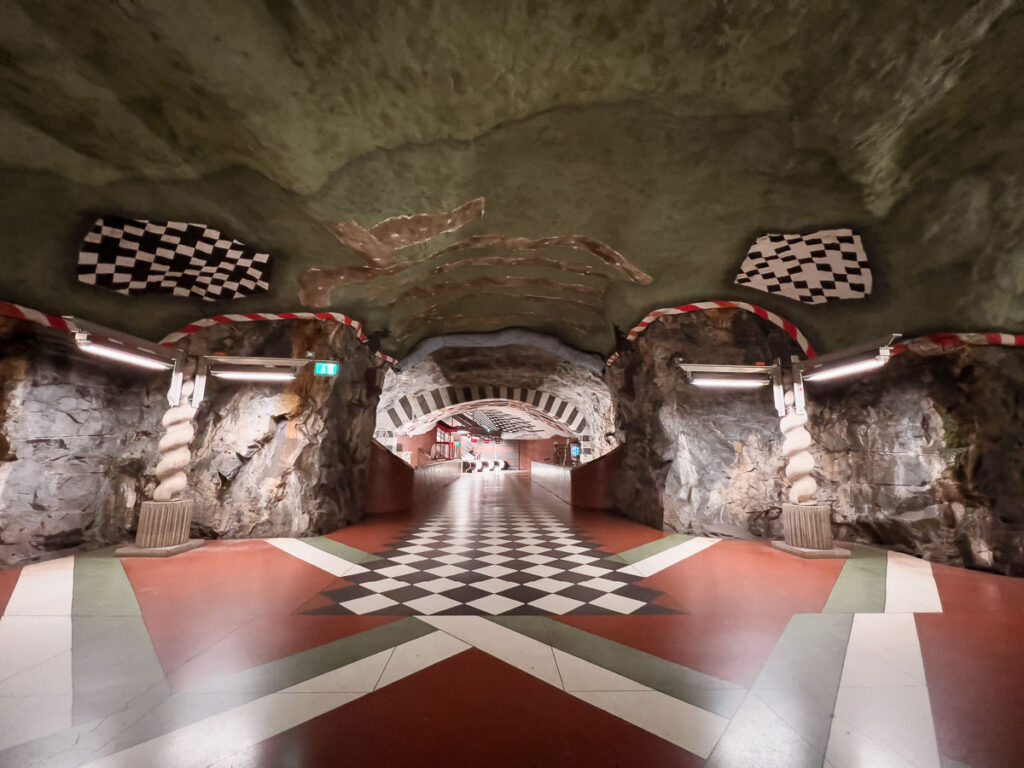
Where to stay in Stockholm
Budget
- City Backpackers Hostel (exactly what you’d expect for something named ‘City Backpackers Hostel’, typical cheap dorm rooms near the train station)
- Castanea Old Town Hostel (another typical backpacker hostel, located in Gamla Stan)
- Rygerfjord Hotel & Hostel (a permanently moored boat, I stayed here, tiny rooms and very basic facilities but the private rooms are super cheap!)
Mid-range:
- Backstage Hotel (funky design hotel next to the ABBA Museum, really good value)
- UNITY Hammarby Sjöstad (affordable studio apartments, slightly out of the city but easy access by public transport)
- Hotel Frantz (top-rated boutique hotel in Stockholm’s trendy Södermalm district)
- Victory Hotel (quirky maritime-themed hotel packed with antiques, in the middle of Gamla Stan)
Luxury:
- Ett Hem (world-class boutique hotel with incredible reviews, super intimate, elegant and top-rated restaurant)
- Villa Dagmar (another luxury boutique option, stylish and close to the city centre)
- Grand Hotel Stockholm (a Stockholm icon, top-notch service and an unbeatable location)
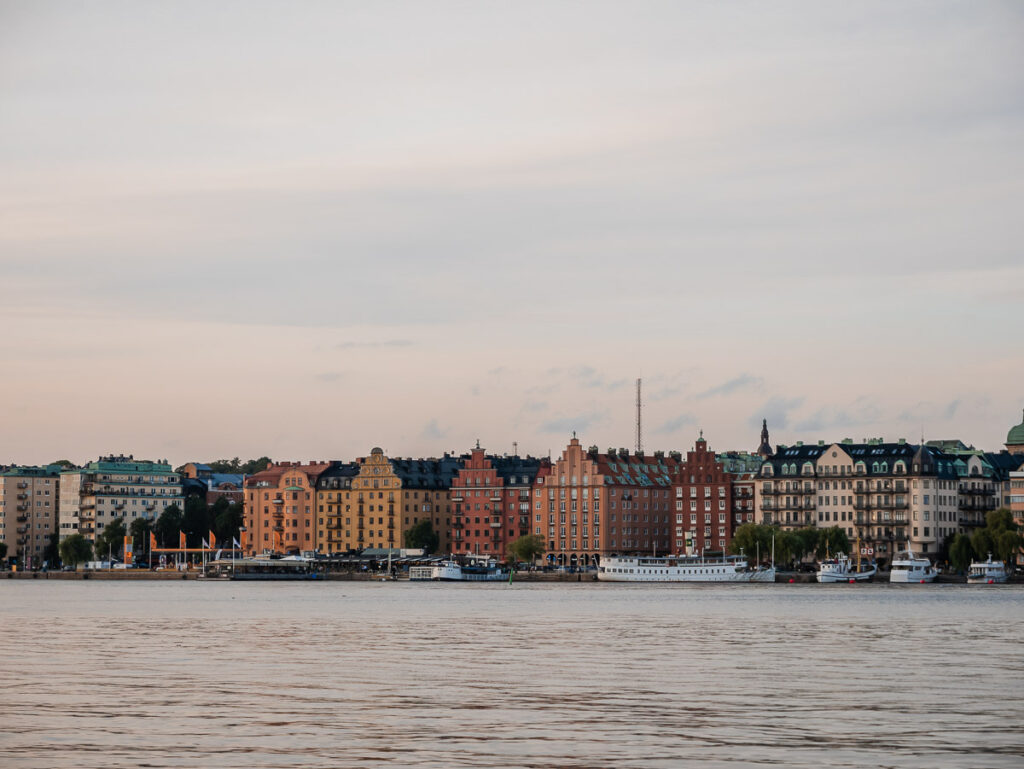
Detours/extensions for your 3 week Scandinavia itinerary
If you have more than three weeks in Scandinavia
If you have an extra week to spare, I’d suggest you extend your trip beyond Scandinavia and head to Helsinki and Rovaniemi in Finland.
How to get from Stockholm to Helsinki
Catch the Silja Ferry from Stockholm to Helsinki for a unique travel experience, and forget whatever you’re picturing because this isn’t your typical overnight ferry. It’s an actual cruise ship!
There are a variety of cabins available (I was in an A-class sea-view cabin and it was more than comfortable) with a huge promenade flanked by duty free retail shops and eateries ranging from cheap and cheerful to high-end dining. On other floors you’ll find a casino with machines and game tables, an entertainment lounge with shows throughout the night, a nightclub and karaoke bar, a wellness area with hot tubs and private saunas, and a playroom for those of you travelling with kiddos.
My only complaint is that I was travelling solo and didn’t feel comfortable enough to let loose at the karaoke bar, which just means I have an excuse to go back 🤷🏼♀️
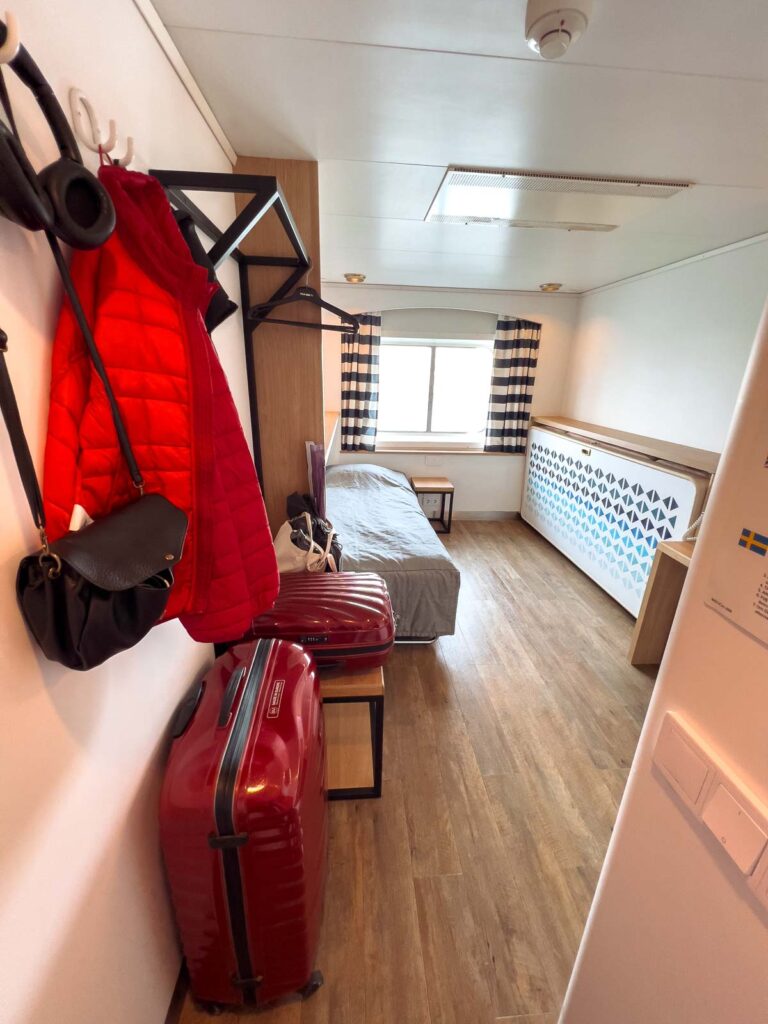
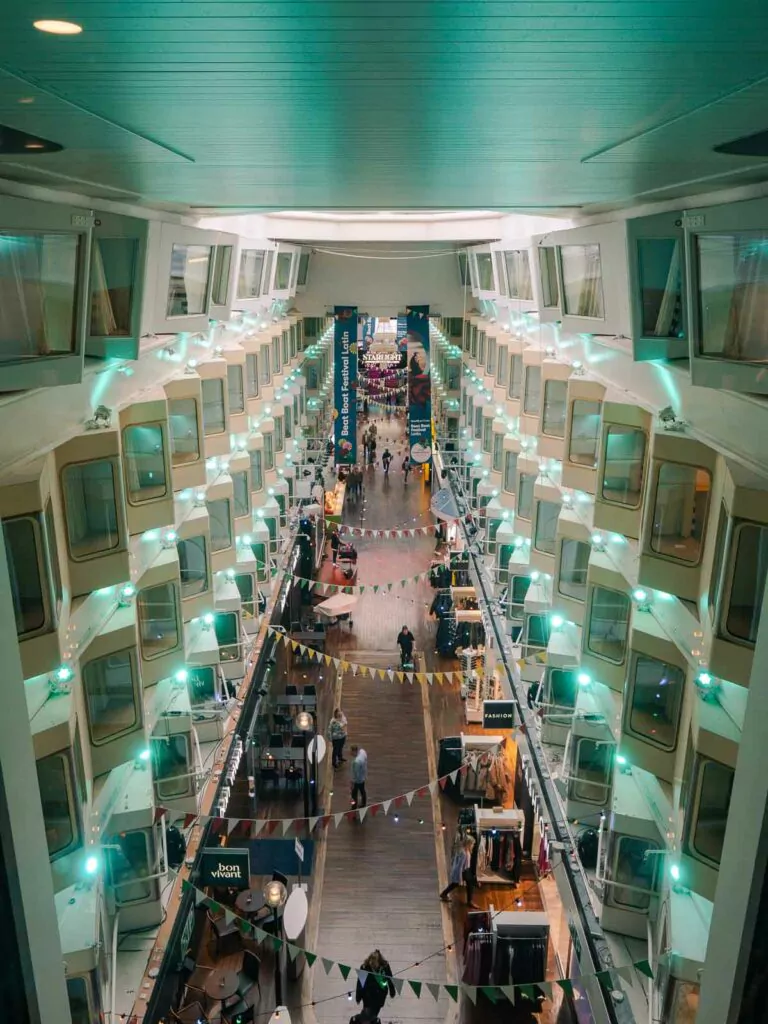
2 days in Helsinki
After the charm of Copenhagen, the museums of Oslo and the beauty of Stockholm, I have to be honest and say that Helsinki wasn’t my favourite city at first impression. It definitely isn’t as photogenic as its Scandi neighbours, but Helsinki’s charm is more intangible and lies in experiences rather than attractions.
With a couple of days in the city you can:
- See the main landmarks of Helsinki Cathedral, Temppeliaukio Church and Uspenski Church
- Treat your body and mind to a sauna, there are lots to choose from ranging from simple and authentic through to epic entertainment complexes (like Löyly!)
- Grab a coffee at Cafe Regatta, a historic and super cute seaside cottage
- Go inside the National Library of Finland to see the stunning interior
- Discover the sea fortress of Suomenlinna (highly recommend a walking tour here)
- Visit one of the many museums and art galleries
- Eat your way around the Old Market Hall or Hietalahti Market
- Join a walking tour to learn about the city’s architecture and history
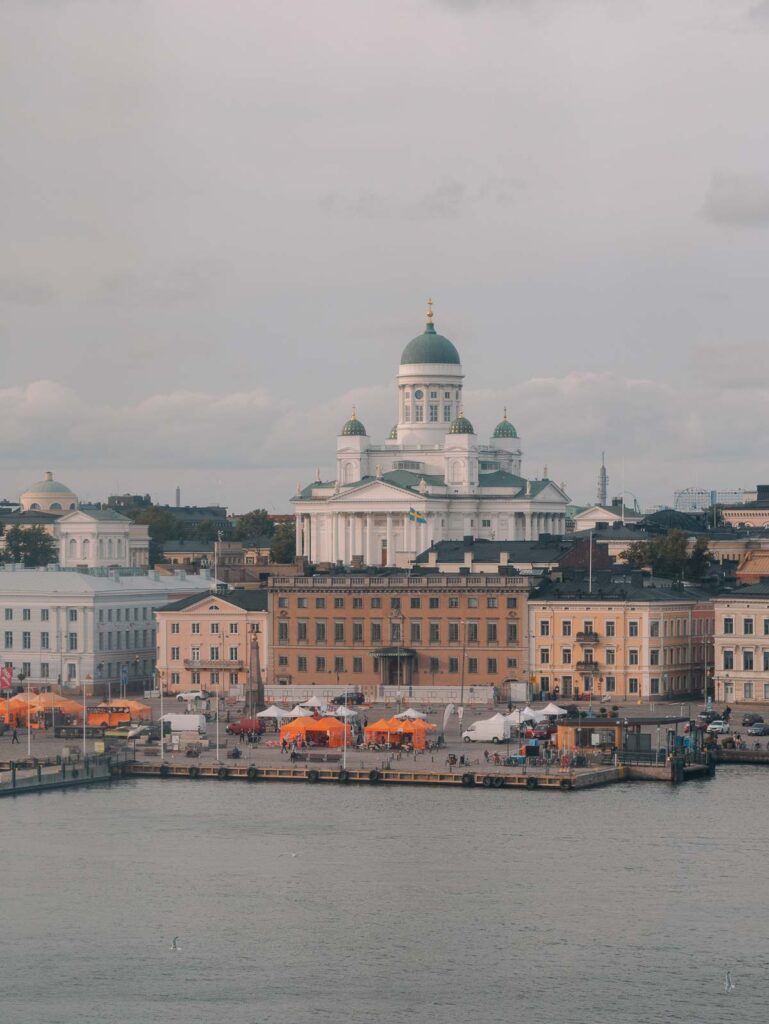
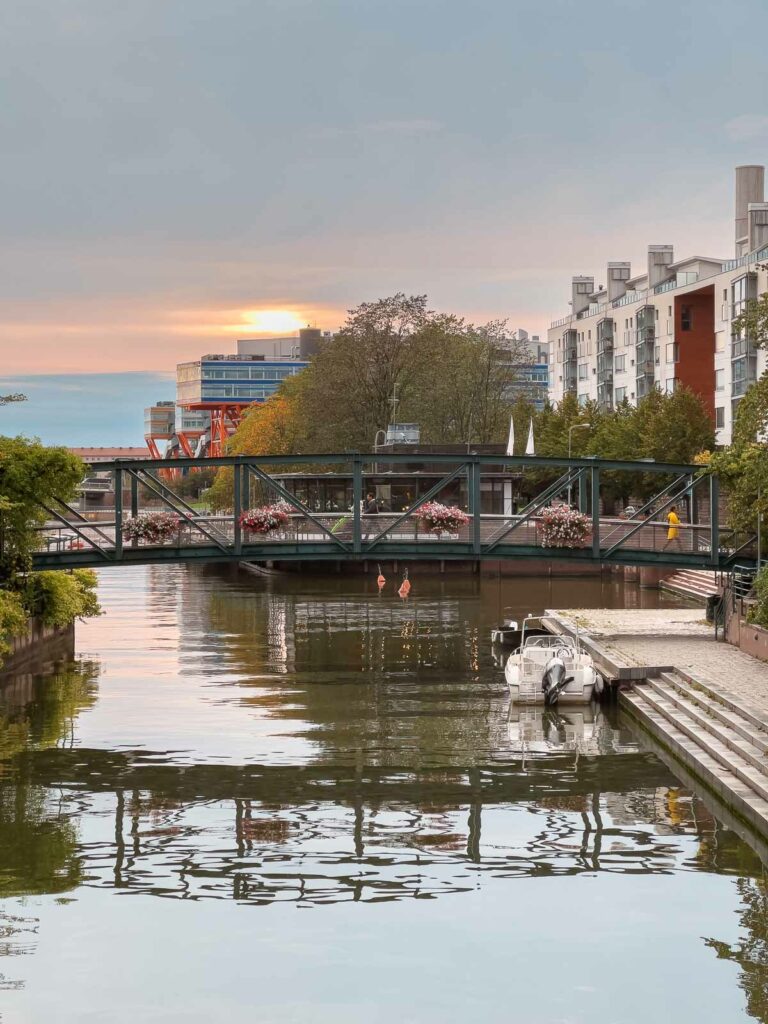
If you’re a tourist then you’ll want to see the sights and then head up north to Finnish Lapland, but if you’re a digital nomad looking to stay somewhere in Northern Europe for an extended period of time, Helsinki is actually perfect! It’s cheaper than Copenhagen, Stockholm and Oslo, there’s speedy WiFi everywhere, it’s super safe and it offers easy access to other Nordic countries and the Baltics for short getaways.
I spent a few nights at UNITY Helsinki and adored it, they have furnished loft apartments available for both short and long stays, as well as excellent facilities including a fully equipped gym, laundry, sauna, rooftop bar and a huge coworking space with standing desks. I could’ve spent a month here easily!
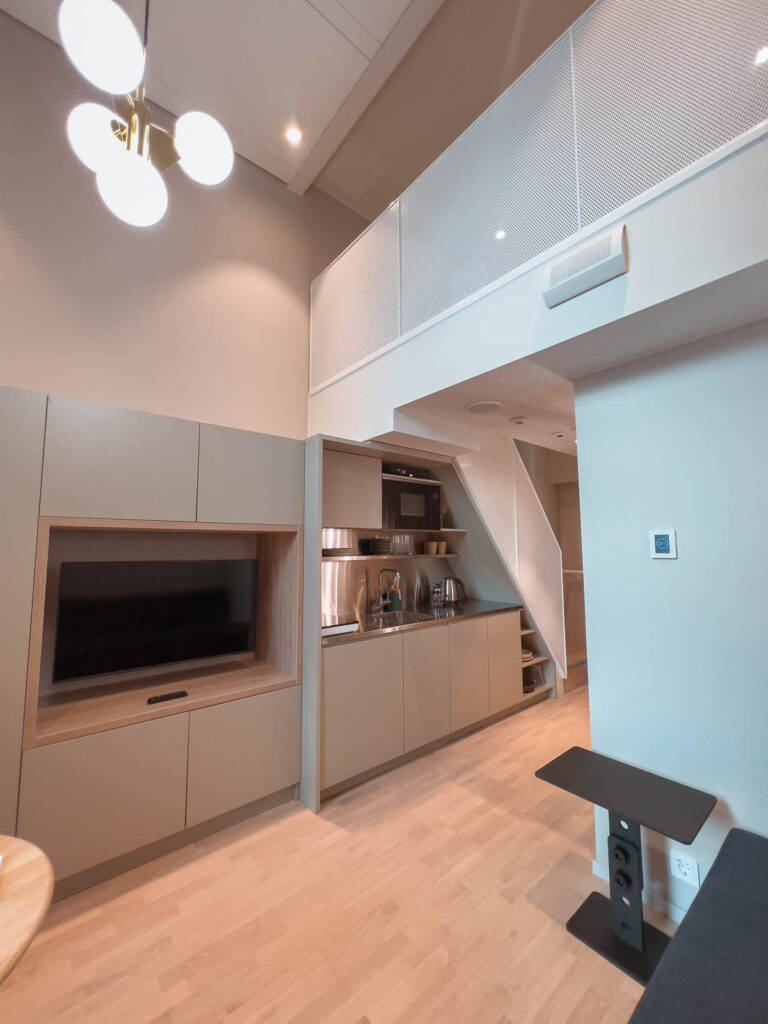
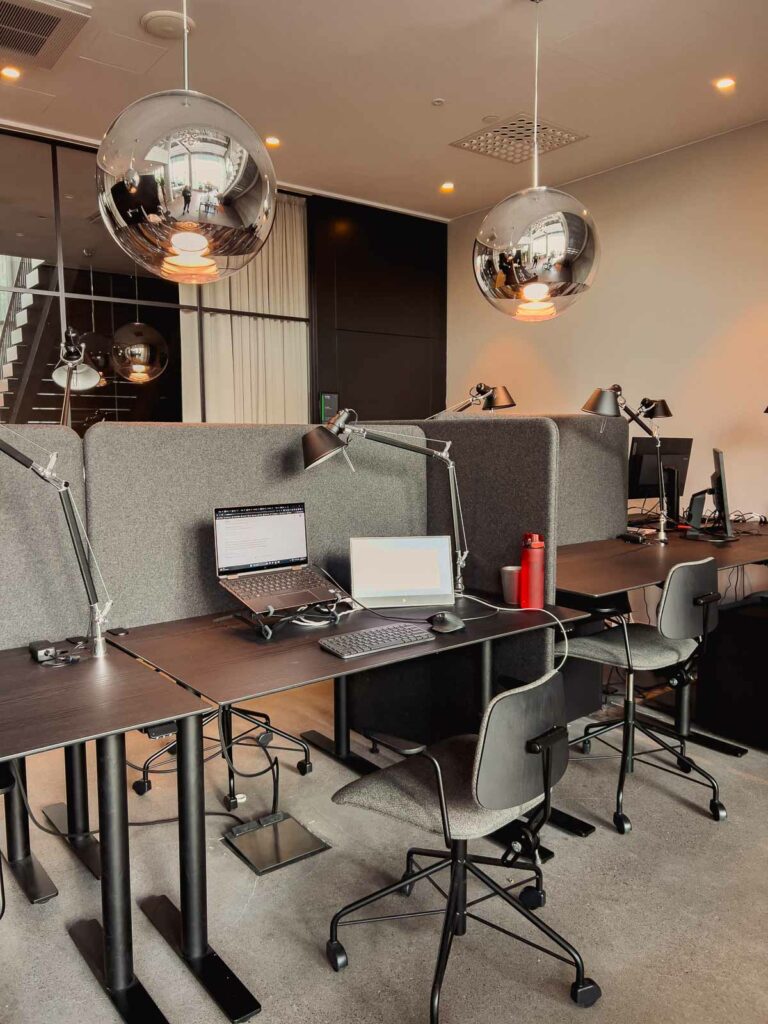
How to get from Helsinki to Rovaniemi
Make your way north to Finnish Lapland for a totally different experience than anywhere else on this Scandinavia itinerary. You can catch a night train that takes just under 12 hours, it’s lovingly known as the Santa Claus Express because you’ll arrive just a short distance from Santa Claus Village, where you can catch the jolly man year-round!
The night train has normal seats available as well as private sleepers, but the private sleeper is totally worth the upgrade. Ticket prices do depend on demand but to give you an example, looking for tickets for travel next month, a seat on the train is €59.50 and it’s only an additional €29.50 to upgrade to a private sleeper. It’s a no brainer.
You can also fly from Helsinki to Rovaniemi if you’re keen for a quicker journey.
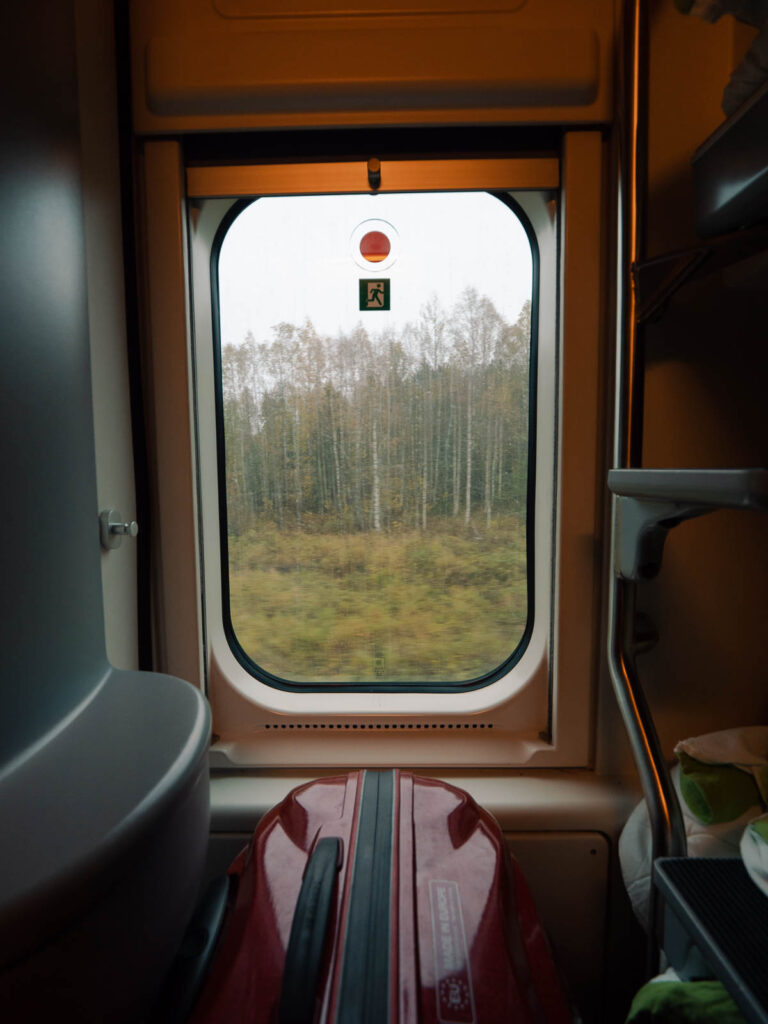
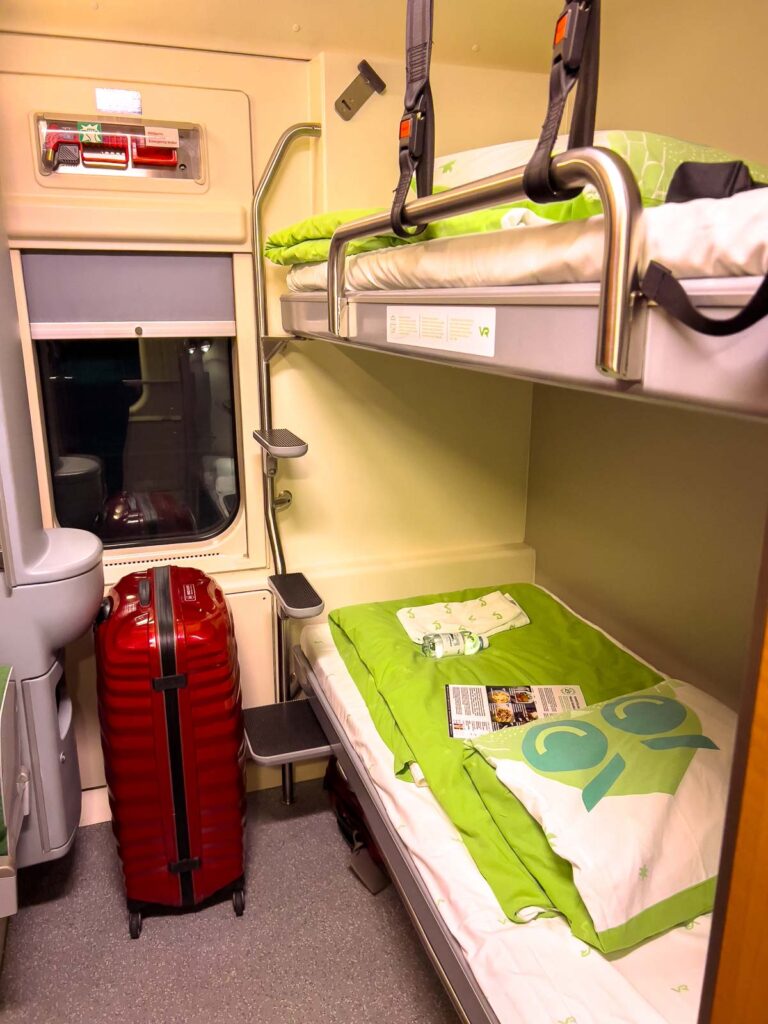
3-4 days in Rovaniemi
Rovaniemi is the capital of Lapland, and it’s the gateway to unspoiled Arctic wilderness. The adventures on offer vary drastically depending on when you go.
In the colder months it’s the epitome of a winter wonderland, with snow-blanketed forests, ice hotels and the magical Northern Lights. Your best bet for catching it in all its snowy winter glory is to visit between mid-November and mid-April, but the aurora is actually best viewed in September/October and February/March, where there’s enough darkness without the cloud cover that mid-winter brings.
If you’re visiting in summer, Lapland is all about the outdoors, with hiking trails, fishing and canoeing on offer.
Here’s a quick list of the best things to see and do in Rovaniemi:
- Chase the Northern Lights. I’d really recommend booking a tour for this, the local guides can understand the forecasts, read the weather and know all the best spots with open skies and minimal light pollution. I joined the Special Aurora Hunt with Wonderlapland, an epic 8-12 hour expedition which gives an almost 100% likelihood of seeing the lights! Your guide will drive you as far as they need to, for as long as it takes, to find clear skies to witness the aurora. Miguel drove us four hours north of Rovaniemi, spent three hours marveling at the bright lights dancing across the sky, then got back to my hotel at 4.30am. It was long night, but 1000% worth it!
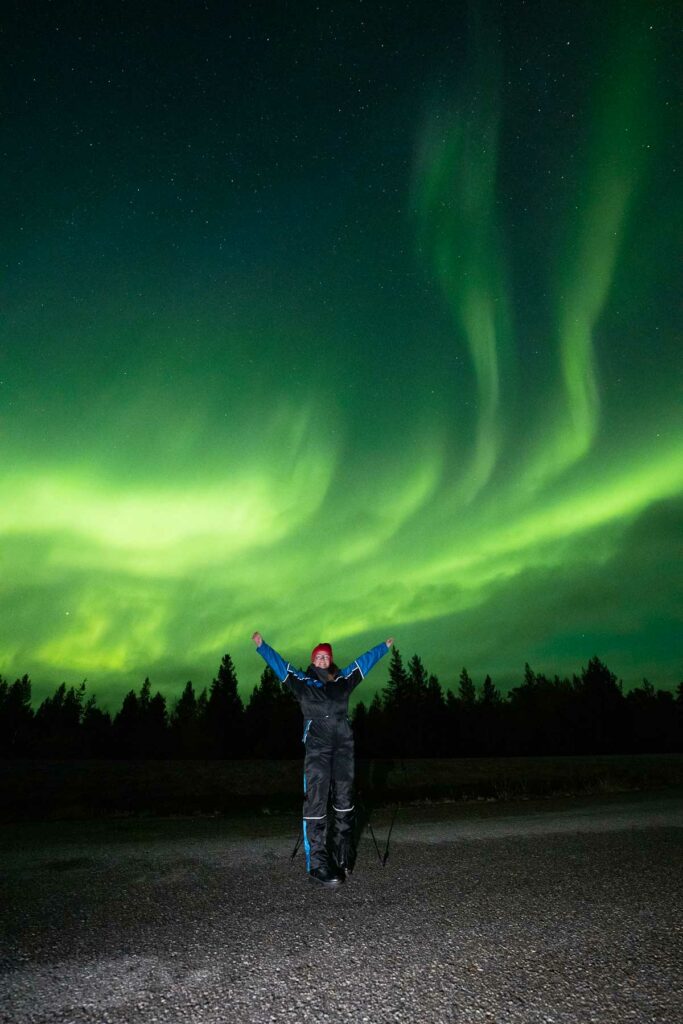
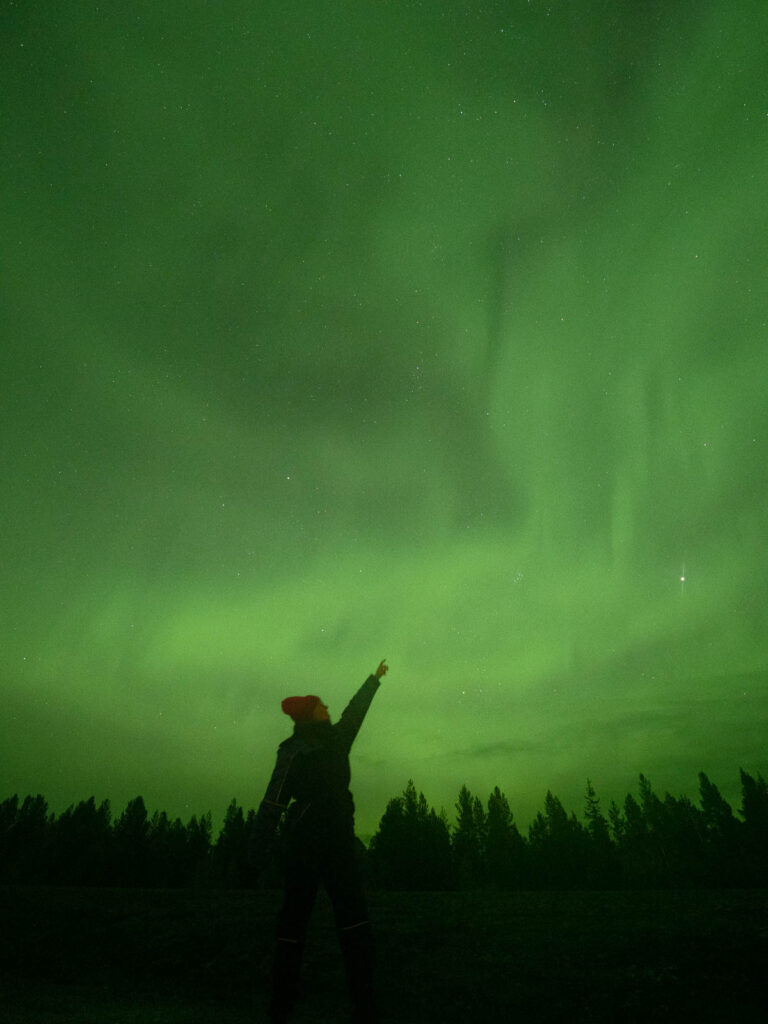
- Visit Santa Claus Village and meet Santa at any time of the year, it’s free to say hello but you have to pay (a lotttt) for a photo
- Experience the thrill of a husky safari (ethically of course)
- See Arctic animals like wolves, brown bears, arctic foxes and lynxes in their natural habitat at Ranua Wildlife Park, a responsible wildlife park with animal welfare, conservation and rehabilitation at the forefront of their organisation.
- Zoom through the snowy forest on a top-rated snowmobile tour, or take it slow and steady with a snowshoe tour instead
- Treat yourself to a delicious brunch at Cafe & Bar 21, this was the best meal I had during my 10 days in Finland! They’re famous for their savoury waffles, I had the smoked salmon one and it was divine 🤤
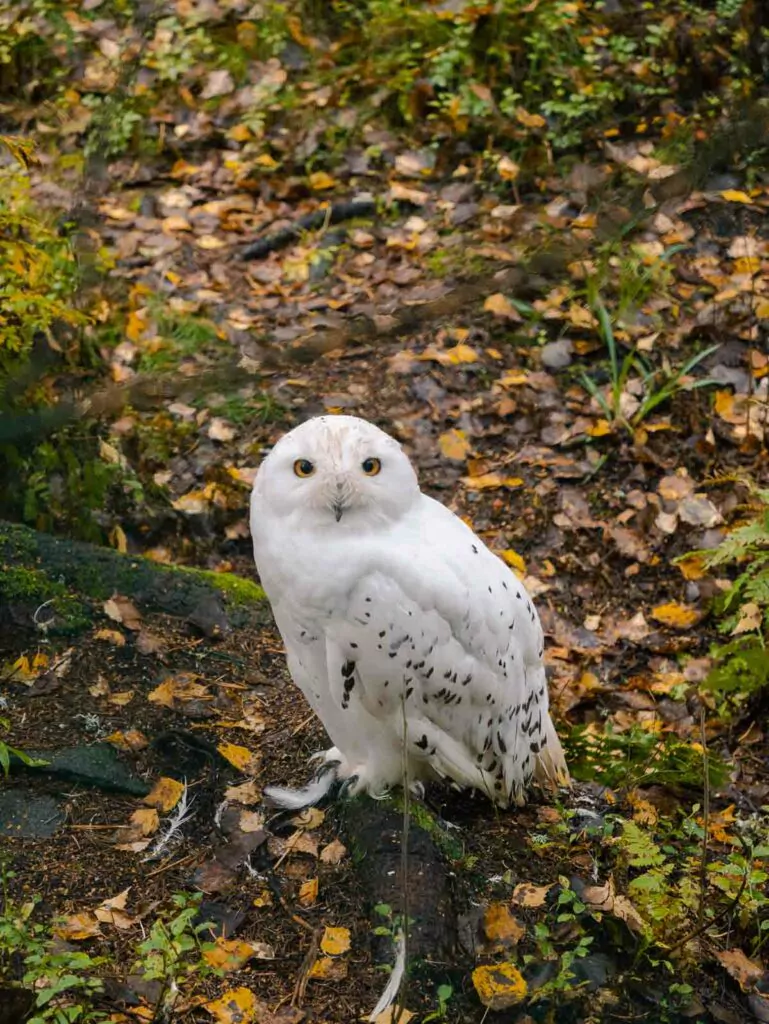
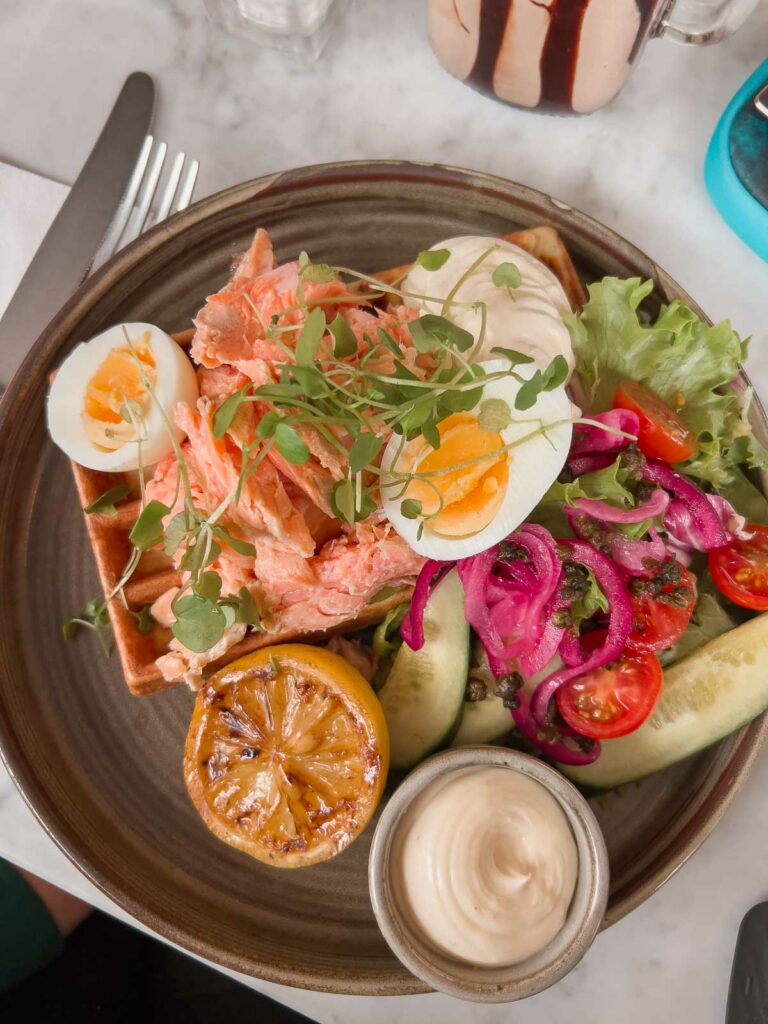
- Hike through Korouoma Canyon and see frozen waterfalls
- Immerse yourself in Arctic culture and history at Arktikum Science Centre
- Rest and rejuvenate with a sauna session and an Arctic plunge in a lake, or try out the unique Snow Sauna at Arctic Snowhotel and indulge in a three course meal of traditional dishes at Kota Restaurant afterwards
- Sleep in an igloo! I loved my time at Santa’s Igloos Arctic Circle, watching the Northern Lights from the comfort of your bed is something that should be on every traveller’s bucket list.

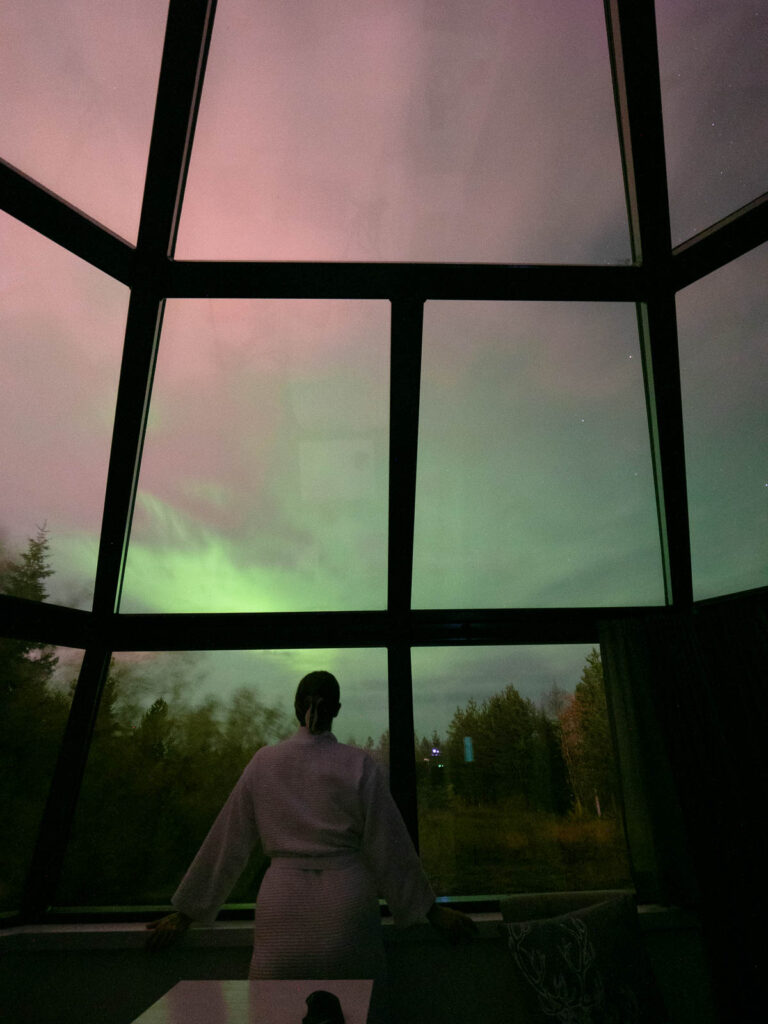
In terms of accommodation in the city, I can vouch for Santa’s Hotel Santa Claus, it’s newly renovated with really comfortable and spacious rooms, and the suites have private saunas!
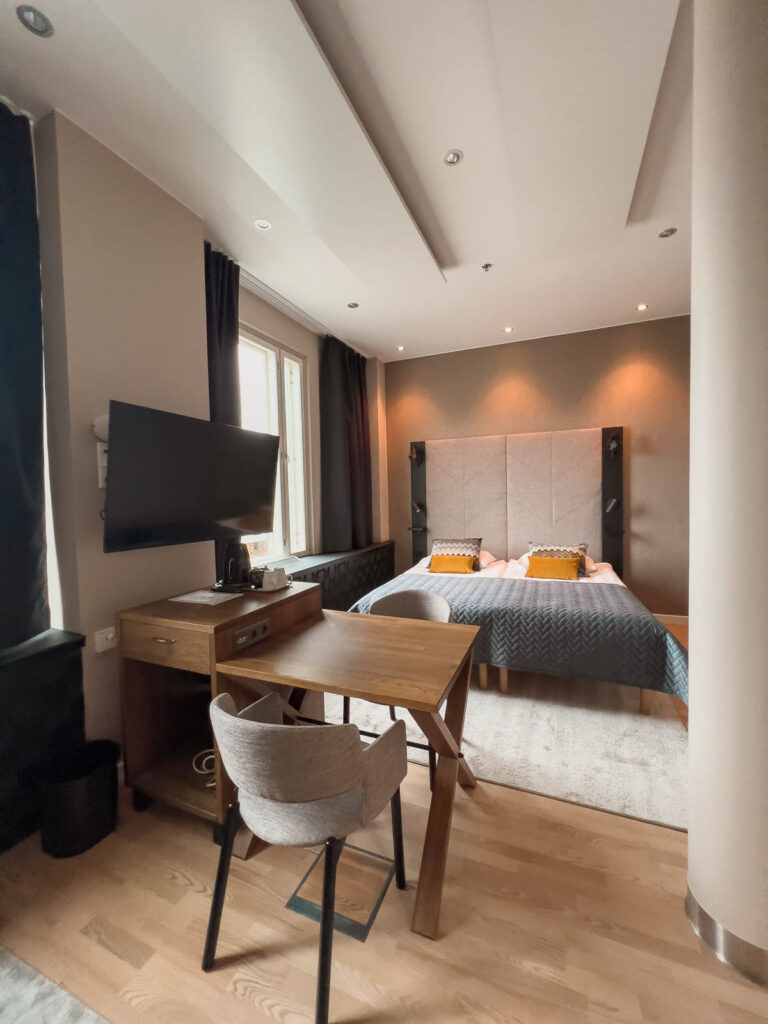

And/or add on the Baltics
You could also add the Baltic countries onto this Scandinavia itinerary, either instead of or in addition to Finland.
If you’re coming from Finland, you can catch a quick and easy ferry from Helsinki to Tallinn in Estonia, it’s only a couple of hours so you could even do it as a day trip. These ferries run multiple times a day year-round.
Getting from Stockholm to the Baltics is a bit trickier, the information and timetables online are super inconsistent so you’ll need to check with the actual companies to see what options there are for your travel dates. There is a Stockholm to Tallinn night ferry that runs every 1-2 days depending on the season, and there used to be a Stockholm to Riga (Latvia) ferry but that route is currently suspended (as of March 2024) with no notice of when it’ll be back.
Once you’re in Tallinn, you could enjoy a cheap and cheerful city break before wrapping up your trip, or extend further into Latvia and Lithuania. The train network in the Baltics is limited, but there are easy bus routes between Tallinn and Riga, and Riga and Vilnius.
From Vilnius there are direct trains to Warsaw and Krakow, so you can continue your Europe trip if you wish!
If you have less than three weeks in Scandinavia
If you’ve got less than three weeks in Scandinavia, you’ll want to reduce your travel days for sure.
You could cut Sweden altogether and just fly from the Lofoten Islands back to Oslo to end your trip, or you could stick to southern Norway and Sweden and travel from Oslo to Stockholm after your time in Bergen (i.e. no Lofoten Islands or Trondheim), or you could just visit the four Nordic capitals and have 3-4 days each in Copenhagen, Oslo, Stockholm and Helsinki.
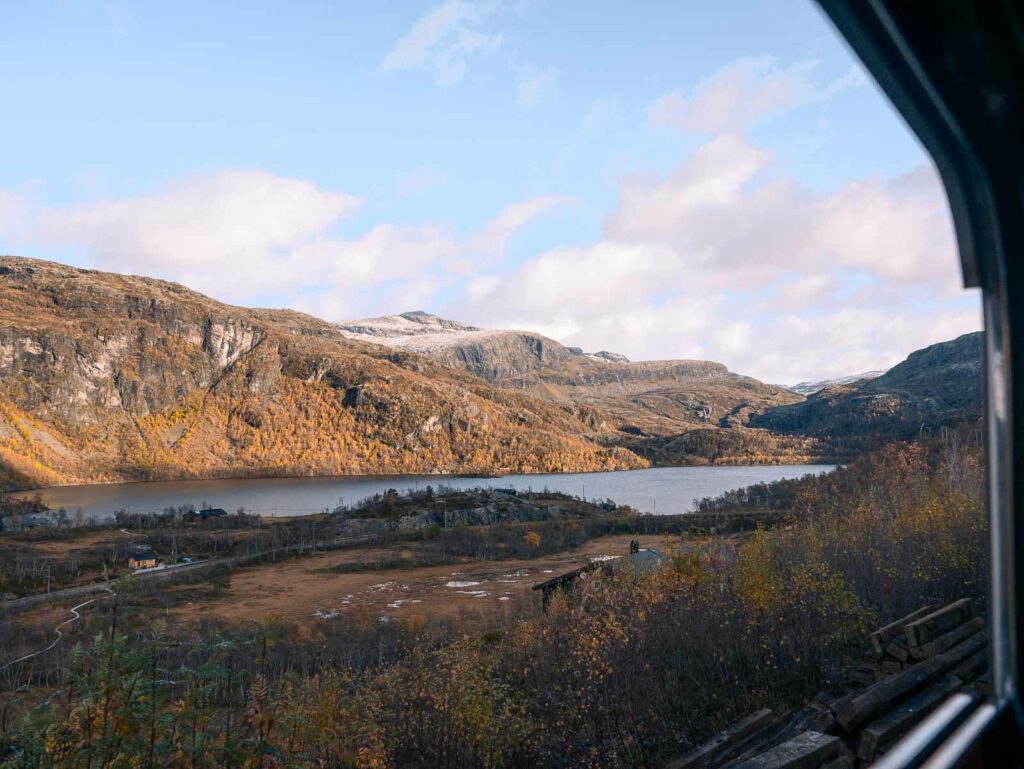
If you just want to travel at a slower pace
For a slower paced trip over three weeks in Scandinavia, I’d really recommend one of the Norway cruises I mentioned earlier, the Huritgruten or Havila Voyages.
You could still start in Copenhagen or go straight to Oslo and make your way to Bergen via Flåm, then jump on a cruise for a peaceful journey further north. You could disembark at the Lofoten Islands, or continue on the ship all the way to Kirkenes at the top of Norway before flying back to Oslo or making the return trip on the ship.
Travelling this way means you’re only unpacking a few times rather than every 2-3 days, and you can enjoy the journey without worrying about train or flight times. Sounds like the dream!

If you prefer cities over nature
If you’re a busy-body who loves visiting new cities, indulging in local cuisine, visiting museums and searching the shops for trinkets to take home, you could swap the Lofoten Islands for some more time in Oslo and an additional 1-2 night stop in Gothenberg, Sweden.
If you prefer nature over cities
And if you’re the opposite and want to get as far away from busy streets as possible, I’d recommend you focus just on Norway and drop Copenhagen and Stockholm altogether.
With three weeks in Norway you could see much more of the country, adding on Stavanger south of Bergen and Geiranger to the north, add on more time for the Lofoten Islands, and head up to Tromso to end your adventure.
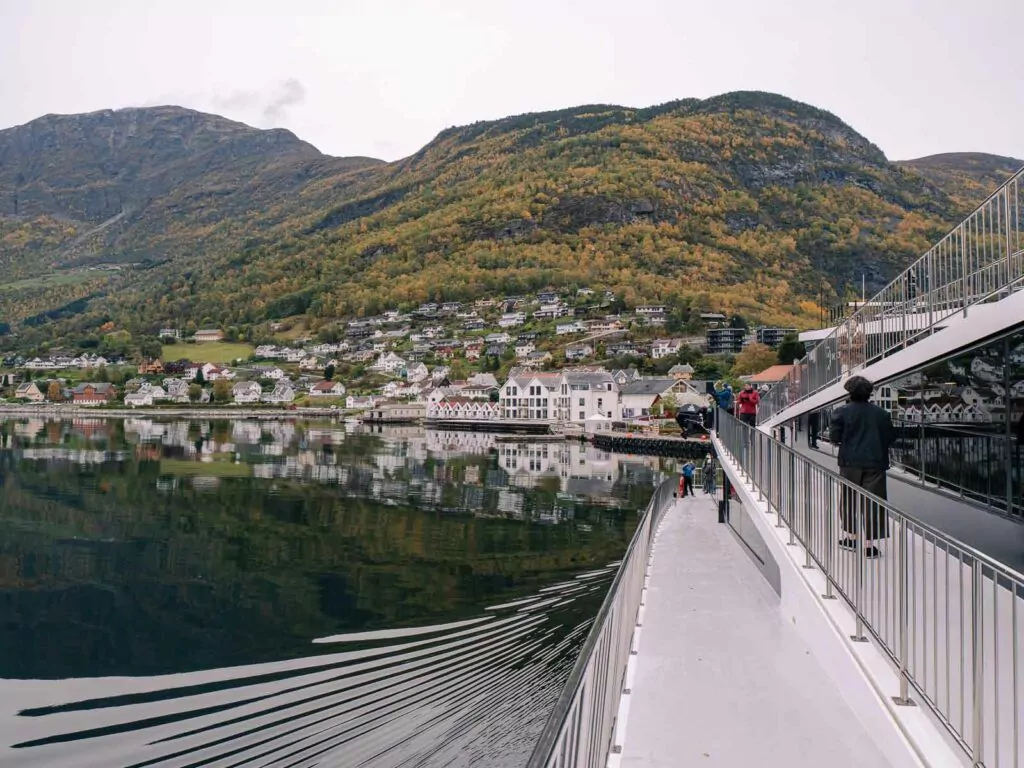
3 week Scandinavia itinerary FAQs
Should I train, fly or drive in Scandinavia?
It really depends on your travel style, budget and time restrictions. Trains are great for comfort, scenery and can be pretty cost-effective with a rail pass, flights are going to be pricier but will save you time, and driving gives you flexibility but is super expensive unless you’ve got a few people to split the cost.
Is Scandinavia safe for solo female travellers?
Yes! The three Scandinavian countries consistently rank among the safest countries in the world, even for solo women. In the cities you should use your common sense like you would in any other big city, and in the outdoors you should let your hotel or an information centre know if you’re going on a solo hike so someone can raise the alarm if you don’t make it back.
What currency do they use in Scandinavia?
The countries all have their own currency, there’s the Norwegian Krone (NOK), Swedish Krona (SEK) and Danish Krone (DKK).
Do they use cash or card in Scandinavia?
Cards are accepted throughout the entire region, but I’d recommend having a small amount of Euros in your suitcase during any Europe trip for emergencies (they don’t accept Euros but you’ll be able to exchange them easily). I use Wise as my travel card all over the globe, you can easily load money from your home currency and convert it to different currencies in seconds, with a way better exchange rate than any bank and lower fees.
PHEW well that got out of hand, as it always does when I write these gigantic itineraries! I hope this Scandinavia three week itinerary has helped you plan out your trip, if you have any questions then please feel free to pop them in the comments below and I’ll get back to you as soon as I can.
OTHER SCANDINAVIA TRAVEL GUIDES:
- The perfect two week itinerary for Norway
- The ultimate four day Norway itinerary (for first-timers)
- A guide to the Flåm Railway, Norway
- Copenhagen solo travel guide
- What it’s like sailing the iconic Norwegian Coastal Route
OTHER EUROPE ITINERARIES YOU MIGHT LIKE:
- How to spend 1, 2 or 3 weeks in Northern Italy & Switzerland
- How to spend two weeks in Poland
- How to spend two weeks in the Balkans
- The ultimate two month Europe itinerary
- The ultimate three month Europe itinerary (super comprehensive!)
- Puglia itinerary without a car
MORE EUROPE TRAVEL INSPIRATION:
- The most beautiful train rides in Europe
- 27 Europe holiday ideas to inspire you
- The ultimate Italy bucket list
Or you can browse all Europe blog posts and all train travel blog posts. Happy travels!
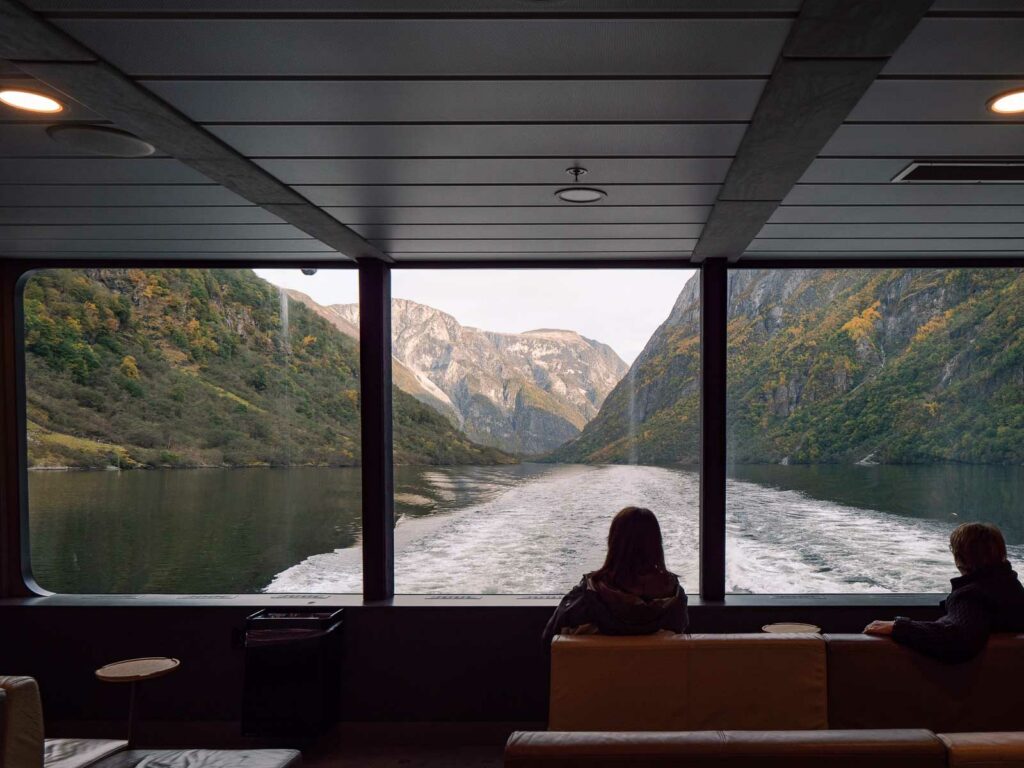
MY GO-TO TRAVEL PLANNING RESOURCES
Flights ✈️ I use Skyscanner to find the best flights for my trip and then I’ll always book direct with the airline to protect myself from having to deal with dodgy third parties if anything goes wrong.
Trains 🚂 If I’m travelling through Europe, I try to travel by train wherever possible! For an extended trip (2+ weeks) I’ll calculate if a Eurail Pass is worth it, or I’ll book point-to-point tickets through RailEurope or the local train operator.
Accommodation 🛎️ I book almost all of my accommodation through booking.com, they have a user-friendly website + app and many of their options are free cancellation, easily cancelled with a simple click of a button.
Activities 🗽I use GetYourGuide, Klook and Viator to look for activities in the places I visit, or I just Google ‘things to do in [city]’! P.S. If you book anything on Klook you can use the promocode FINDINGALEXXKLOOK to get 10% off
Travel cards 💳 I’m a Wise gal through and through, they’ve been my chosen travel card for more than five years now. You can easily top up your card from your bank account or through Apple Pay, convert your money to local currency, and spend money with minimal fees and the best exchange rates around.
Travel insurance 🩺 I use Cover-More NZ travel insurance for my own trips, I have a comprehensive policy and I’ve only had good experiences with them. Cover-More also has an Australian company, but if you’re from elsewhere then two popular insurance options for global travellers are SafetyWing (cheaper policy, lower coverage) and World Nomads (more expensive but significantly better coverage).
Luggage 💼 I travel with Samsonite Cosmolite suitcases, one 75cm check in bag and a 55cm carry on bag, and I absolutely adore them and will never travel with anything else! They are SUPER lightweight (2.8kg and 1.9kg respectively) so I have much more space for my actual stuff.
Camera gear 📸 I use a iPhone 15 Pro Max for phone photos/videos, and my camera kit includes a Lumix S9 (incredible lightweight full-frame camera, a game changer for travel creators!) with a 20-60mm lens, a Lumix G9 with an 8-18mm and 12-60mm lens, a DJI Mini 3 Pro drone and a GoPro Hero 10. I do all my writing and editing on my ASUS Zenbook 14, it’s lightweight but powerful enough for photo editing and intense blogging sessions.
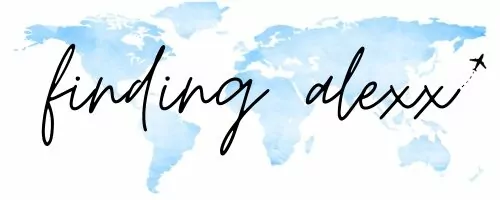
The best suggestions from itinerary to sleep with lots of useful details
Thanks so much, Alexx
You are an angel
I shall enjoy my trip to the Nordic countries later this year